In memory of those who died. The page is extracted from document / booklet titled “AIR GROUP SEVENTEEN REVIEW 1944-1945” which was found on FOLD3 web site.
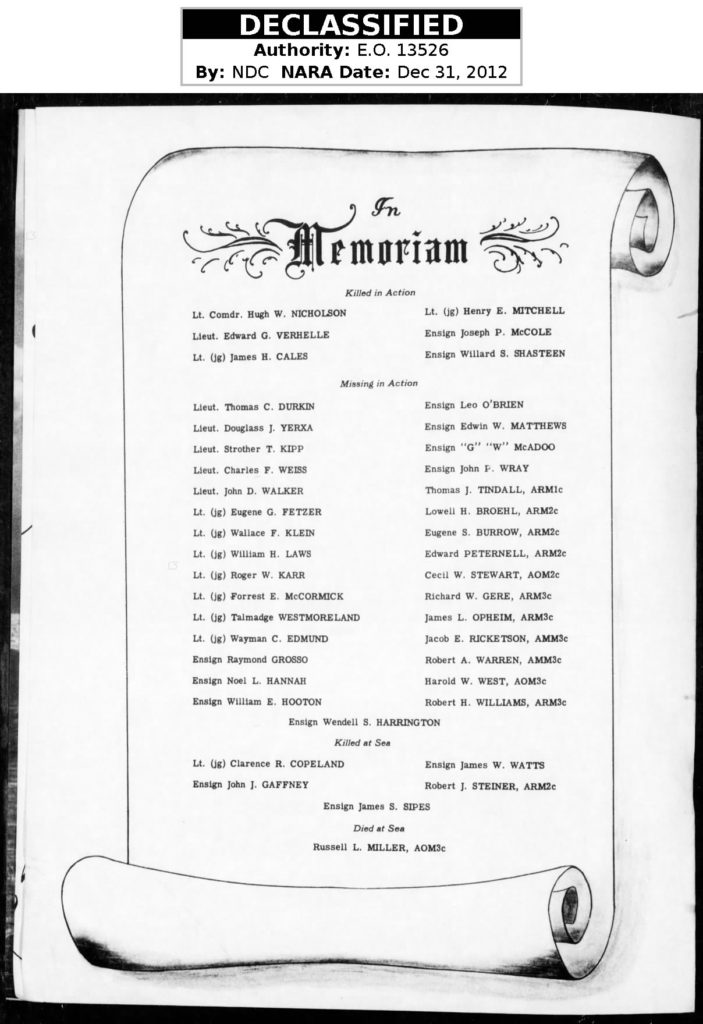
In memory of those who died. The page is extracted from document / booklet titled “AIR GROUP SEVENTEEN REVIEW 1944-1945” which was found on FOLD3 web site.

This posting is from documents declassified. The scan of original image appears for each page. Over time, we plan to type the text adjacent to each page so it becomes searchable.
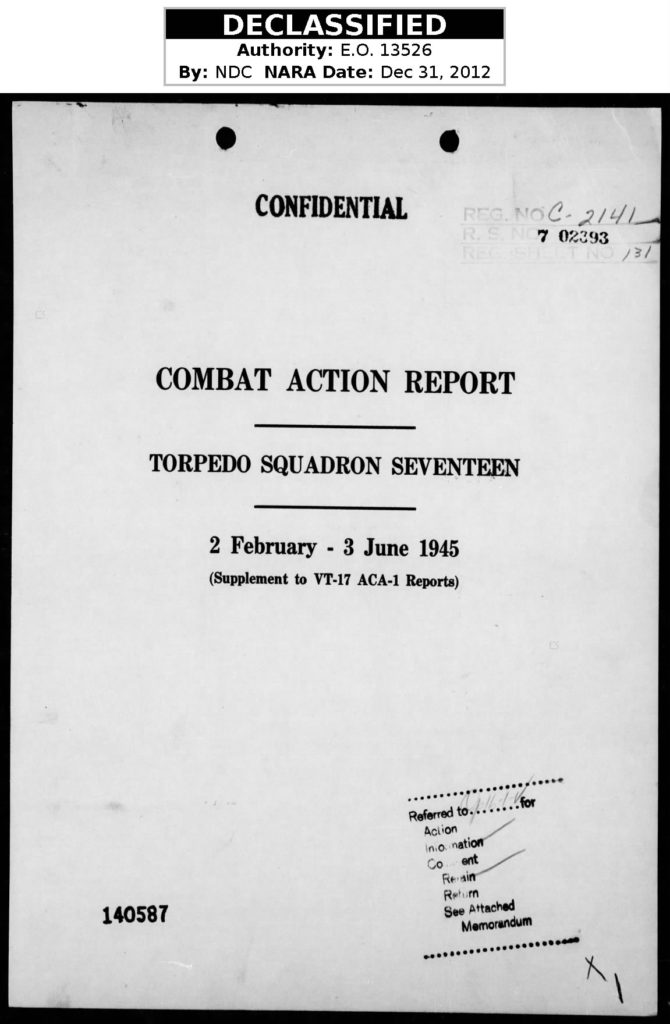
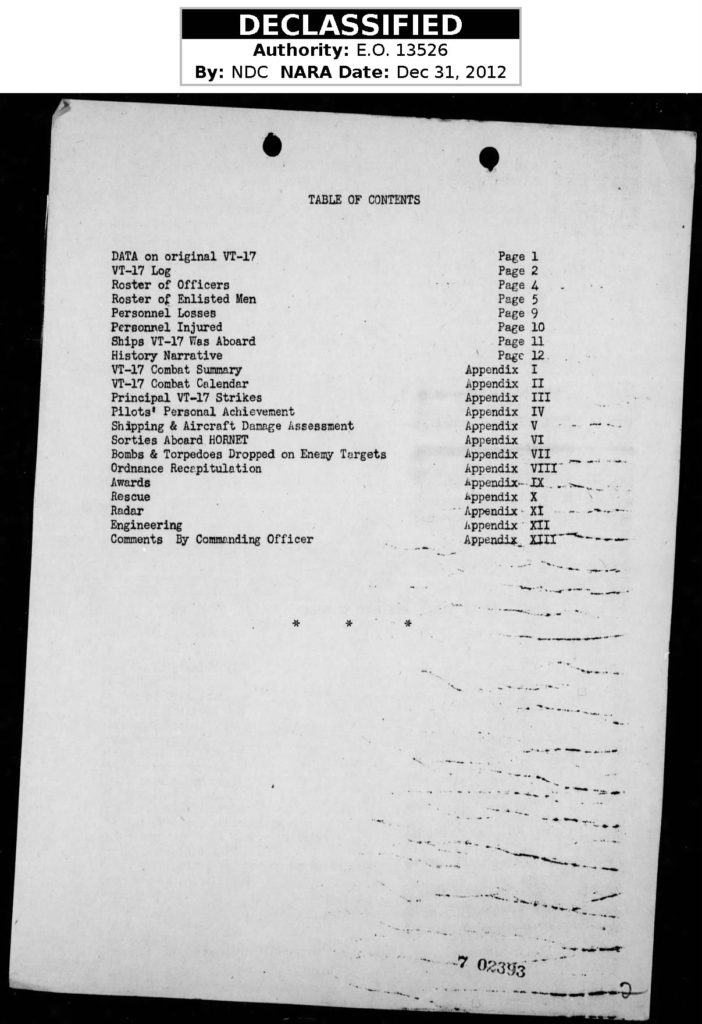
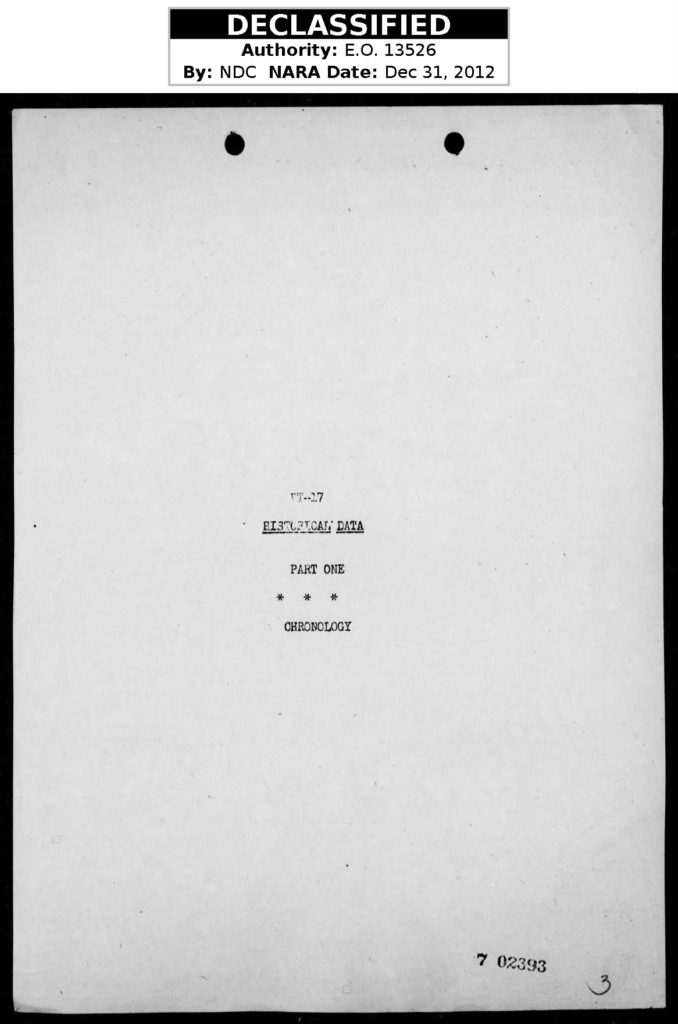
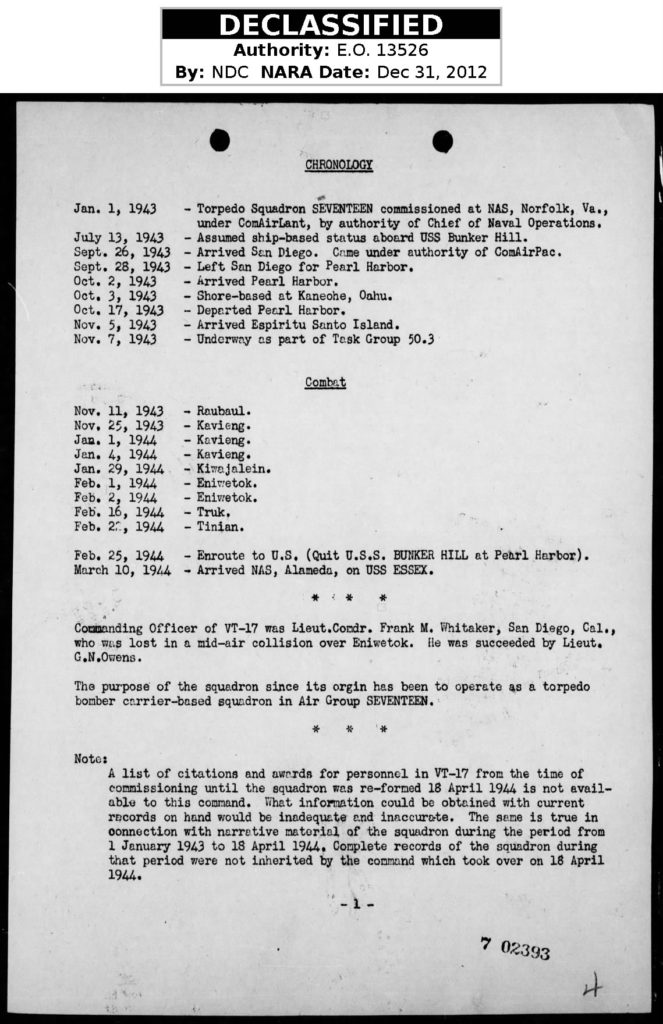
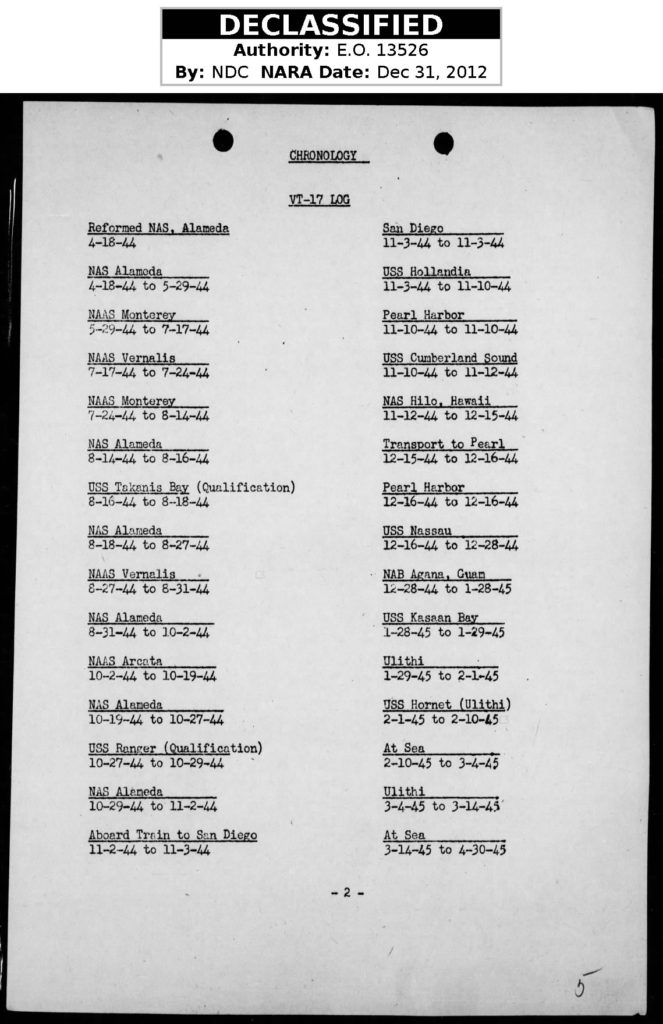
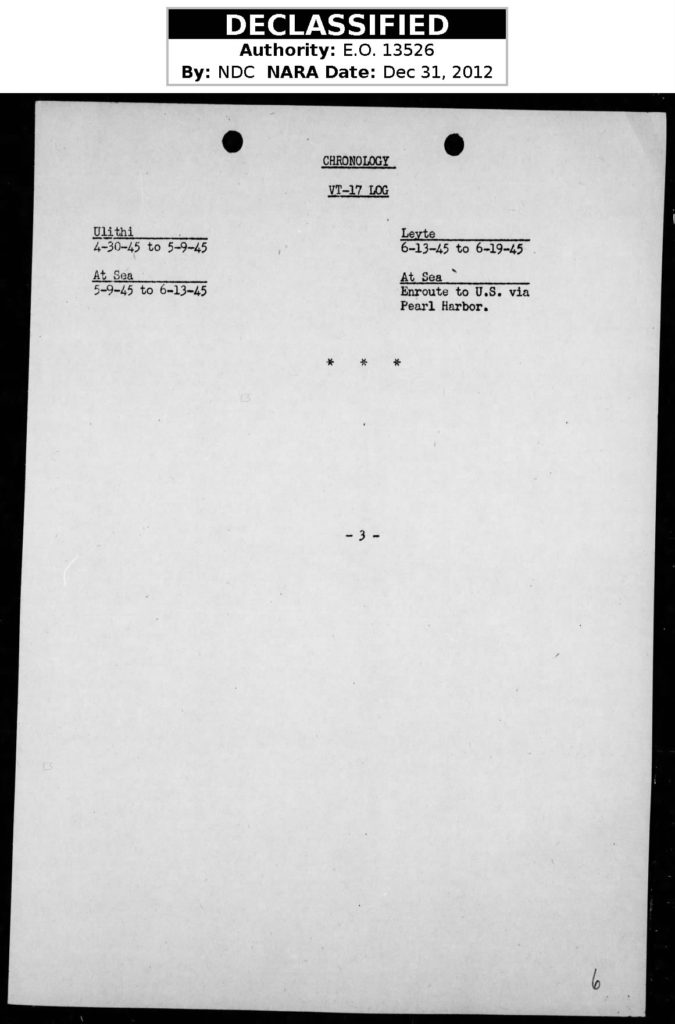
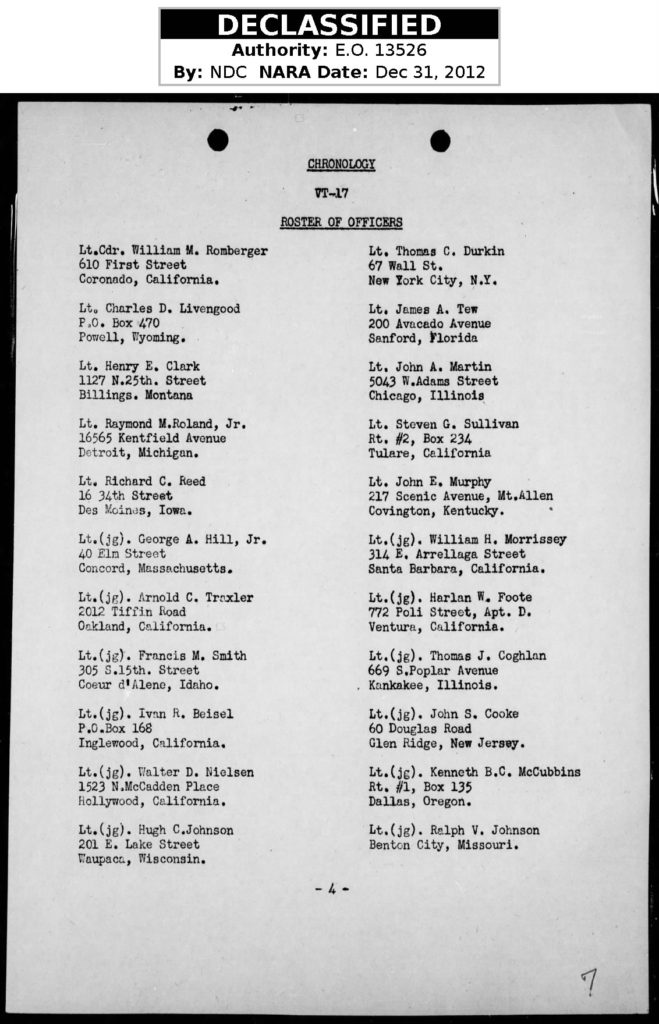
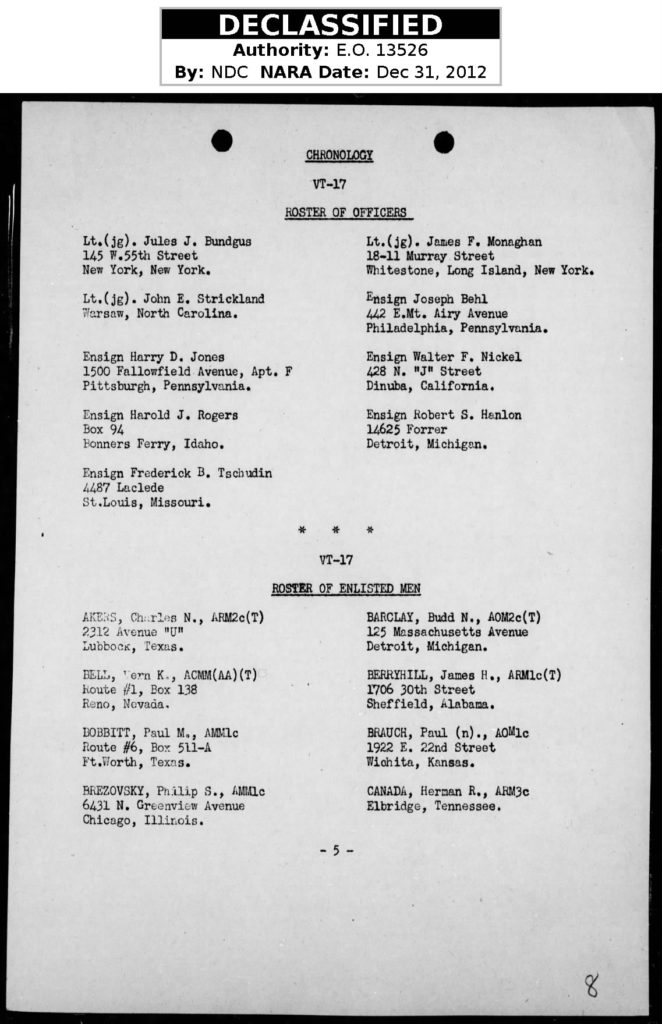
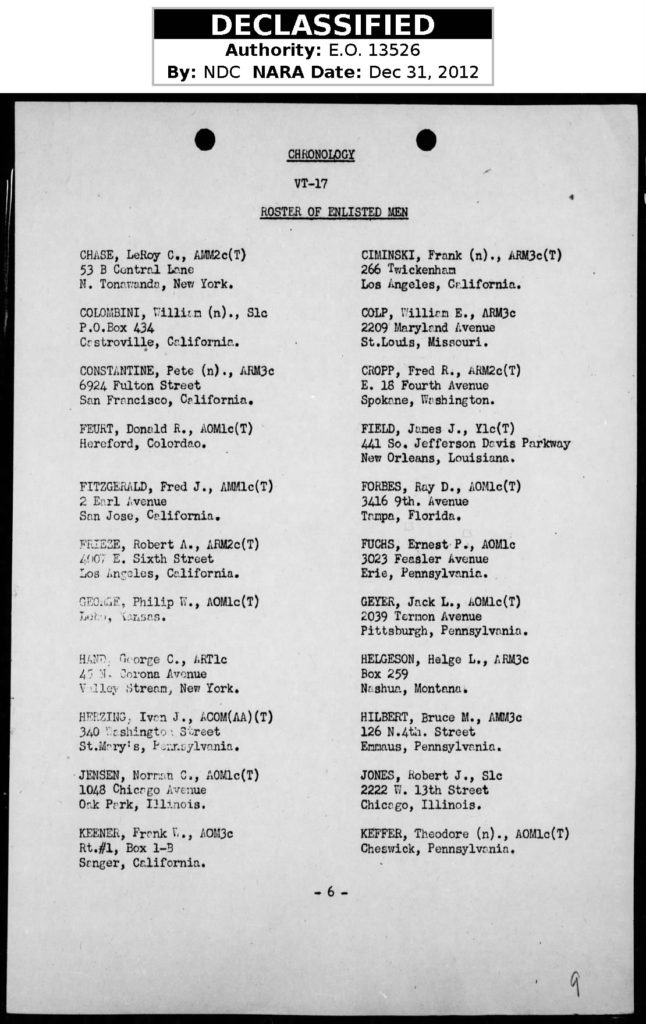
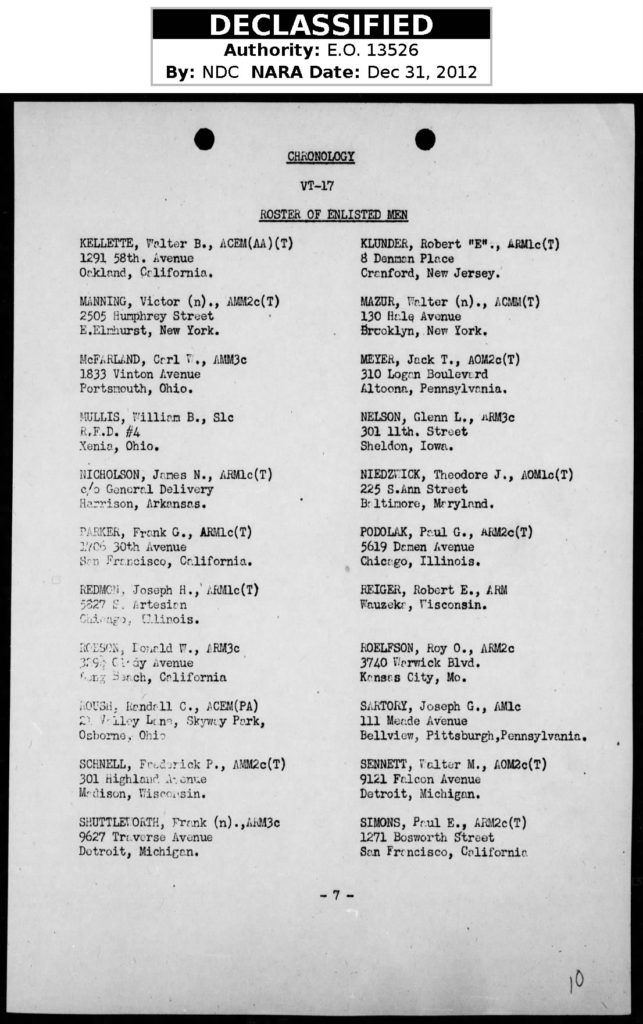
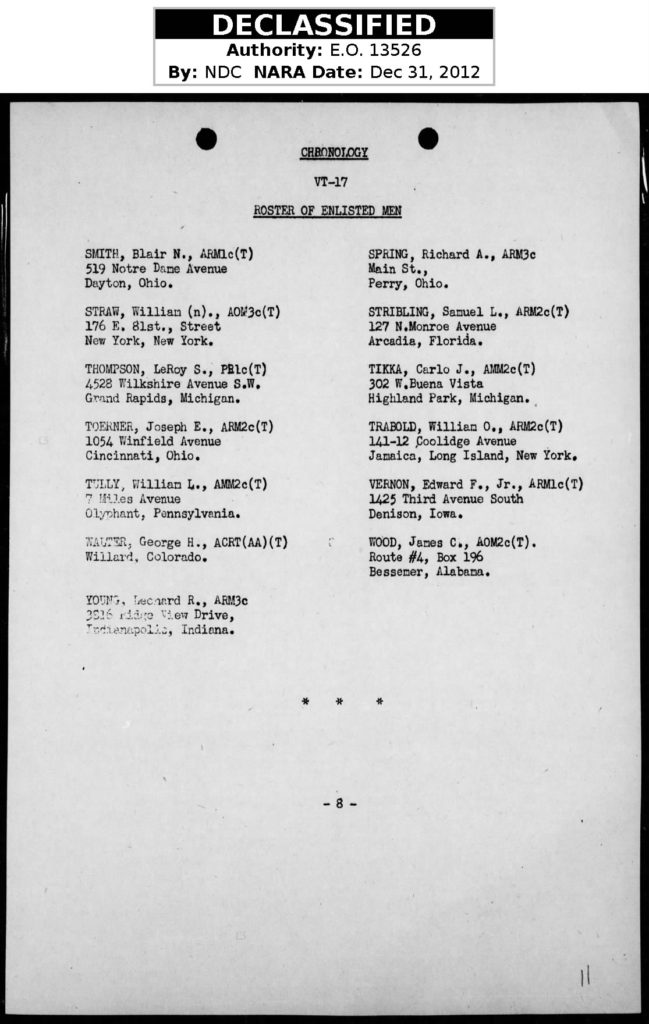
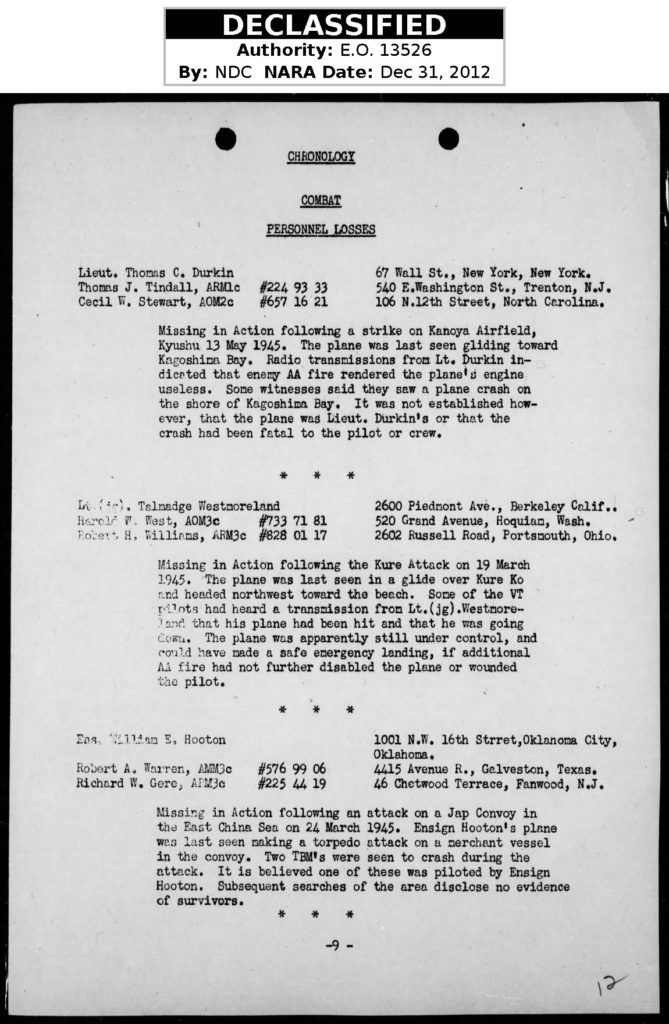
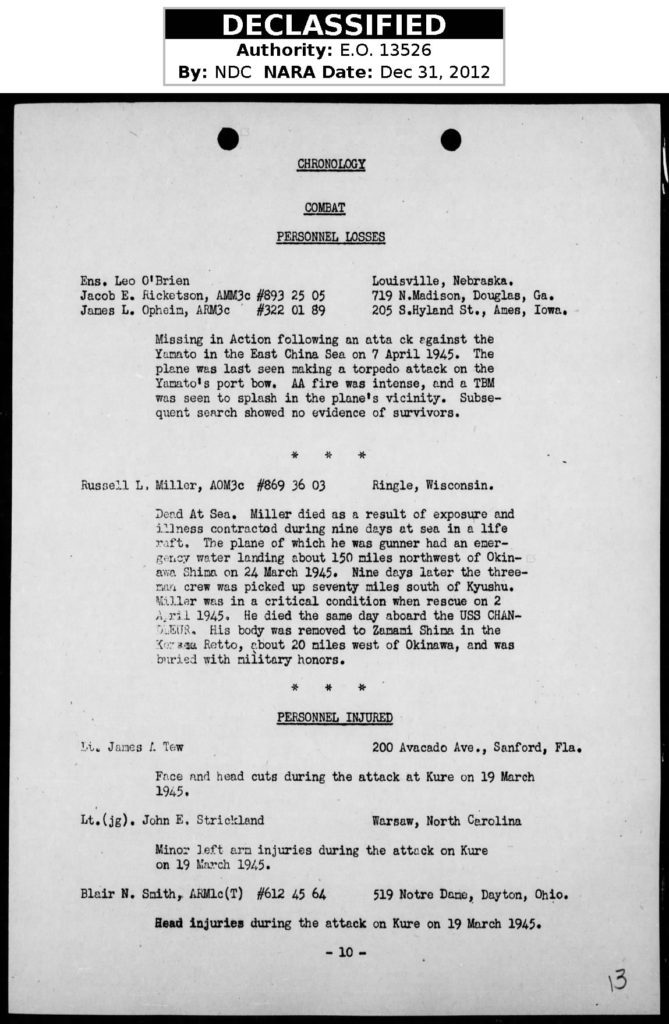
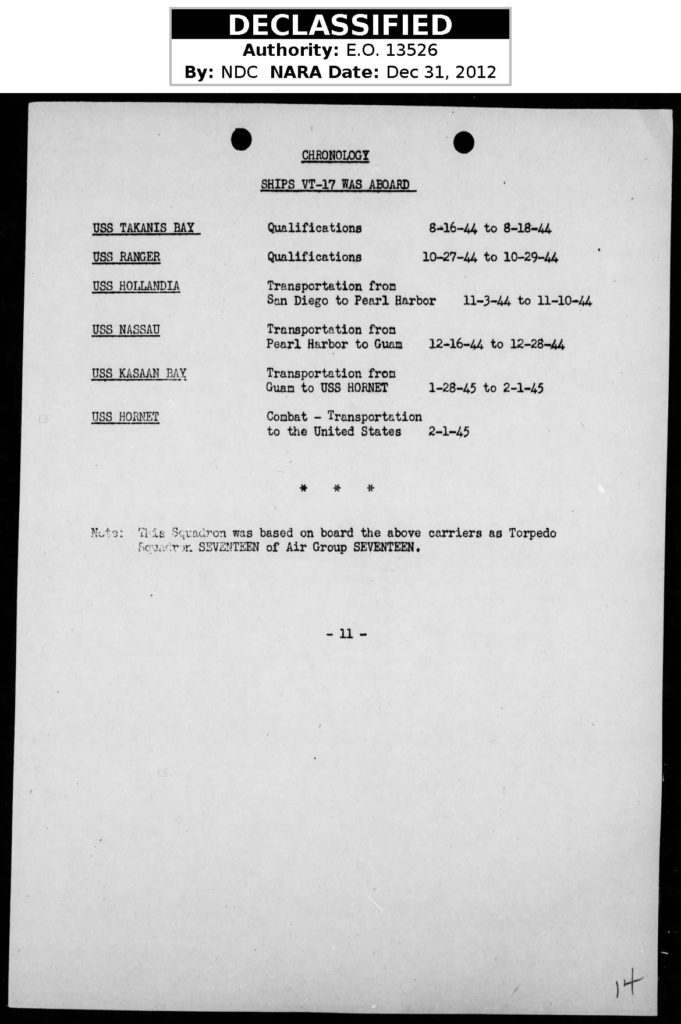
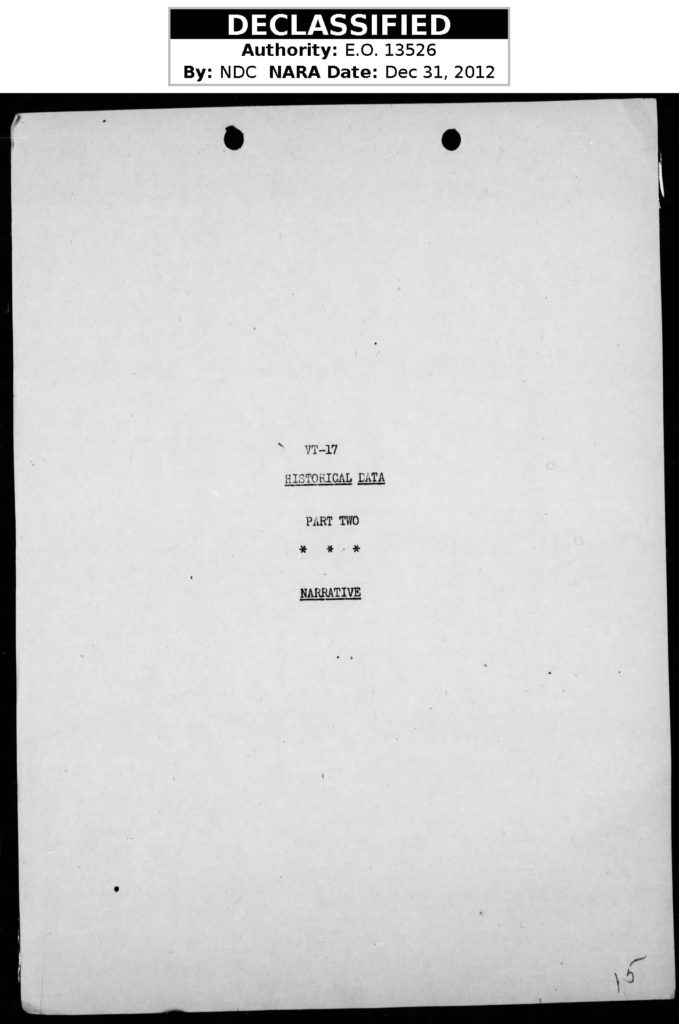
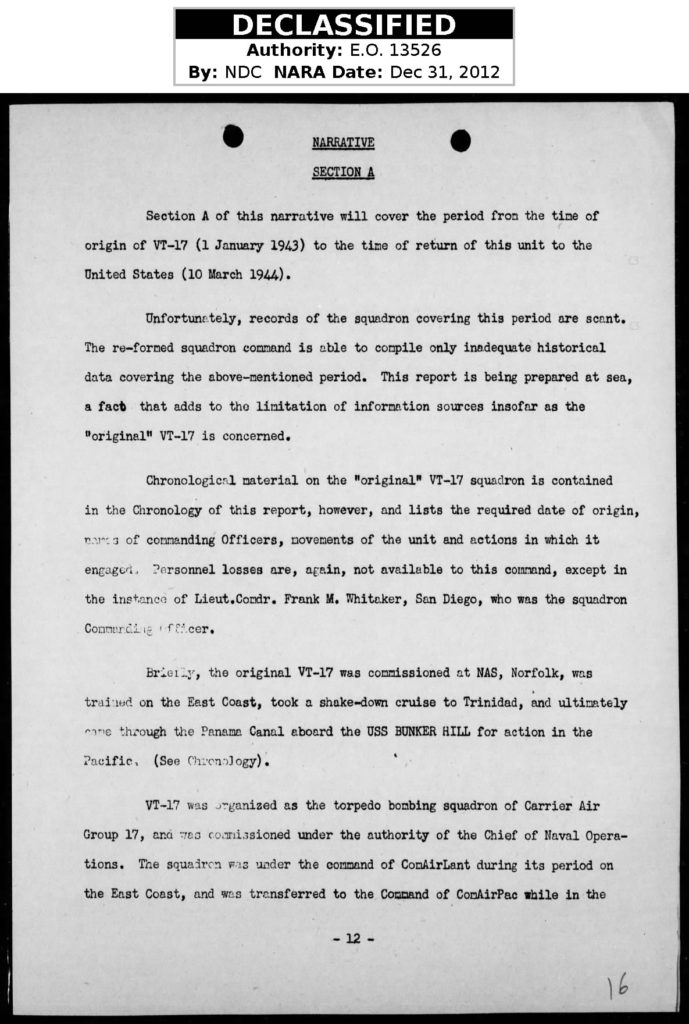
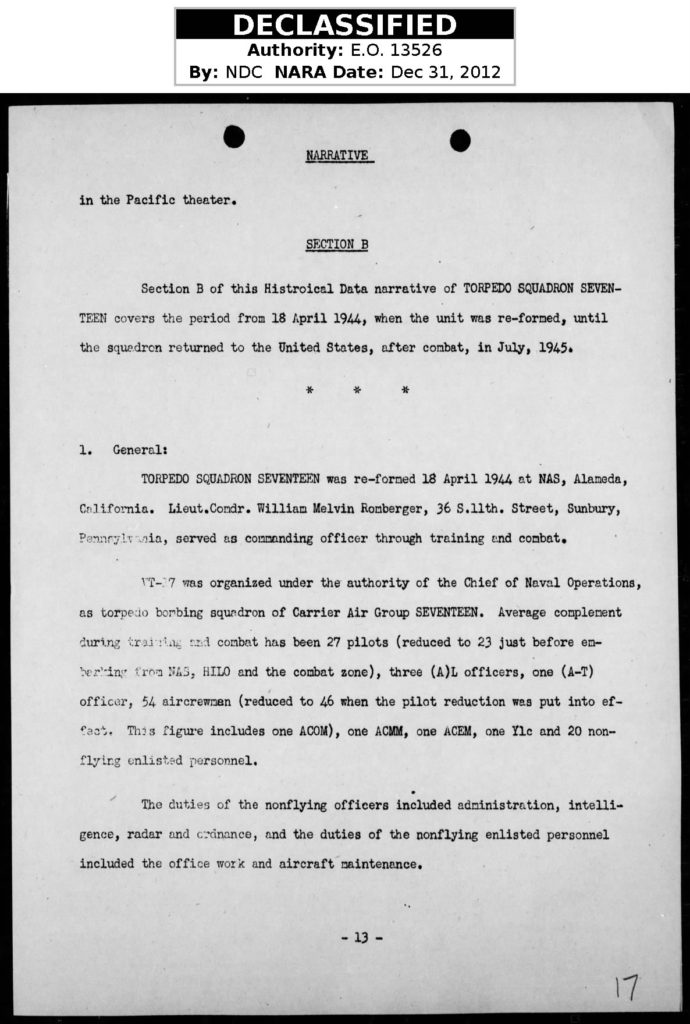
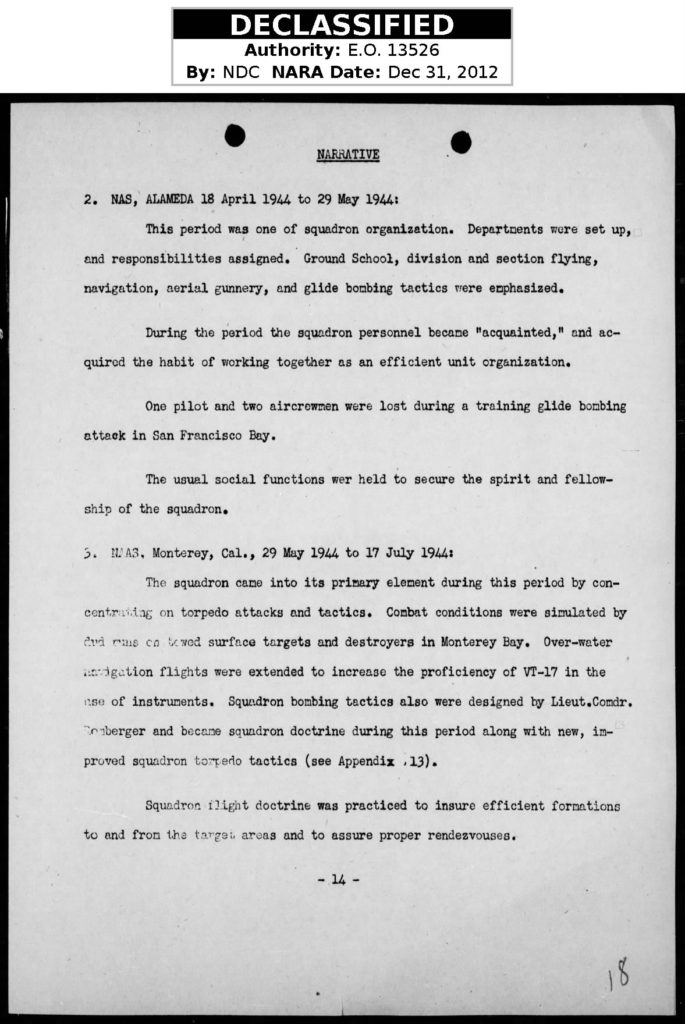
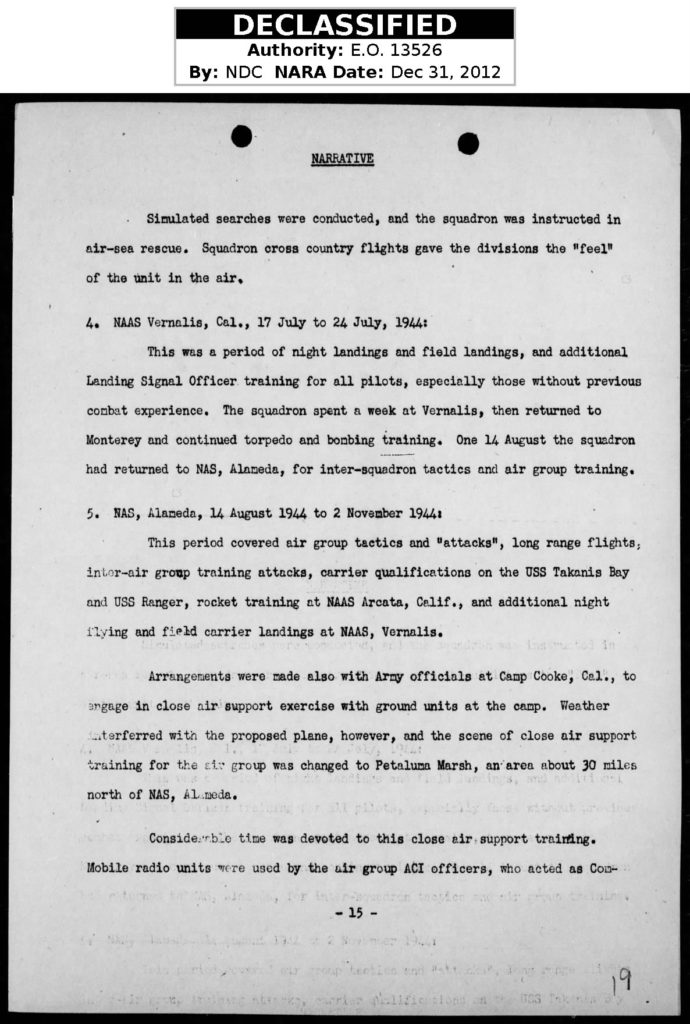
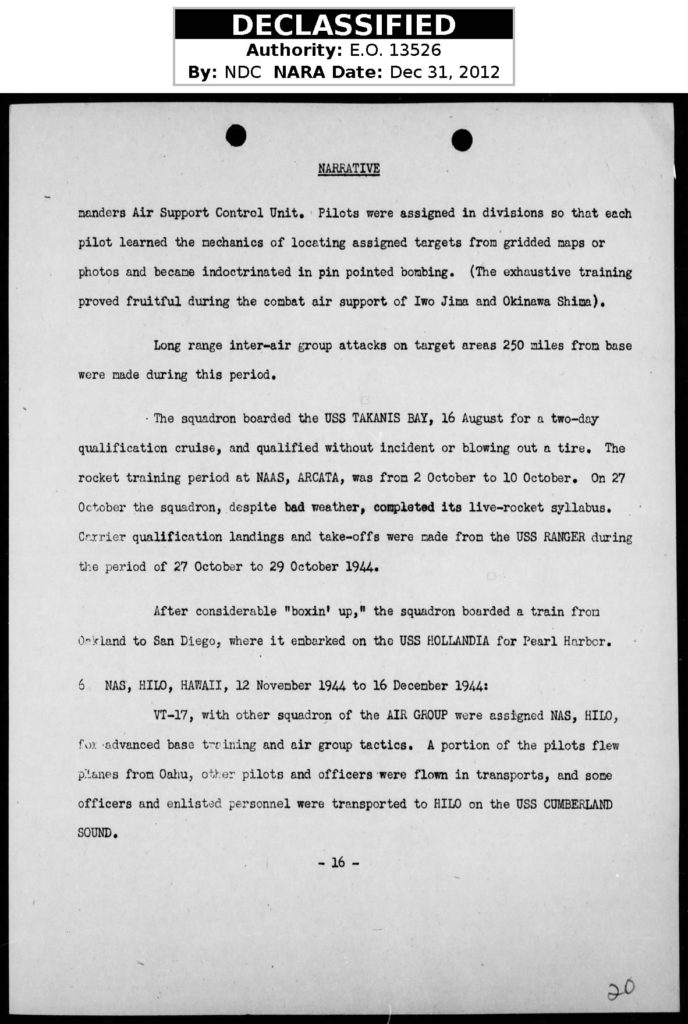
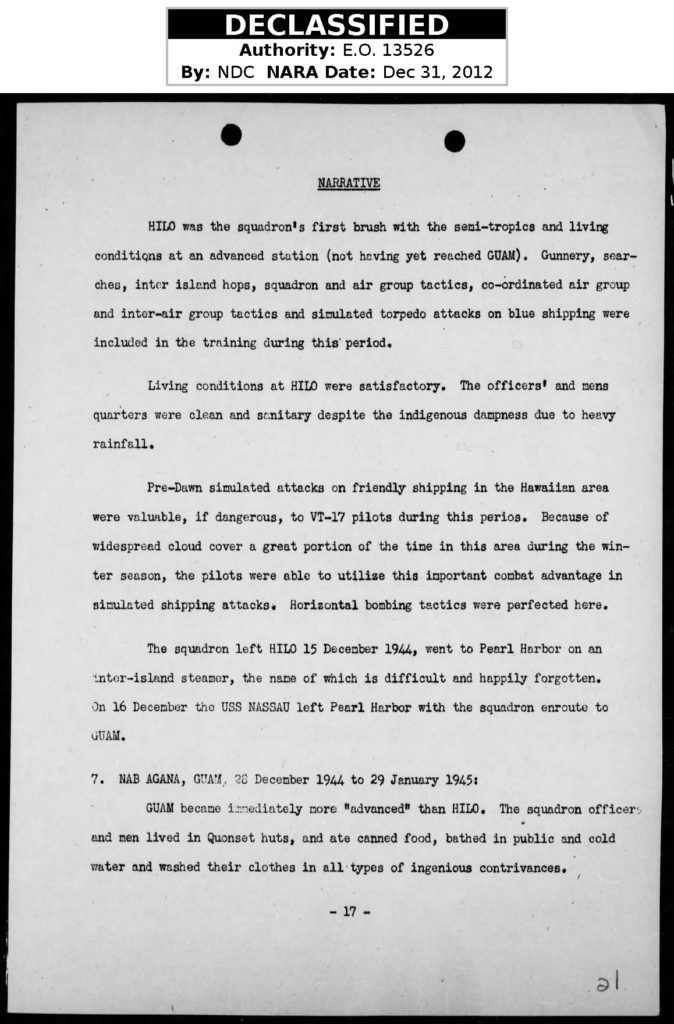
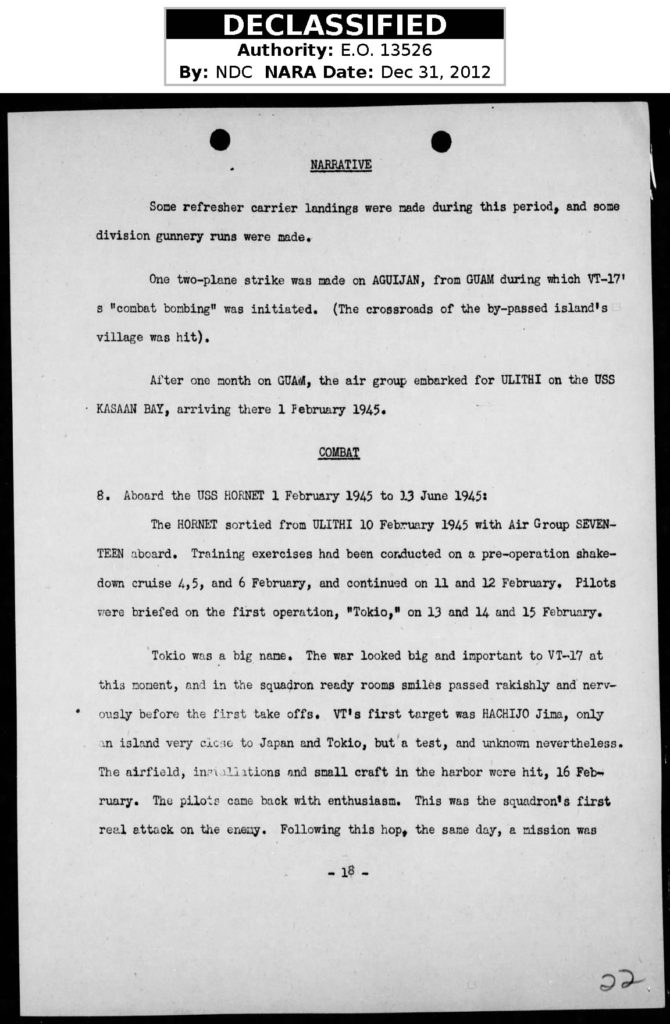
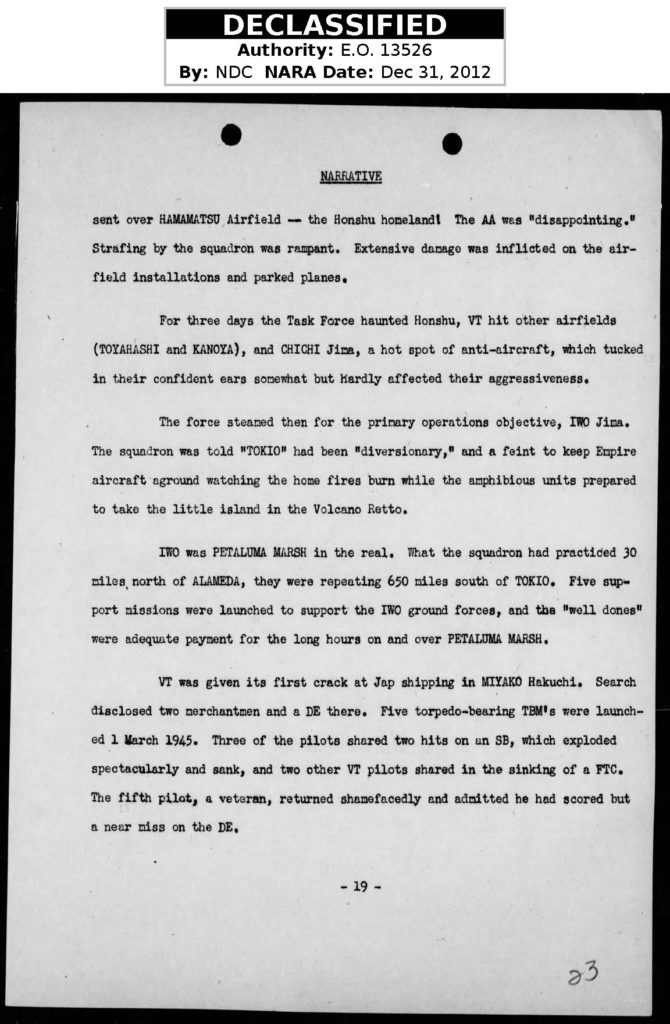
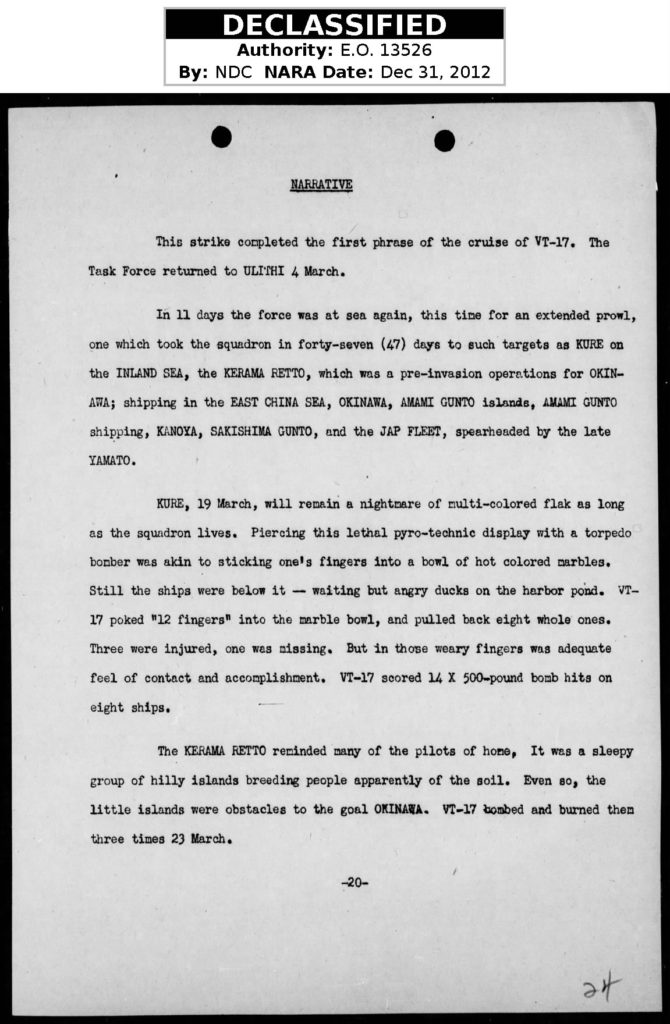
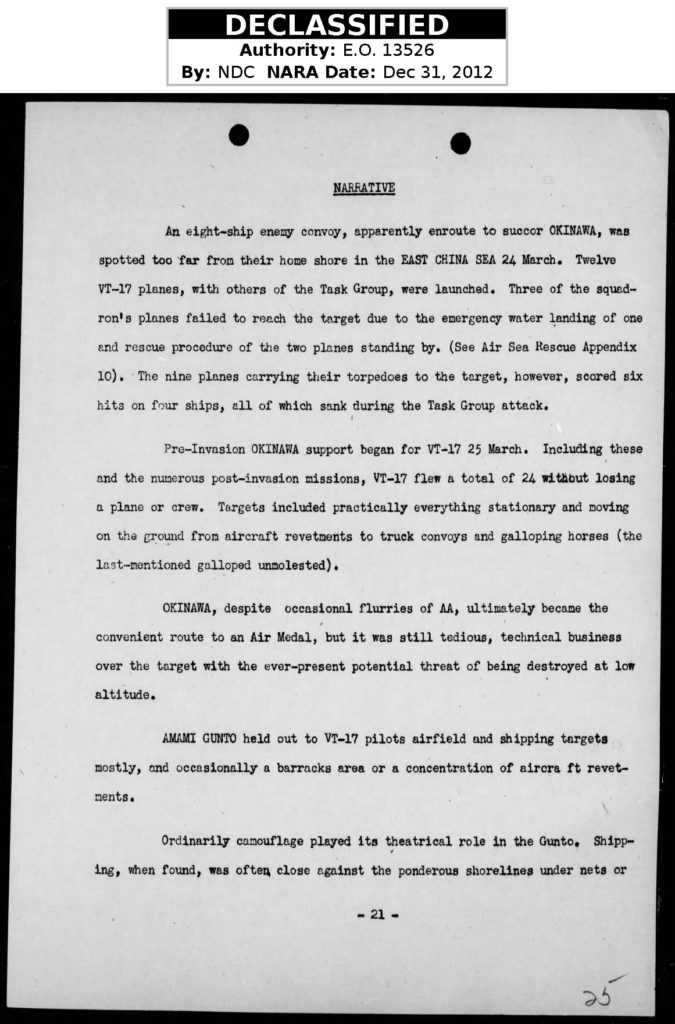
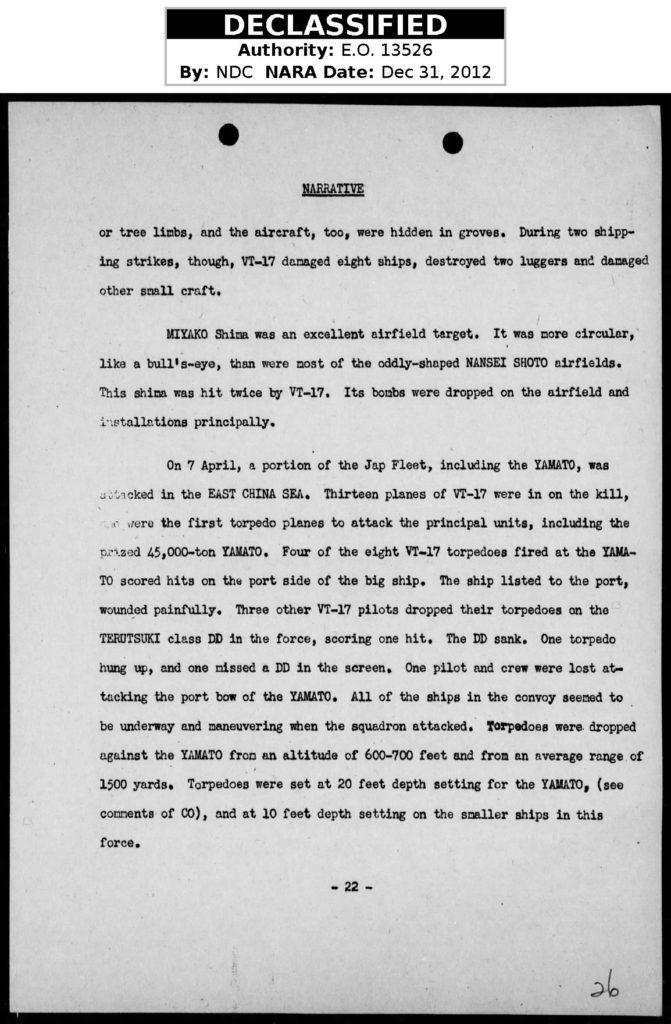
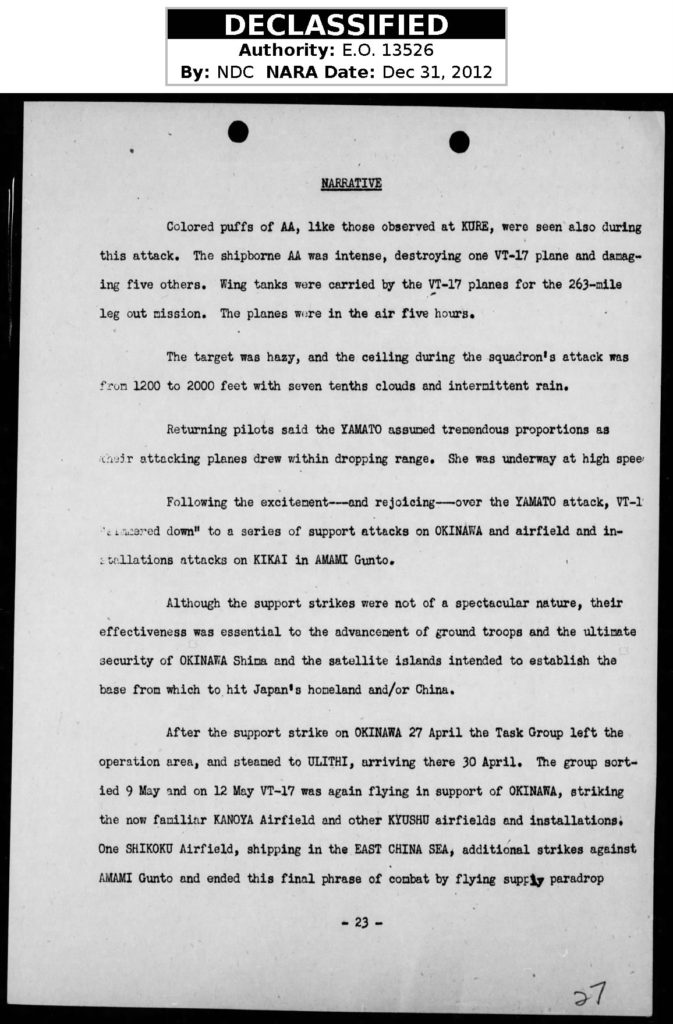
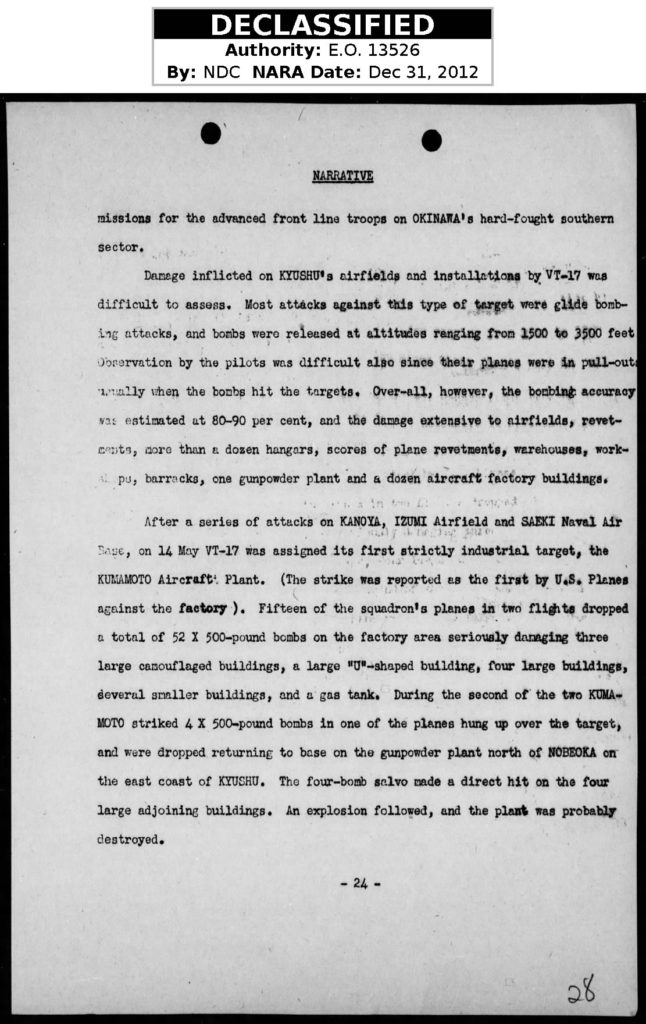
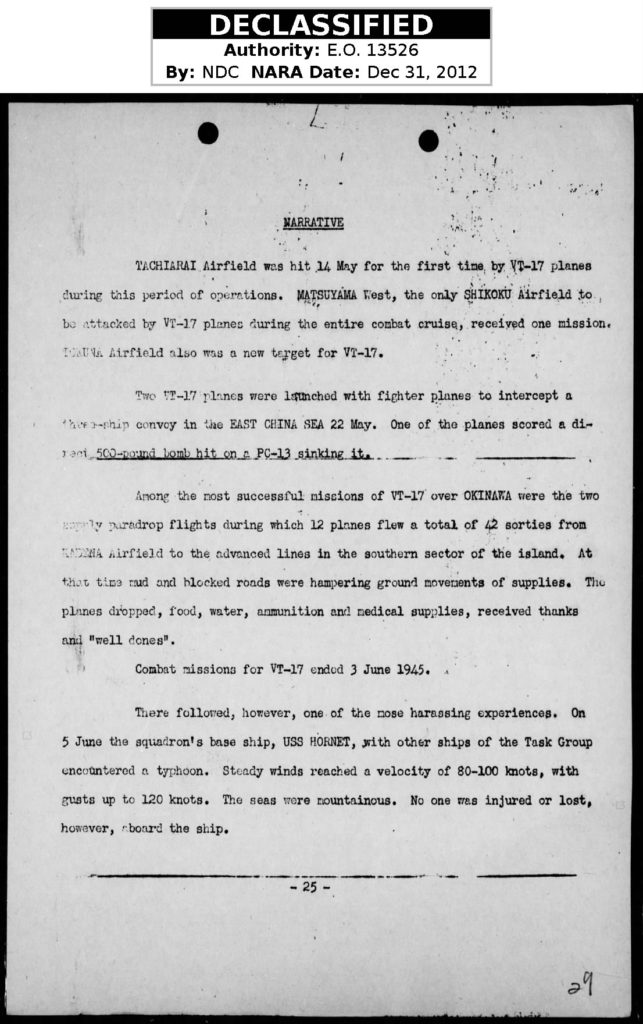
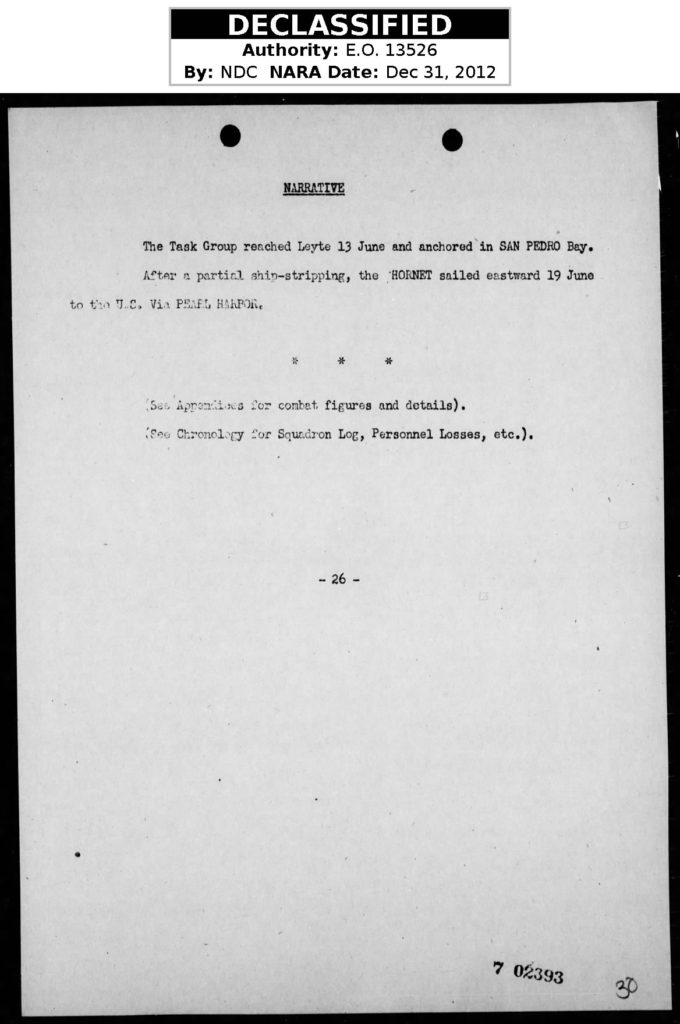
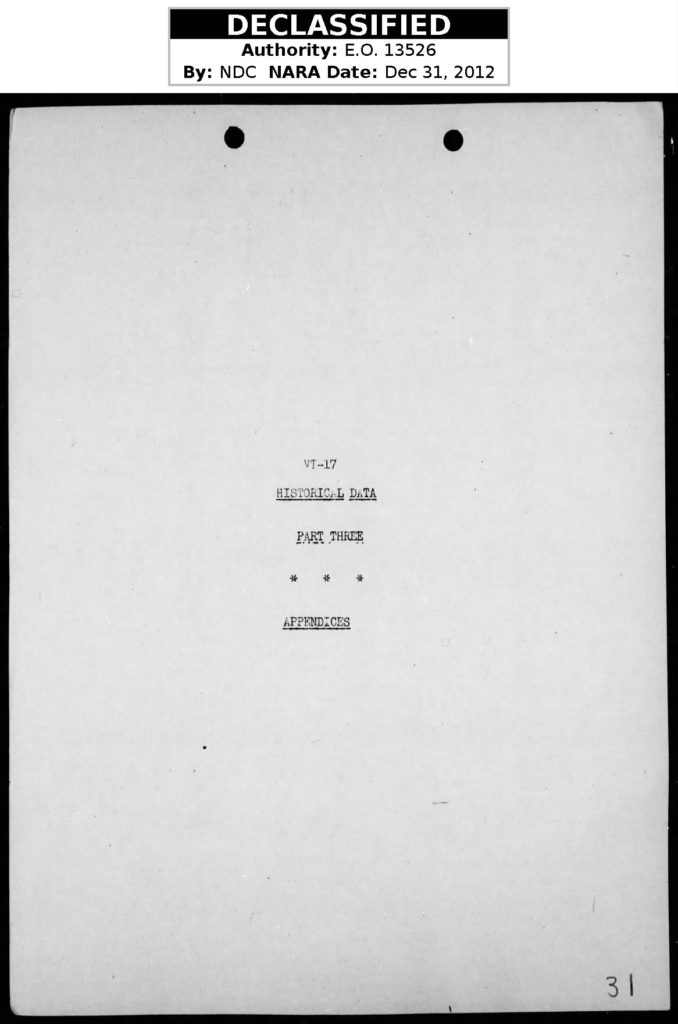
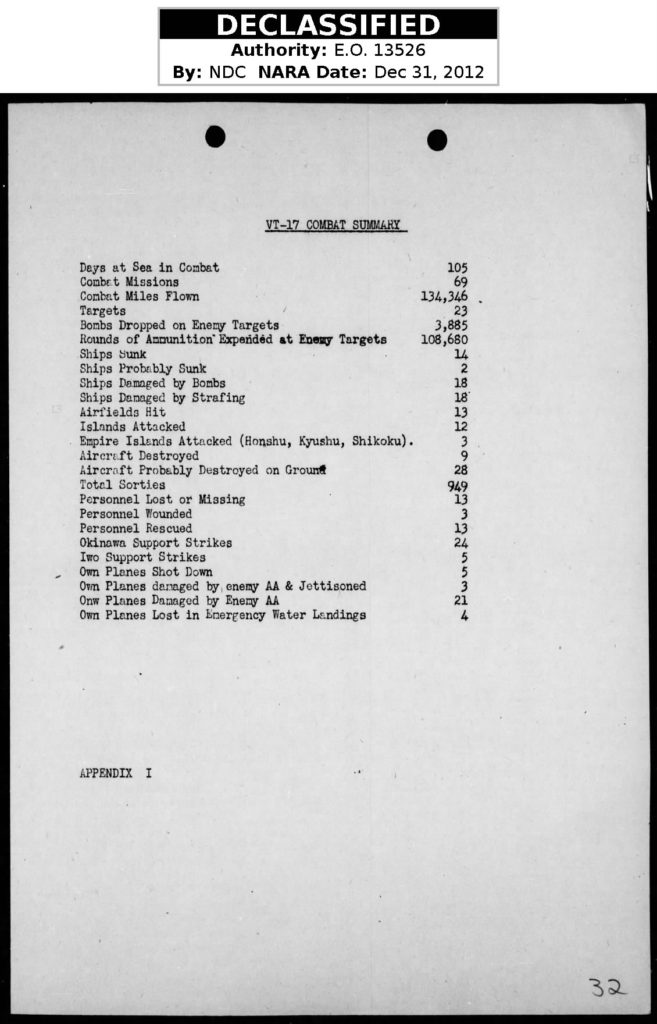
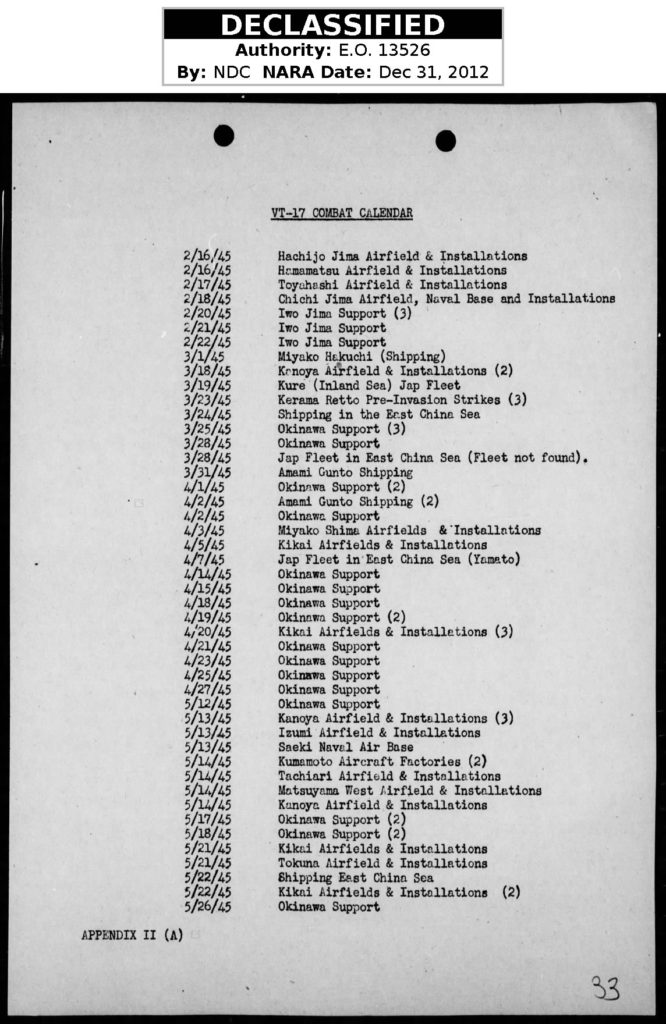
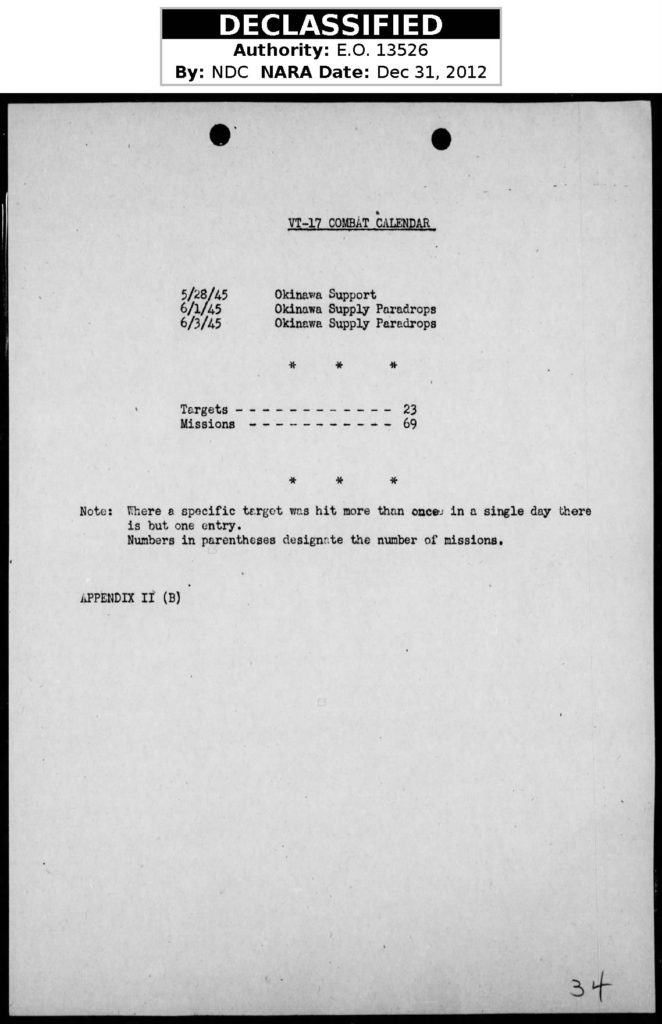
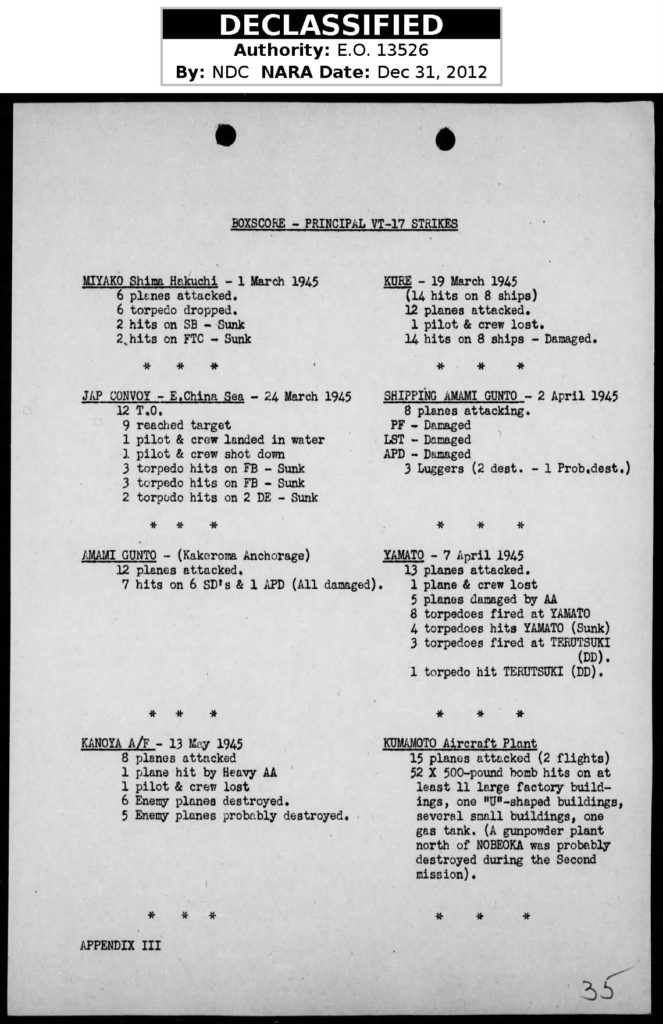
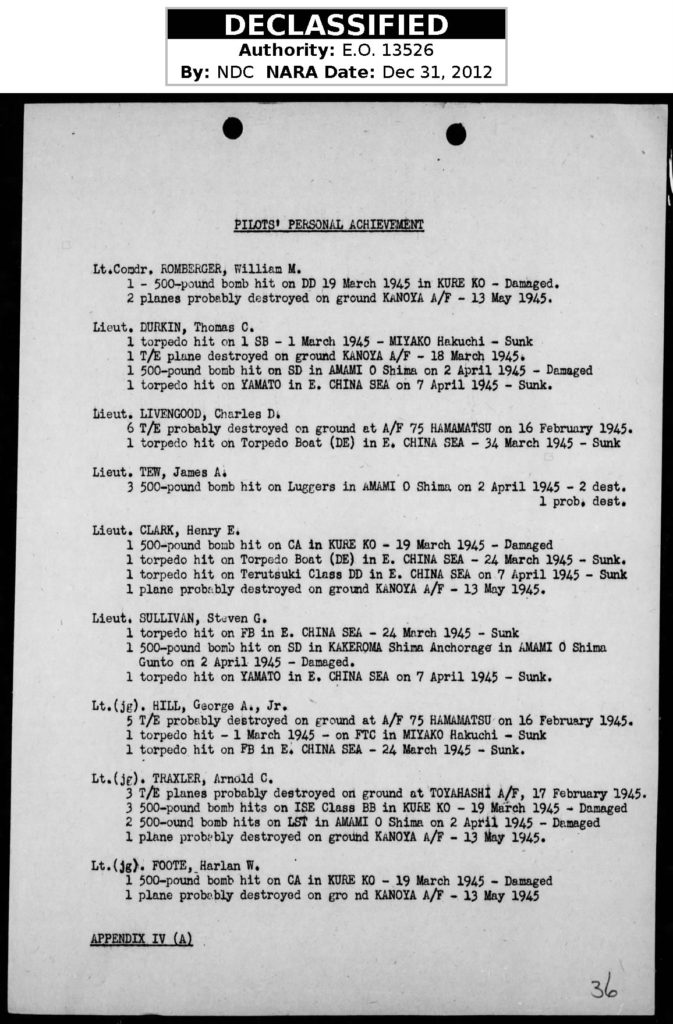
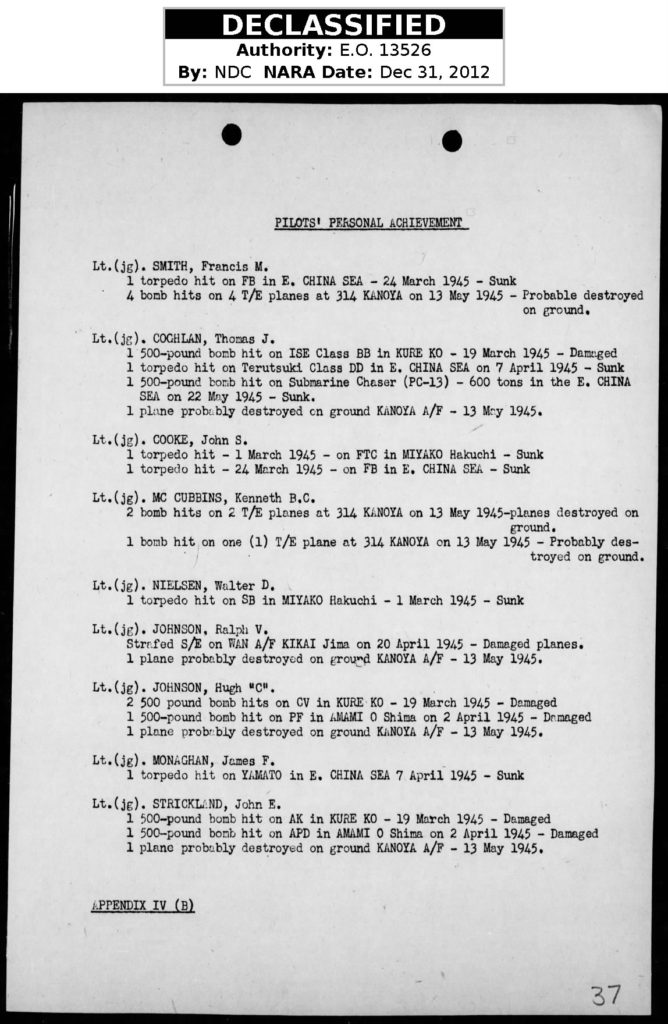
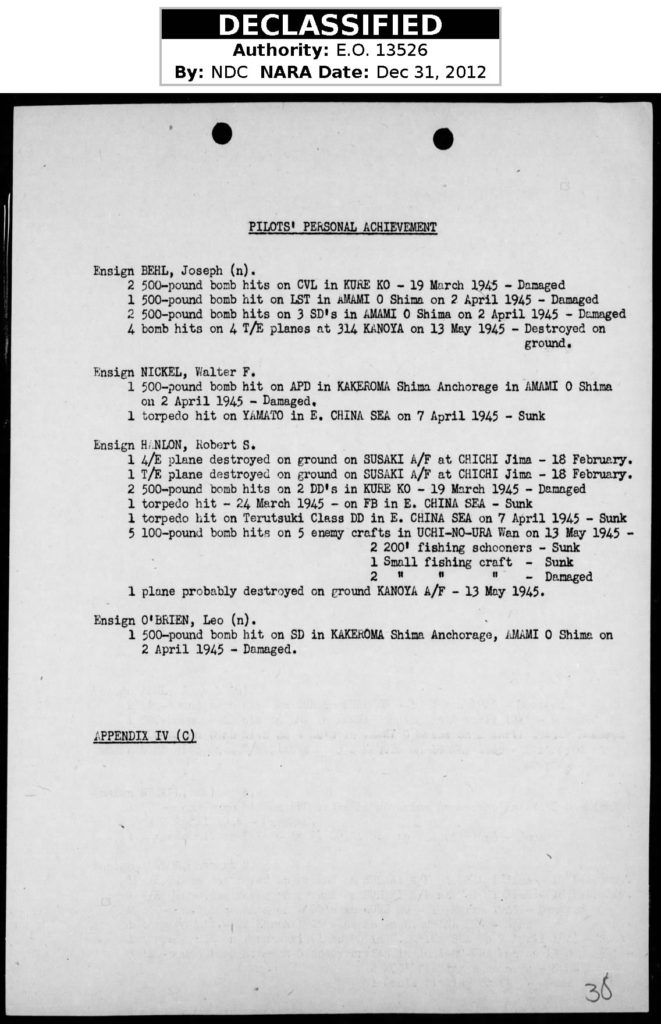
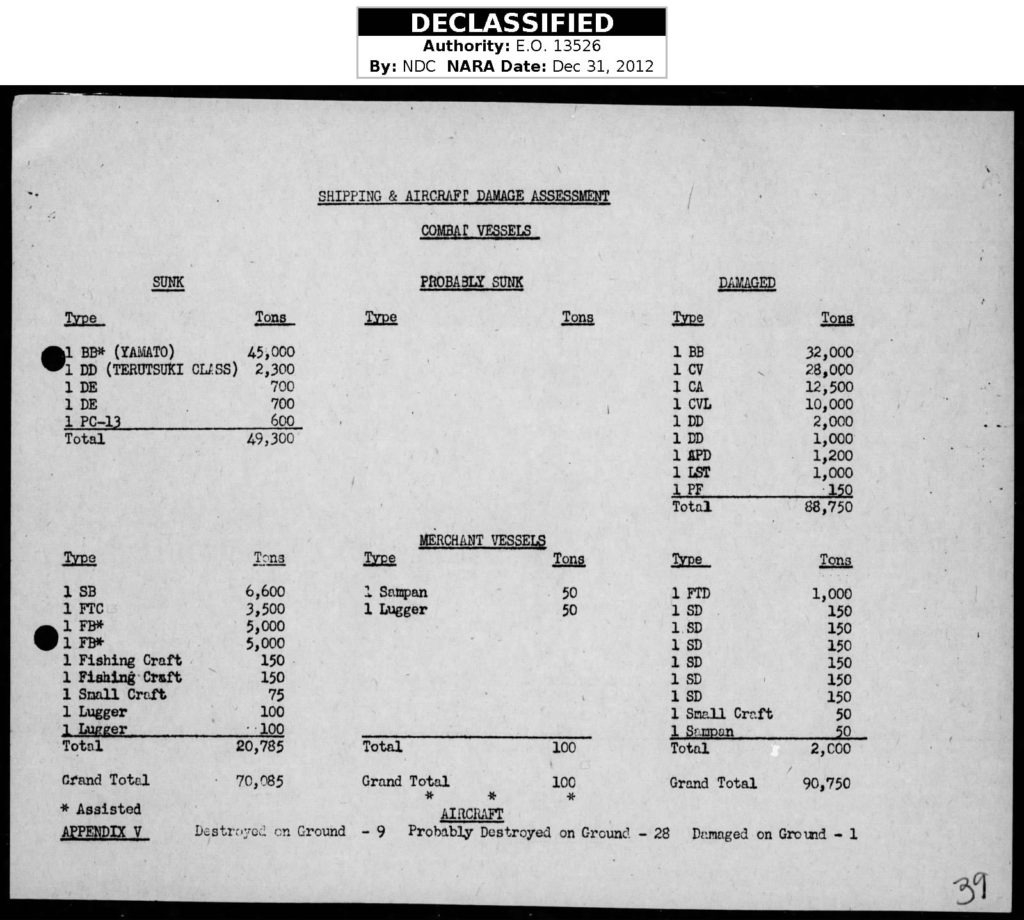
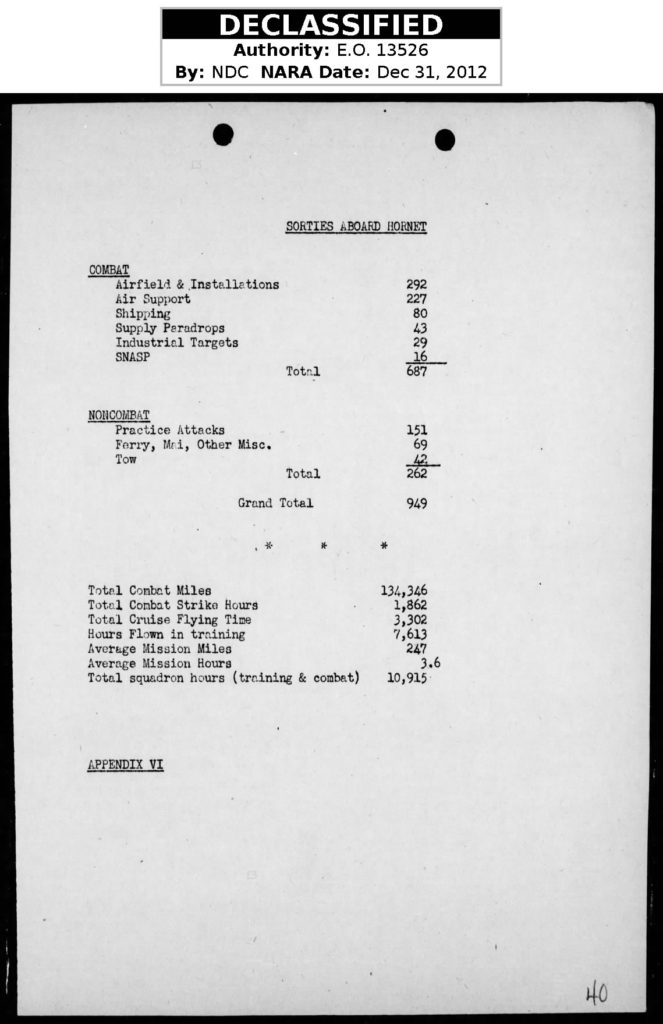
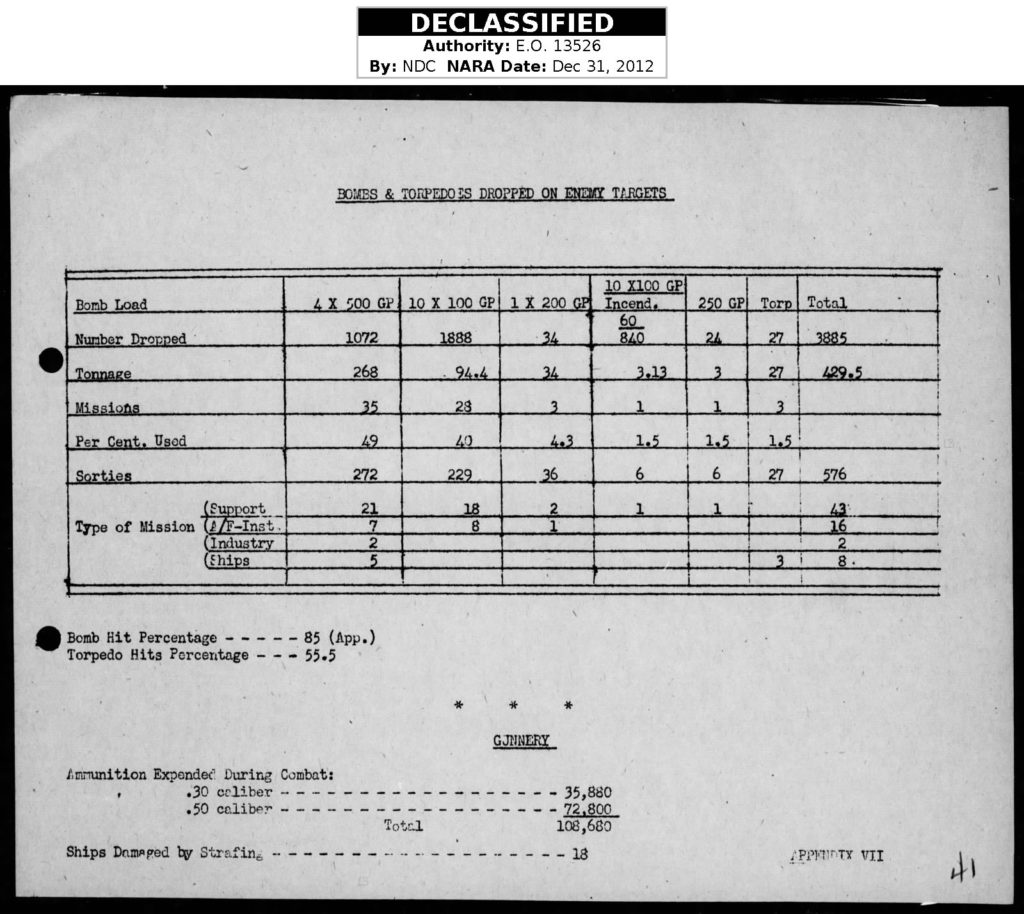
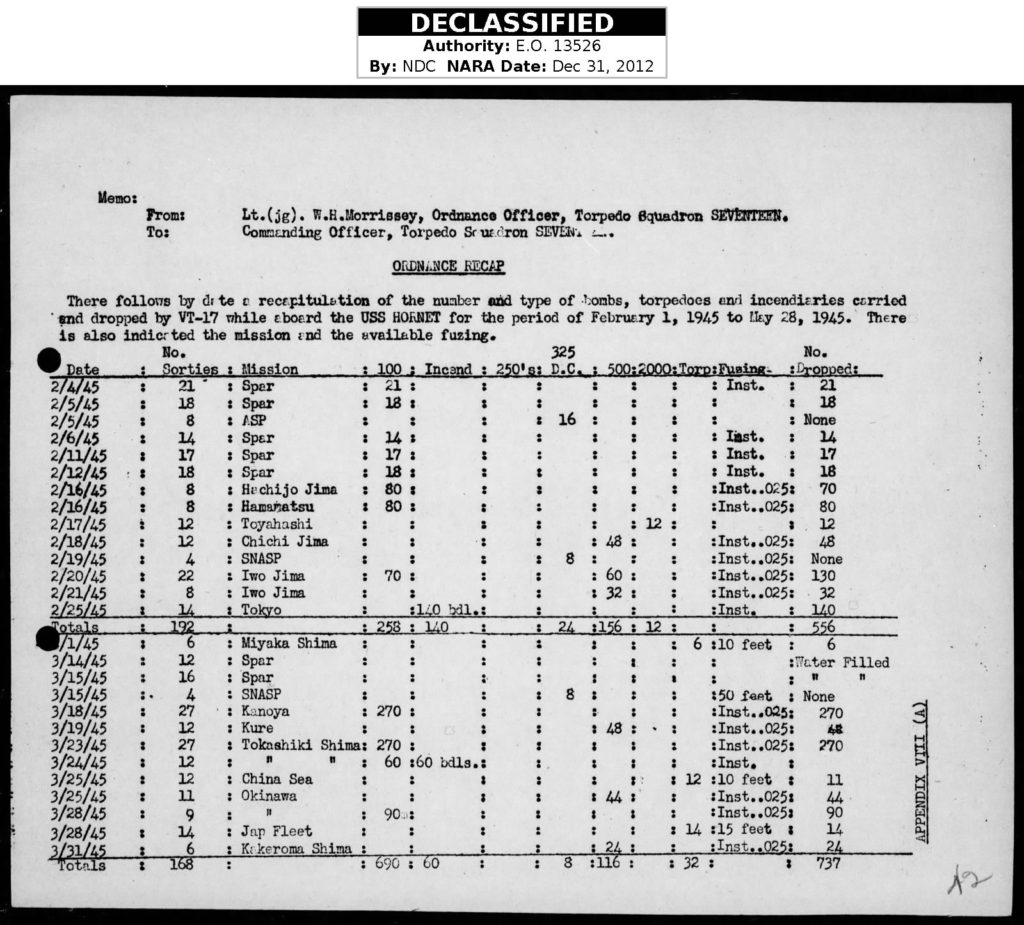
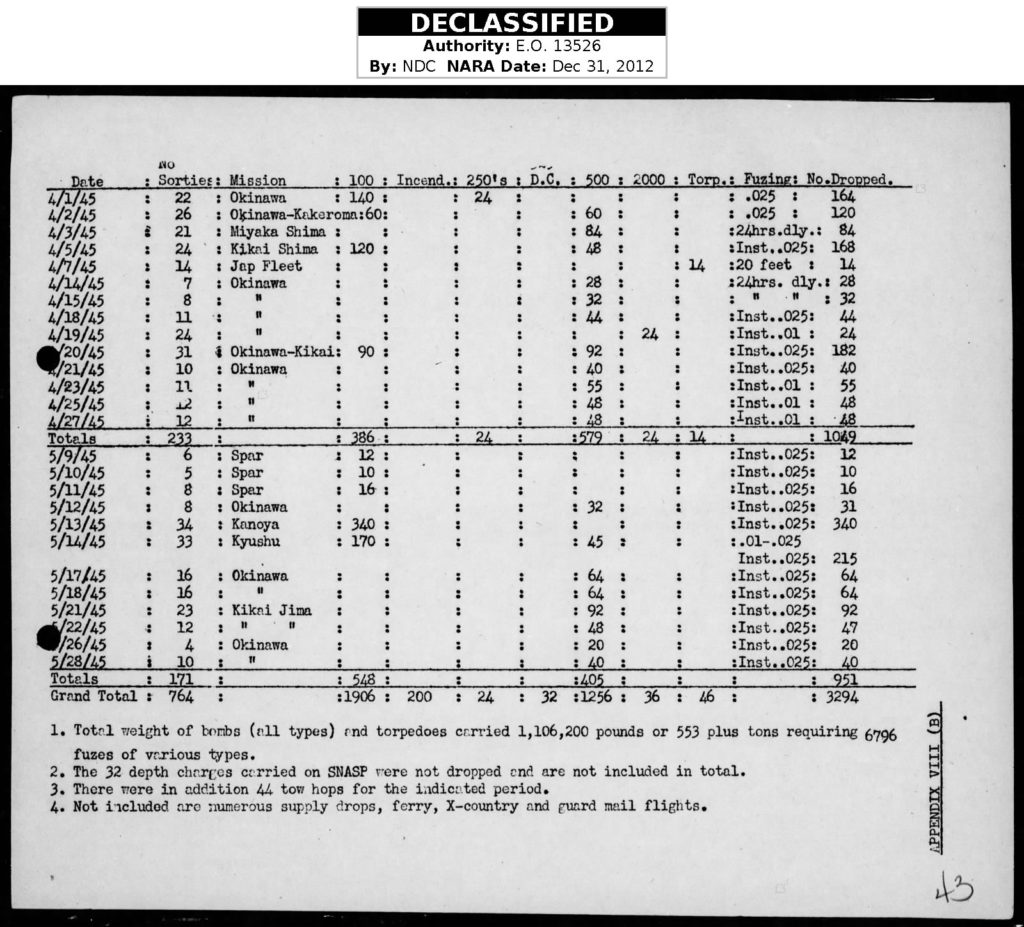
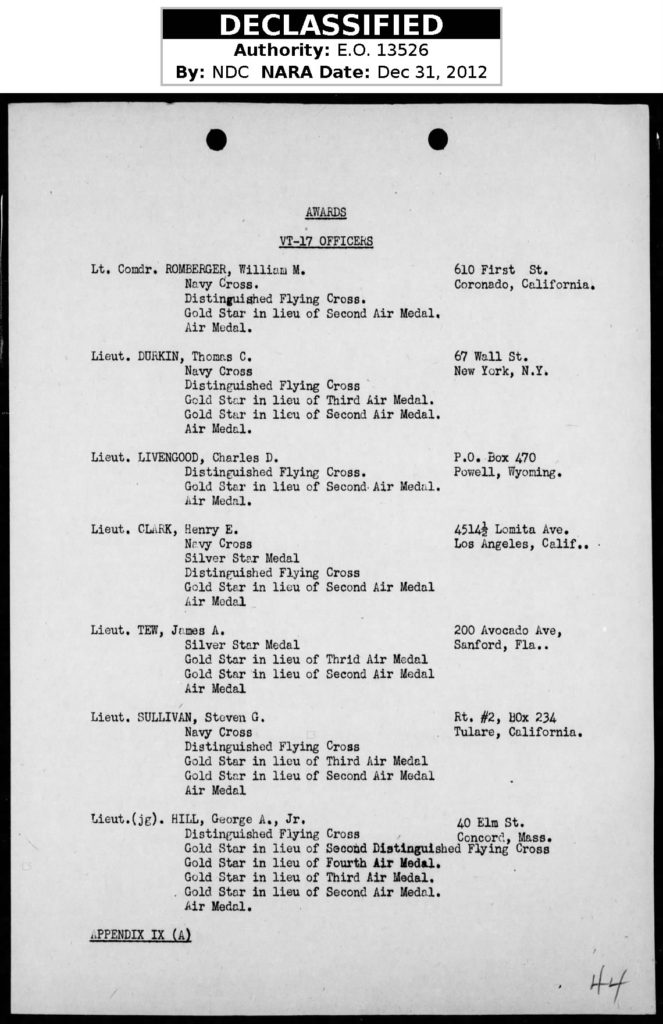
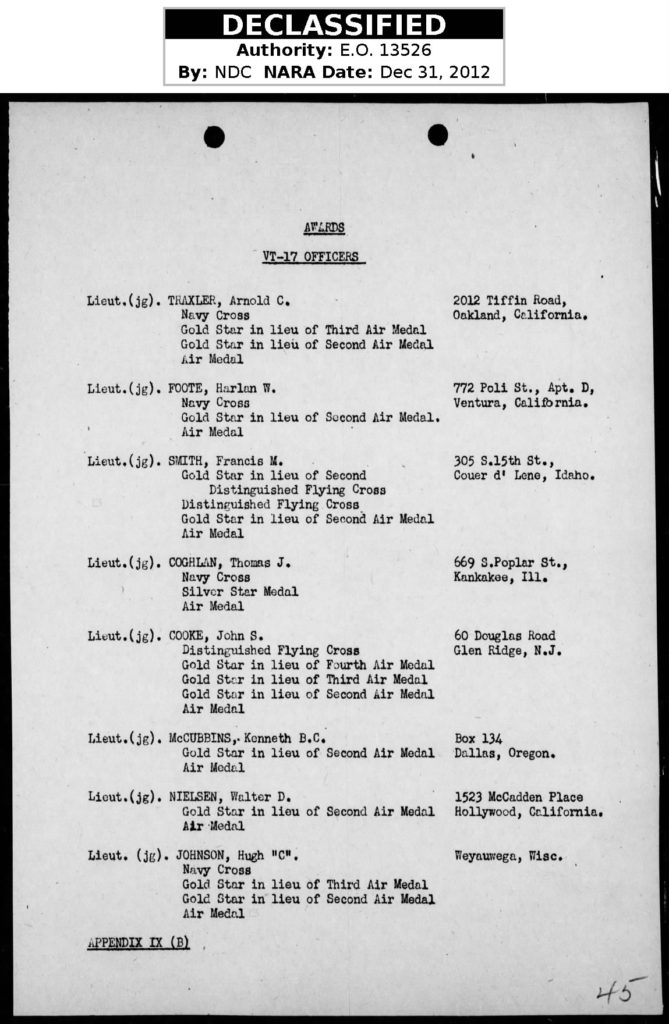
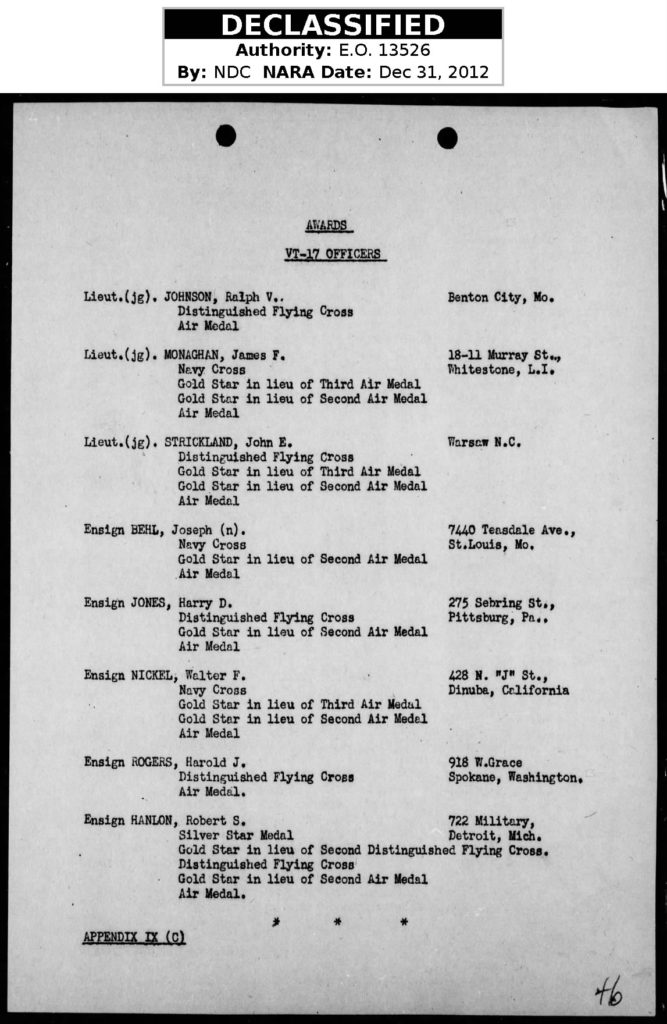
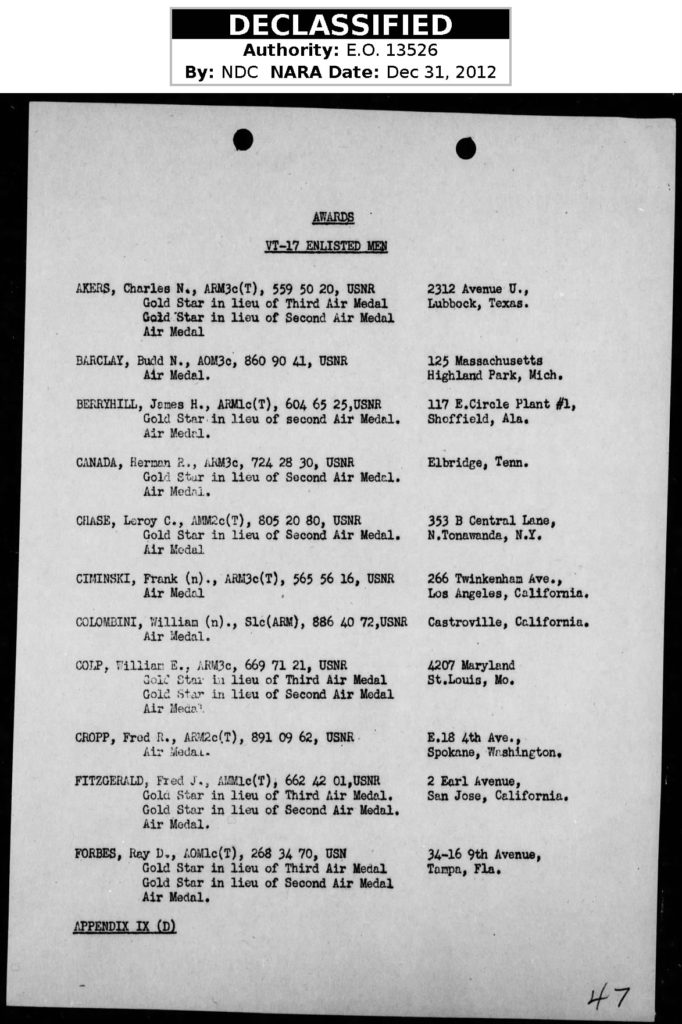
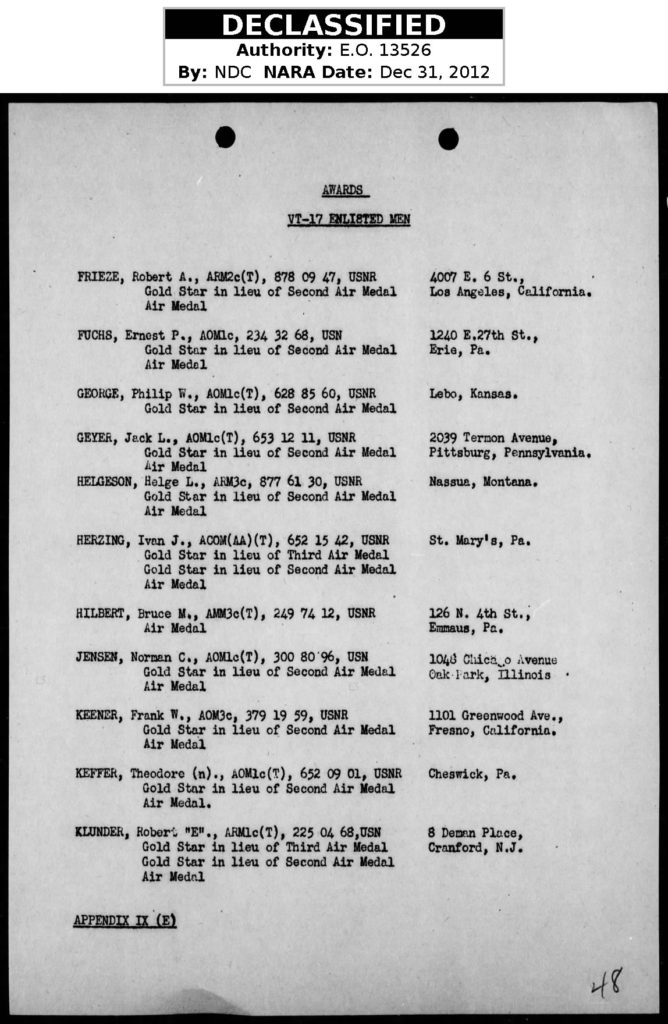
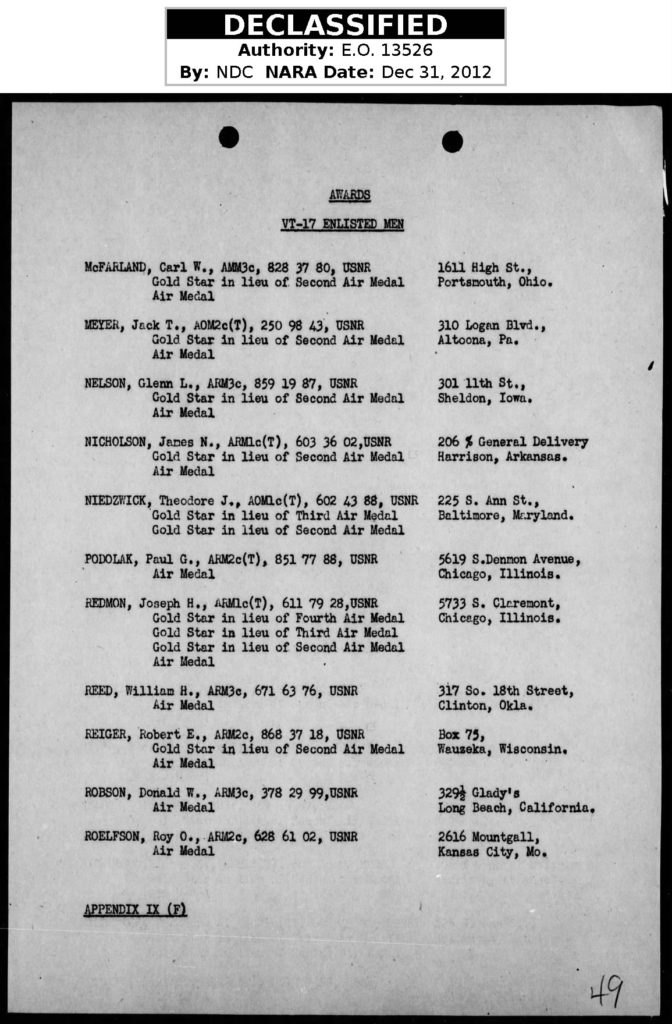
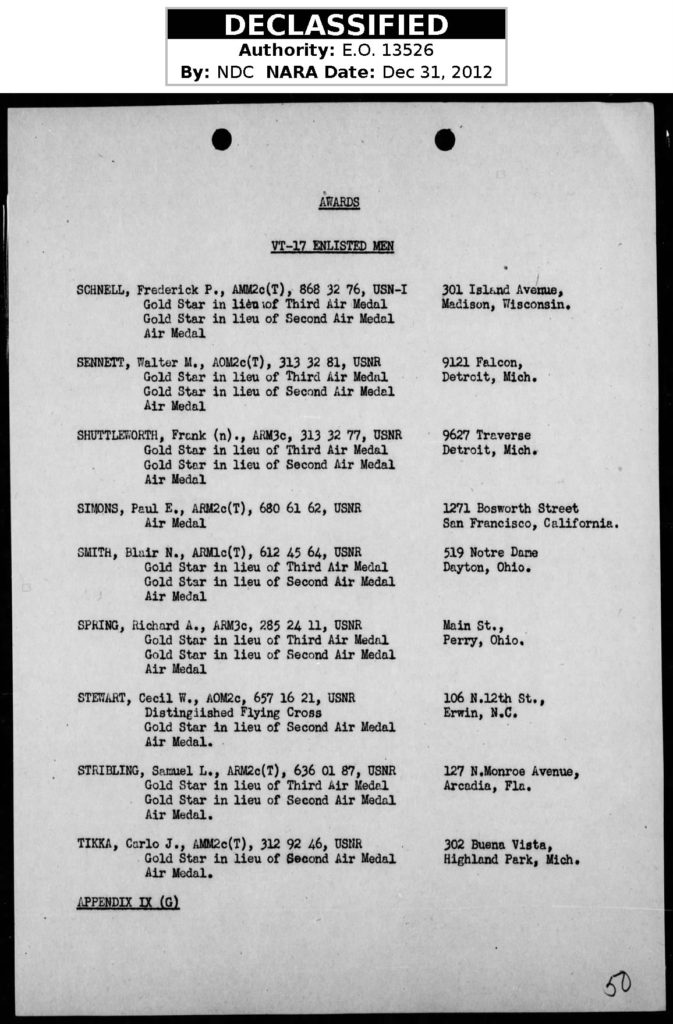
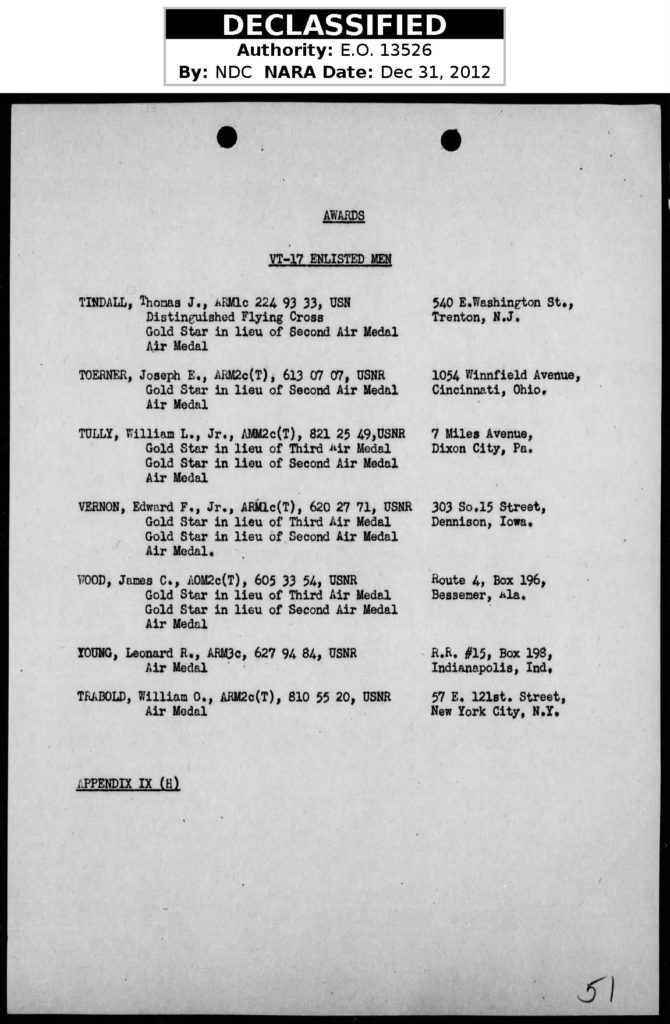
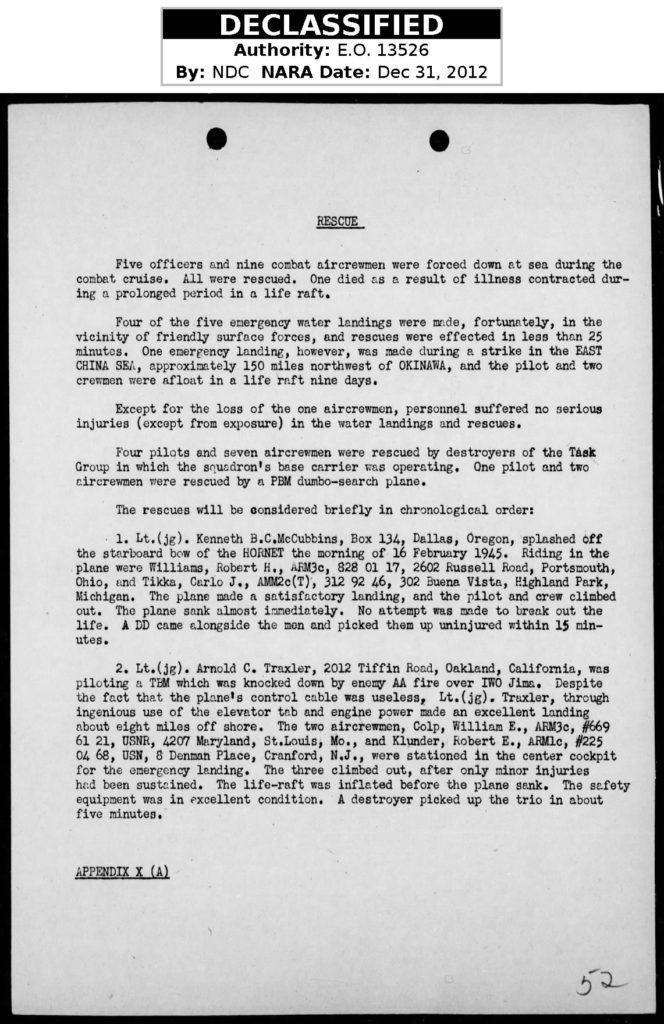
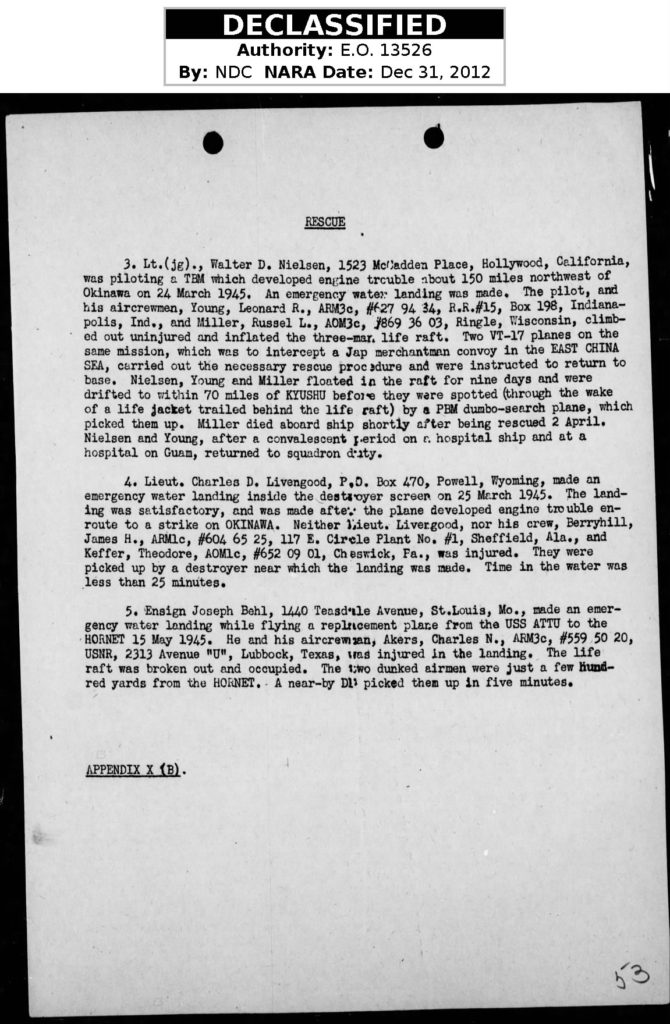
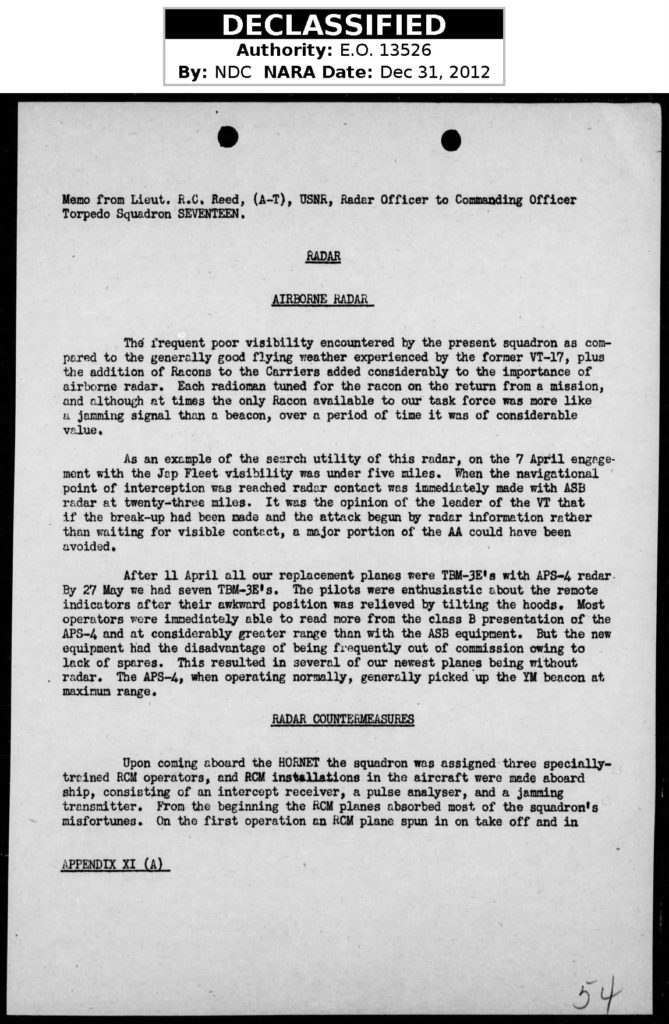
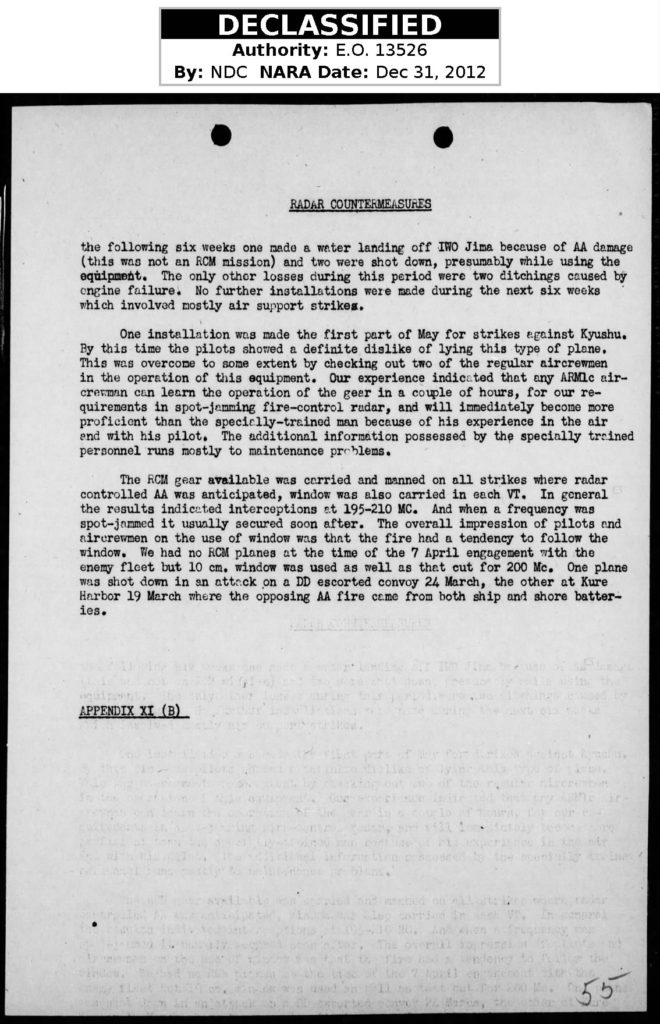
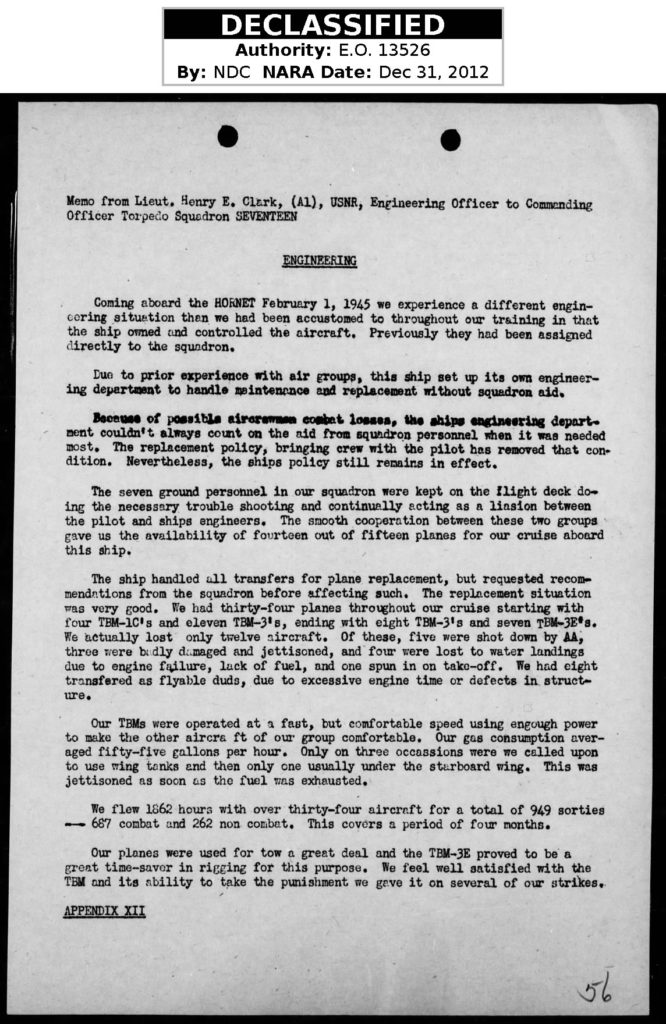
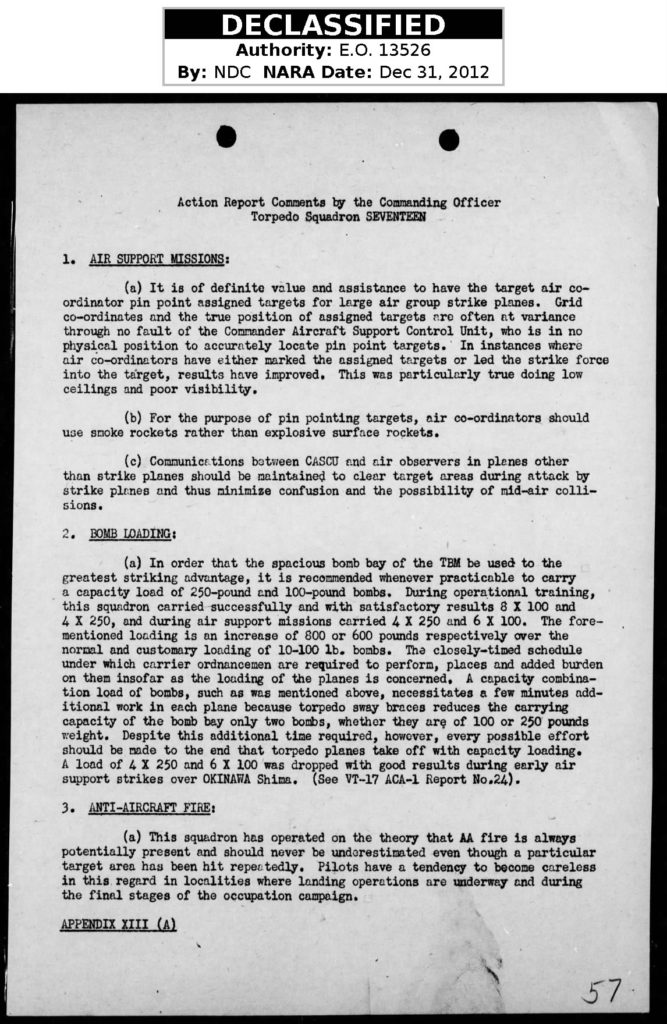
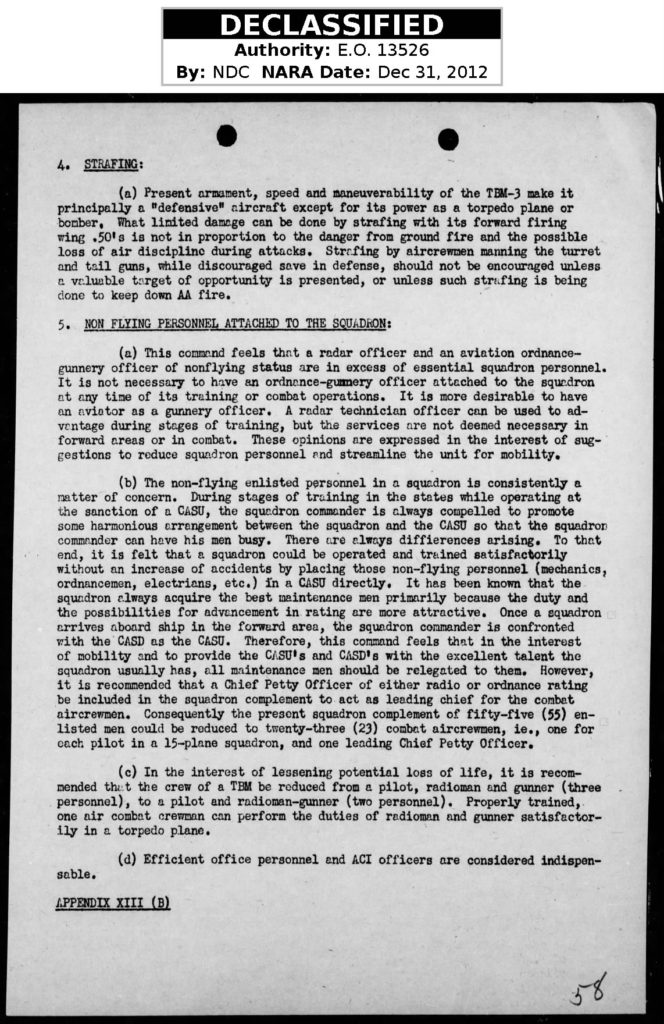
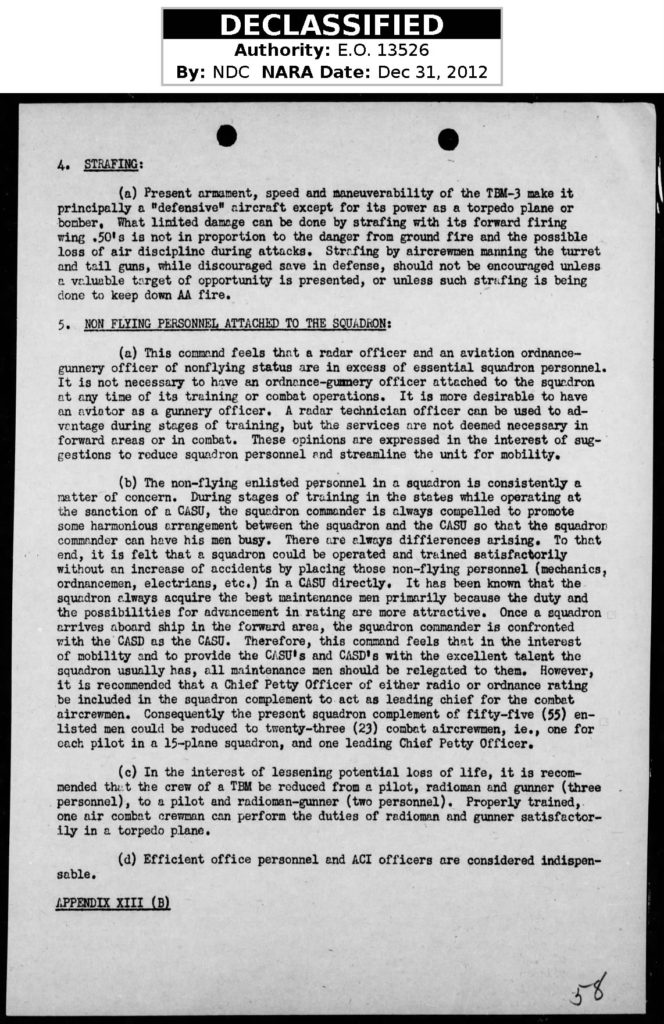
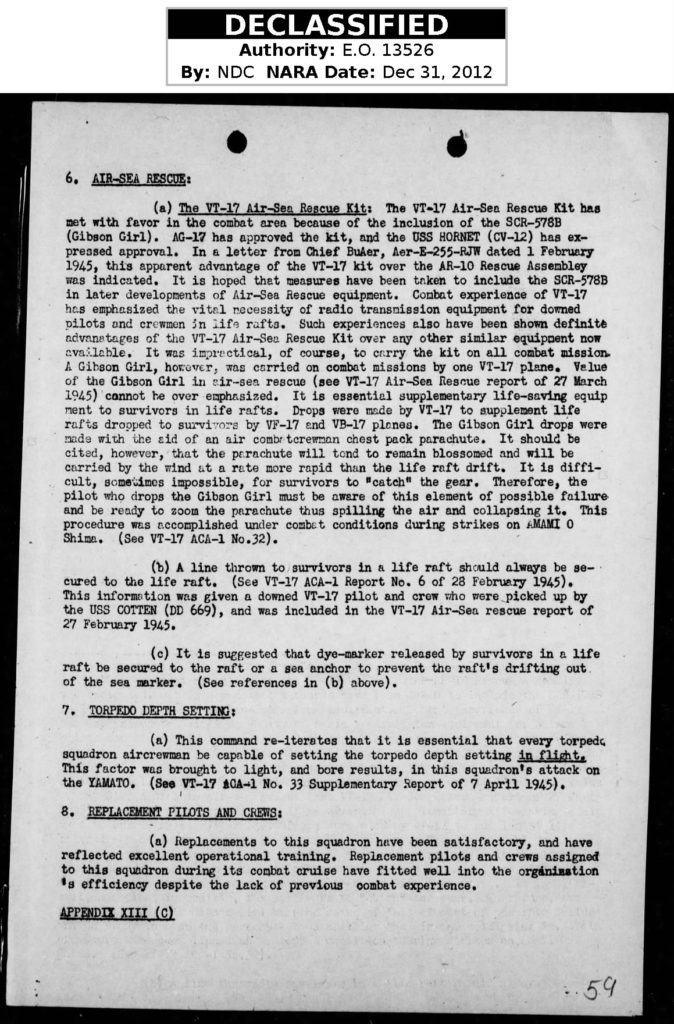
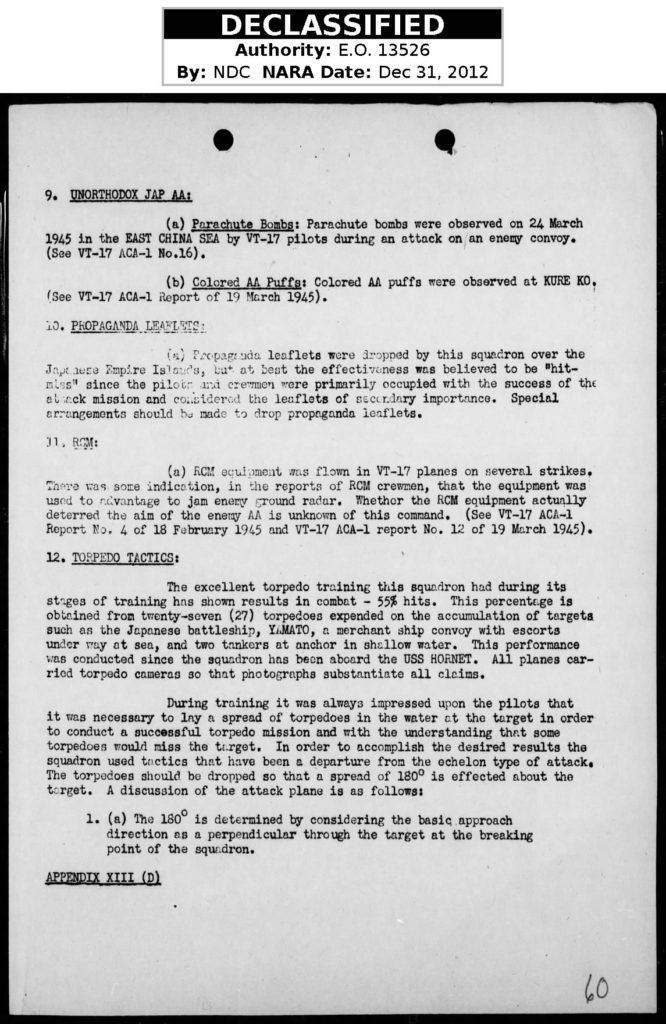
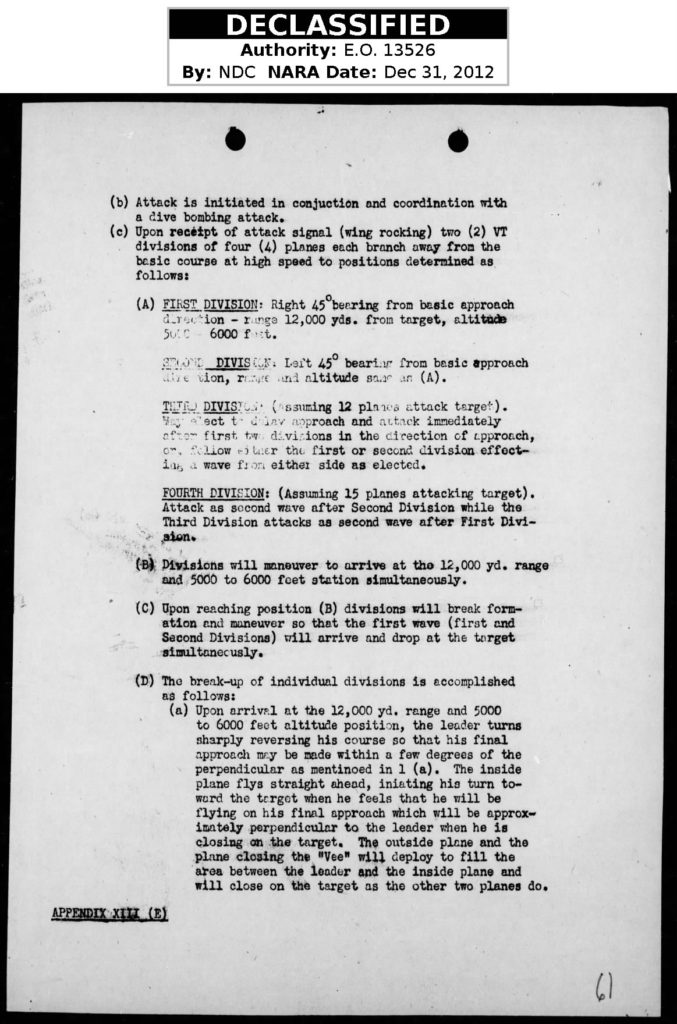
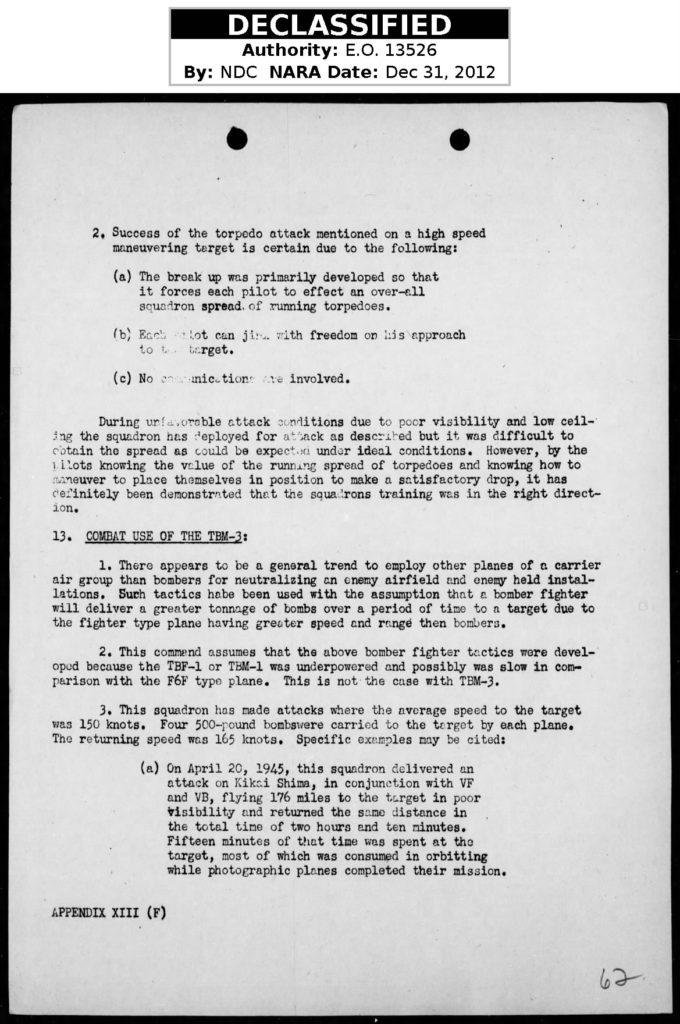
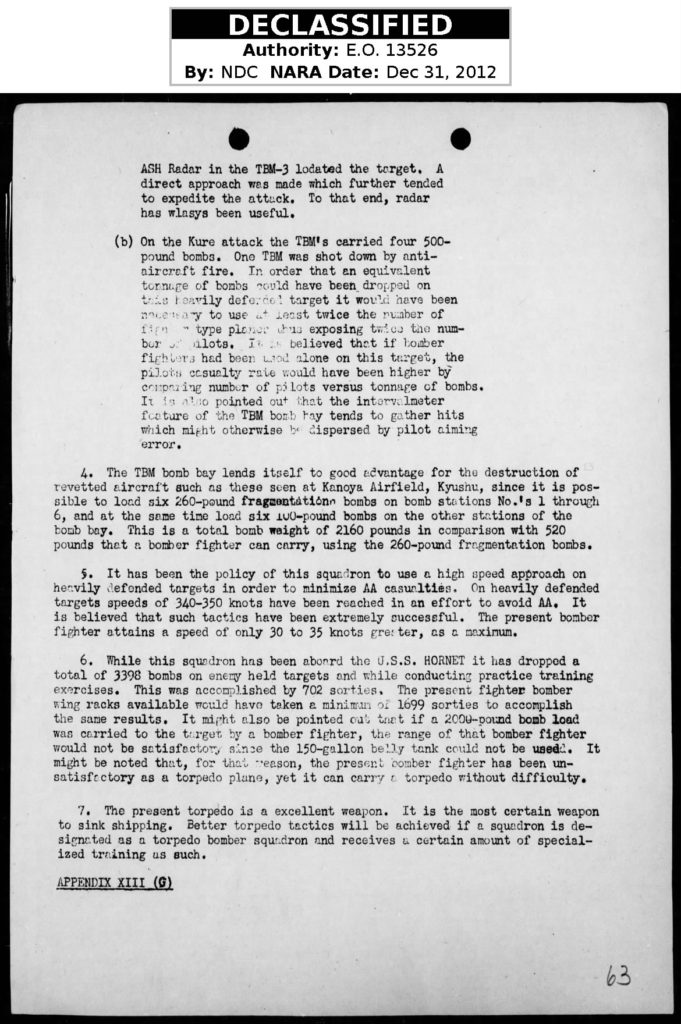
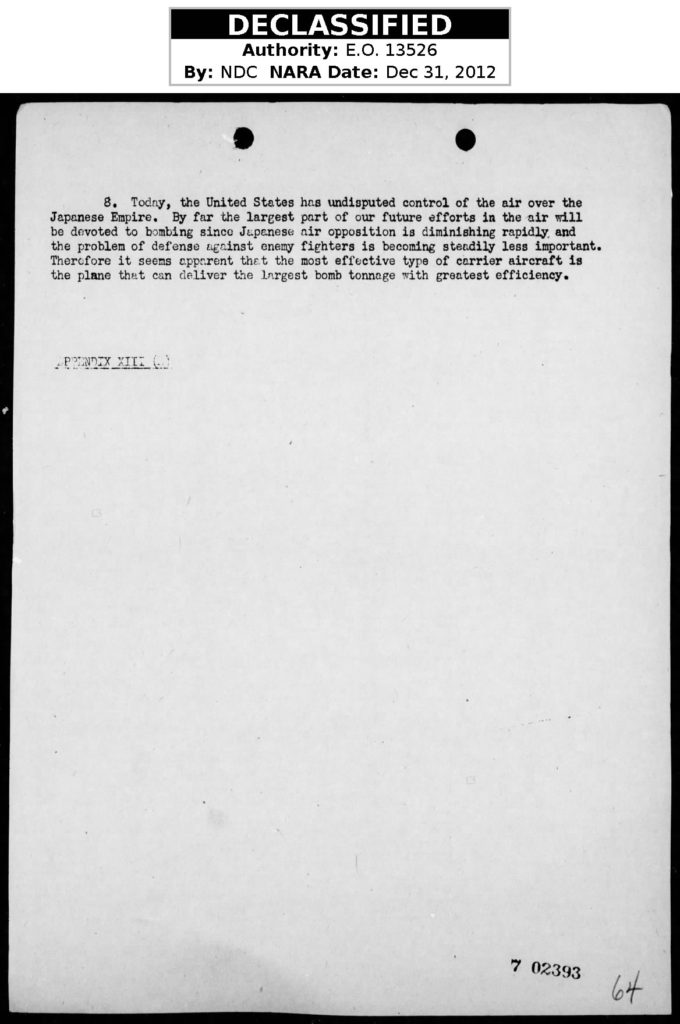
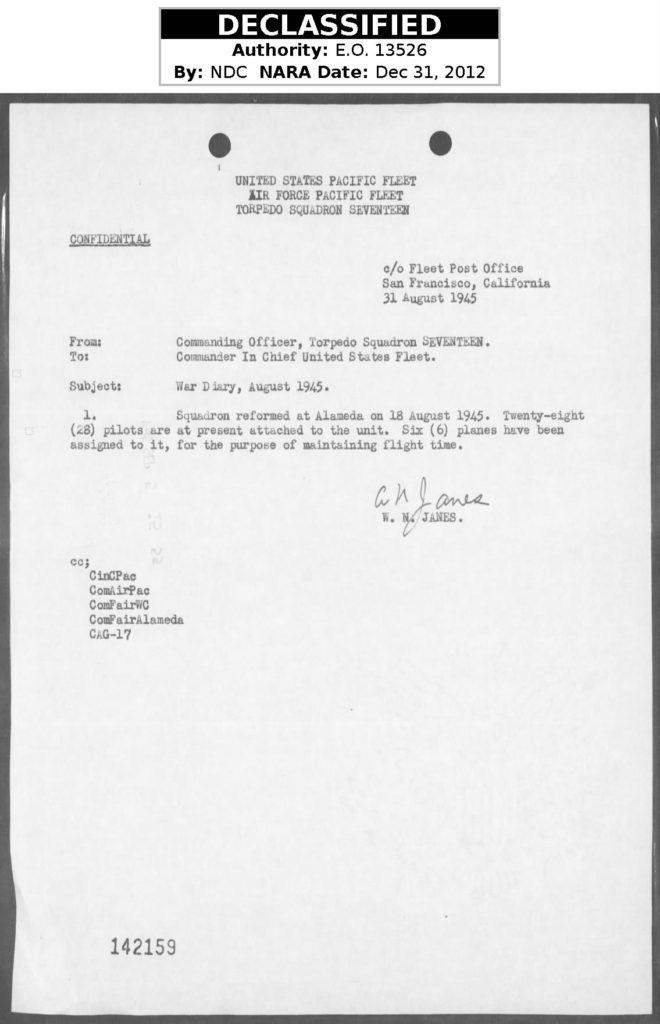
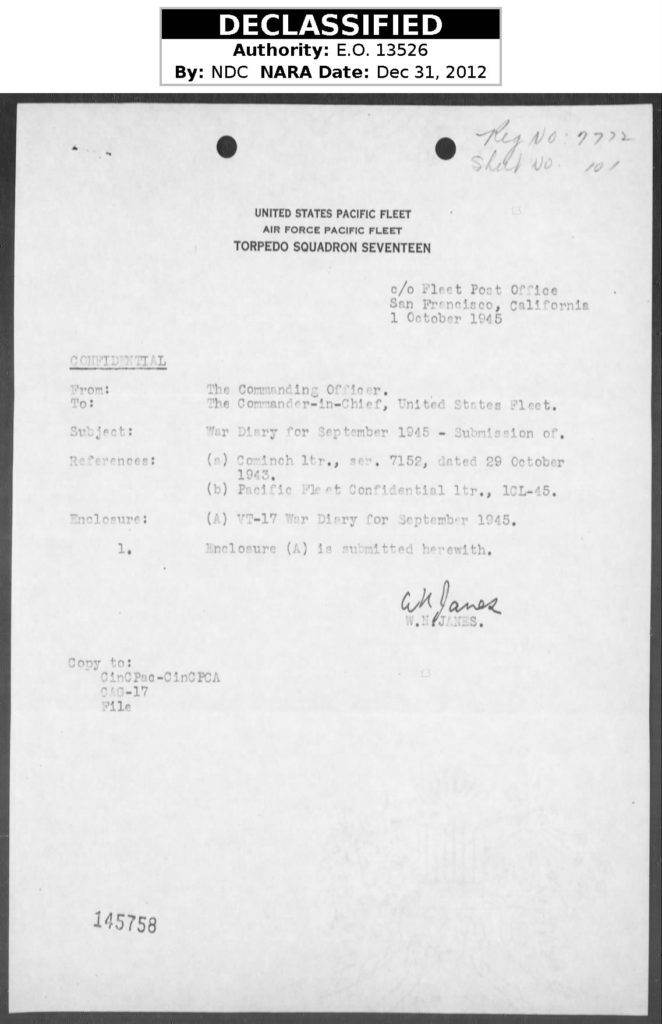
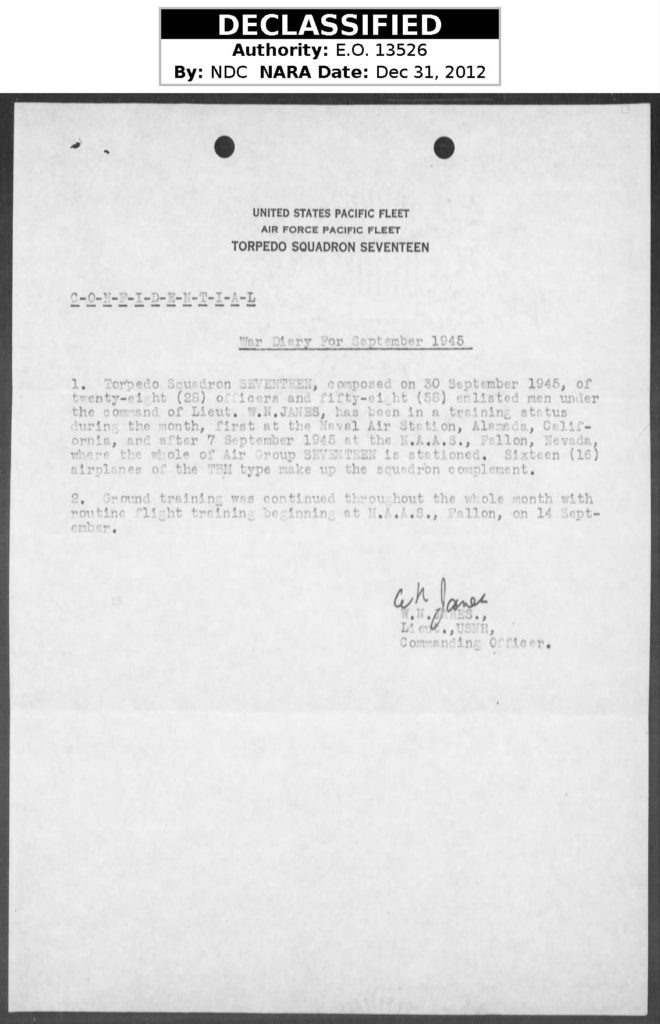
END OF THIS SECTION
To enhance this web site, we are announcing our search for photographs and newer photographs of items you have. This might be patches, log books, autobiographies, audio or video memories, etc. We would also be interested in obituaries for the any of the men of VT-17.
If you have the means of making a JPG / JPEG image of anything related to VT-17 please send via email to dave @ vt17.com
If digitizing or copying photographs is too technical, an easier method is to take a photo with your cell phone and send the full-sized image to dave @ vt17.com
If you prefer to mail something to appear on the web site, they will positively be returned to you promptly with a tracking number via the postal service. Please clearly include your return address so I can send item(s) back to you. If sending photographs, you should write DO NOT BEND on the outside.
Send items to:
VT17.com c/o David Schubert
PO Box 86602
Warrenton VA 20187-1202
Thank you in advance for helping make this web site a true memorial to all the men of VT-17.
The Avenger Torpedo Bomber built during World War II was designated TBF and TBM. They were the same type of aircraft, built two heavy industry companies:
During the war GM/Ford/Chrysler didn’t build cars, they built planes, tanks, and jeeps designed by other companies. The Avenger was the first design to feature a new wing-folding mechanism created by Grumman, intended to maximize storage space on an aircraft carrier; the F4F-4 and later models of Wildcat received a similar folding wing and the F6F Hellcat (both designed by Grumman) employed this mechanism as well.
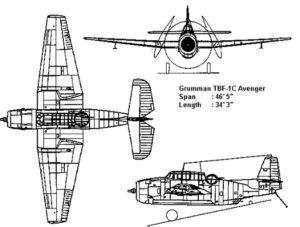
The engine used was the Wright R-2600-20. There were three crew members: pilot, turret gunner and radioman/bombardier/ventral gunner. One .30 caliber machine gun was mounted in the nose, a .50 caliber gun was mounted right next to the turret gunner’s head, in a rear-facing electrically powered turret, and a single .30 caliber hand-fired machine gun mounted ventrally (under the tail), which was used to defend against enemy fighters attacking from below and to the rear. This gun was fired by the radioman/bombardier while standing up and bending over in the belly of the tail section, though he usually sat on a folding bench facing forward to operate the radio and to sight in bombing runs.
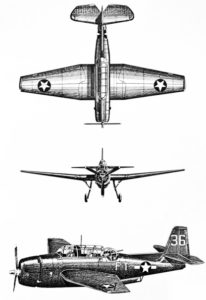
Later models of the TBF/TBM dispensed with the nose-mounted gun for one .50 caliber gun in each wing per pilots’ requests for better forward firepower and increased strafing ability. There was only one set of controls on the aircraft, and no access to the pilot’s position from the rest of the aircraft. The radio equipment was massive, especially by today’s standards, and filled the whole glass canopy to the rear of the pilot. The radios were accessible for repair through a “tunnel” along the right hand side. Any Avengers that are still flying today usually have an additional rear-mounted seat in place of the radios, which increases crew to four.
The Avenger had a large bomb bay, allowing for one Bliss-Leavitt Mark 13 torpedo, a single 2,000 pound bomb, or up to four 500 pound bombs. The aircraft had overall ruggedness and stability, and pilots say it flew like a truck, for better or worse. With its good radio facilities, docile handling, and long range, the Grumman Avenger also made an ideal command aircraft for Commanders, Air Group (CAGs). With a 30,000 ft ceiling and a fully-loaded range of 1,000 miles, it was better than any previous American torpedo bomber and better than its Japanese counterpart: the obsolete Nakajima B5N “Kate”.
Later Avenger models carried radar equipment for the ASW and AEW roles. Although improvements in new types of aviation radar were soon forthcoming from the engineers at MIT and the electronic industry, the available radars in 1943 were very bulky, as they contained vacuum tube technology. Because of this, radar was at first carried only on the roomy TBF Avengers, but not on the smaller and faster fighters. Escort carriers sailors referred to the TBF as the “turkey” because of its size and maneuverability in comparison to the F4F Wildcat fighters in CVE air-groups.
On 7 April 1945: Grumman’s TBM torpedo bombers of VT-17 (CAG-17) participated in the sinking of the Japanese Battleship Yamato, in its last desperate run for Okinawa. VT-17 aircraft scored multiplet torpedo hits on the Yamato & sunk one of her destroyer escorts. For their actions in this battle the following squadron personnel were awarded the Navy Cross: Lieutenants T. C. Durkin and S. G. Sullivan; Lt(jg) J. F. Monaghan & Ensign W. F. Nickel. Lieutenant H. E. Clark; Lt(jg) T. J. Coghlan and Ensign R. S. Hanlon were awarded the Silver Star for their actions.
Specifications TBM Avenger
Crew: Three
Length: 40 feet (12.2 m)
Height: 16 feet 5 inches (5 m)
Wingspan: 54 feet (16.5 m)
Empty Weight: 10,843 pounds (4,918.4 kg)
Maximum Weight: 18,250 pounds (8278.2 kg)
Powerplant: One Wright/Cyclone R-2600-20 with 1,900 horsepower 14 cylinder, air-cooled
Maximum Range: 1,130 miles with torpedo; 1,920 miles as scout aircraft
Maximum Speed: 267 m.p.h. at 16,000 feet;
Service Ceiling: 23,400 feet
Defensive Armament: Two wing-mounted .50 caliber Colt-Browning M2 machine guns with 335 rounds per gun; one turret-mounted .50 caliber Colt machine gun with 400 rounds; & one tail mounted .30 caliber machine gun with 500 rounds;
Offensive Armament: In bomb bay: one 22.4 inch Bliss-Leavitt Mark 13 torpedo or Max. 2000 pounds of bombs or depth charges. Eight under-wing mounted 5-inch rockets.
(This page is a work in progress)
From “CVG-17, CVBG-17, CVBG-5, CVG-6 , CVW-6 1943 – 1985”
located at http://178.83.198.61/wings/24-USNavy/CVG-017.htm
15 Jul 1943 – 10 Aug 1943 aboard CV-17 USS Bunker Hill with aircraft type TBF-1
10 Sep 1943 – 2 Oct 1943 aboard CV-17 USS Bunker Hill with aircraft type TBF-1
11 Nov 1943 – 6 Mar 1944 aboard CV-17 USS Bunker Hill with aircraft type TBF-1
2 Feb 1945 – 8 Jul 1945 aboard CV-12 USS Hornet with aircraft type TBM-3
—
This is section 7, covering sheets 61 through 65 of 65 pages from the archives of the U.S. Navy in a declassified document.
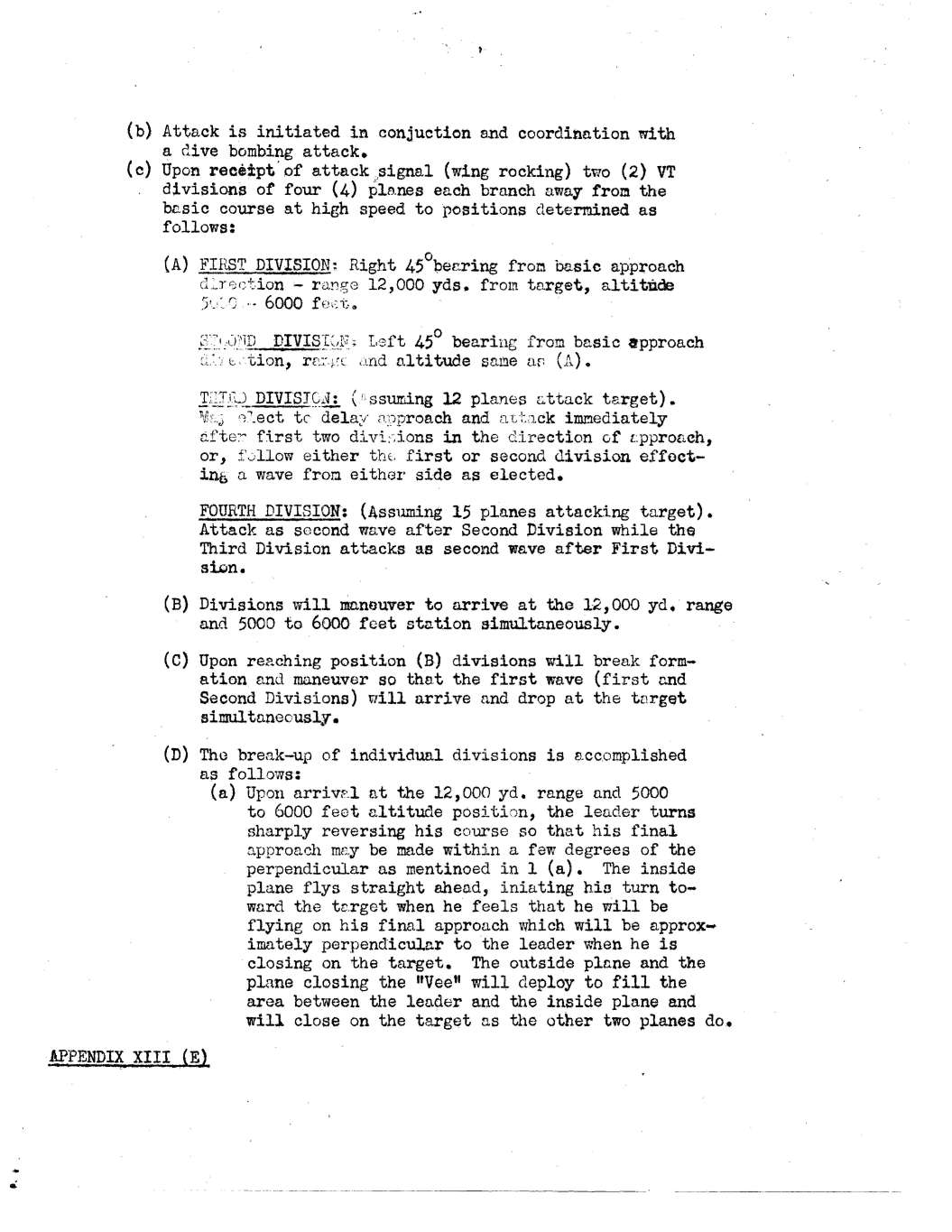
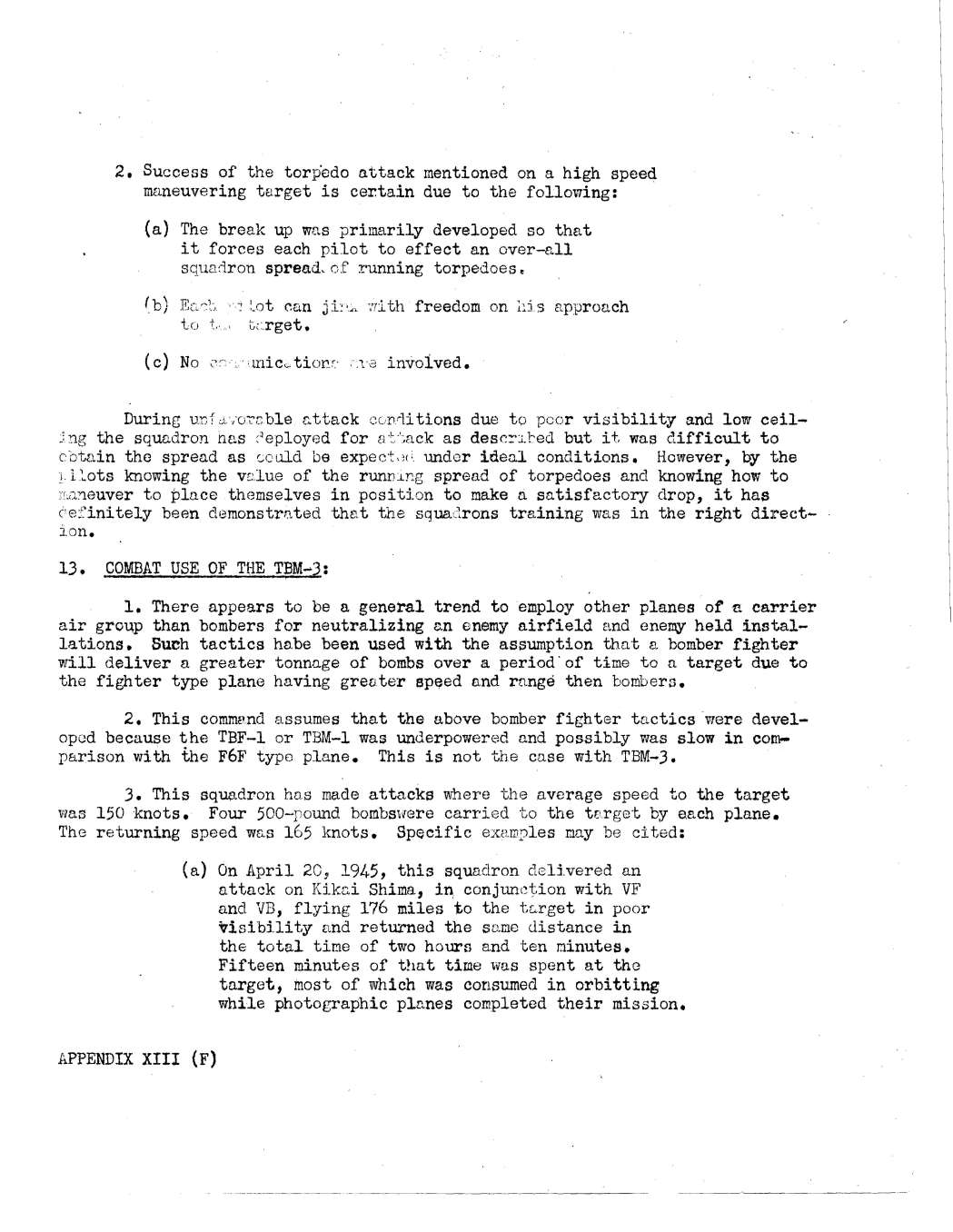
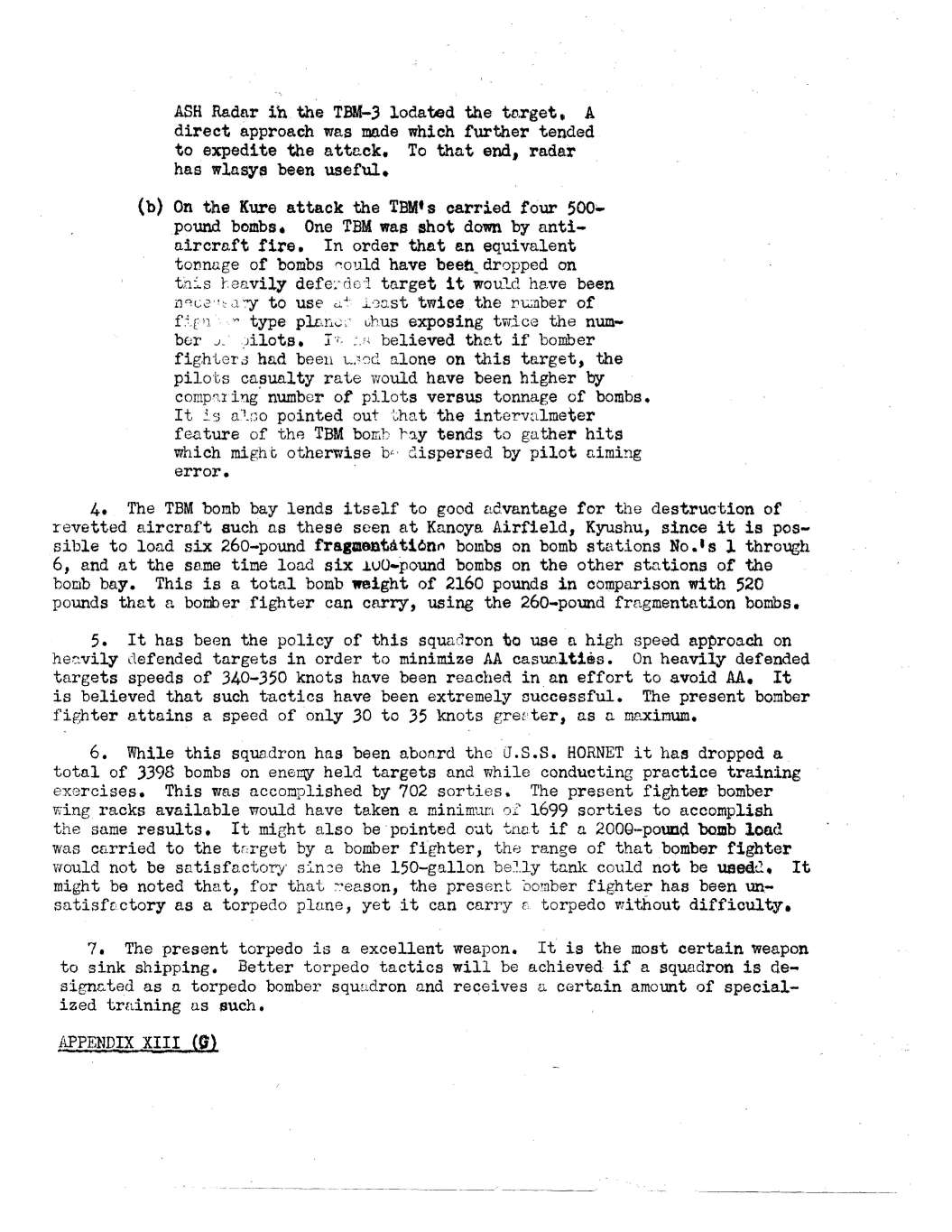
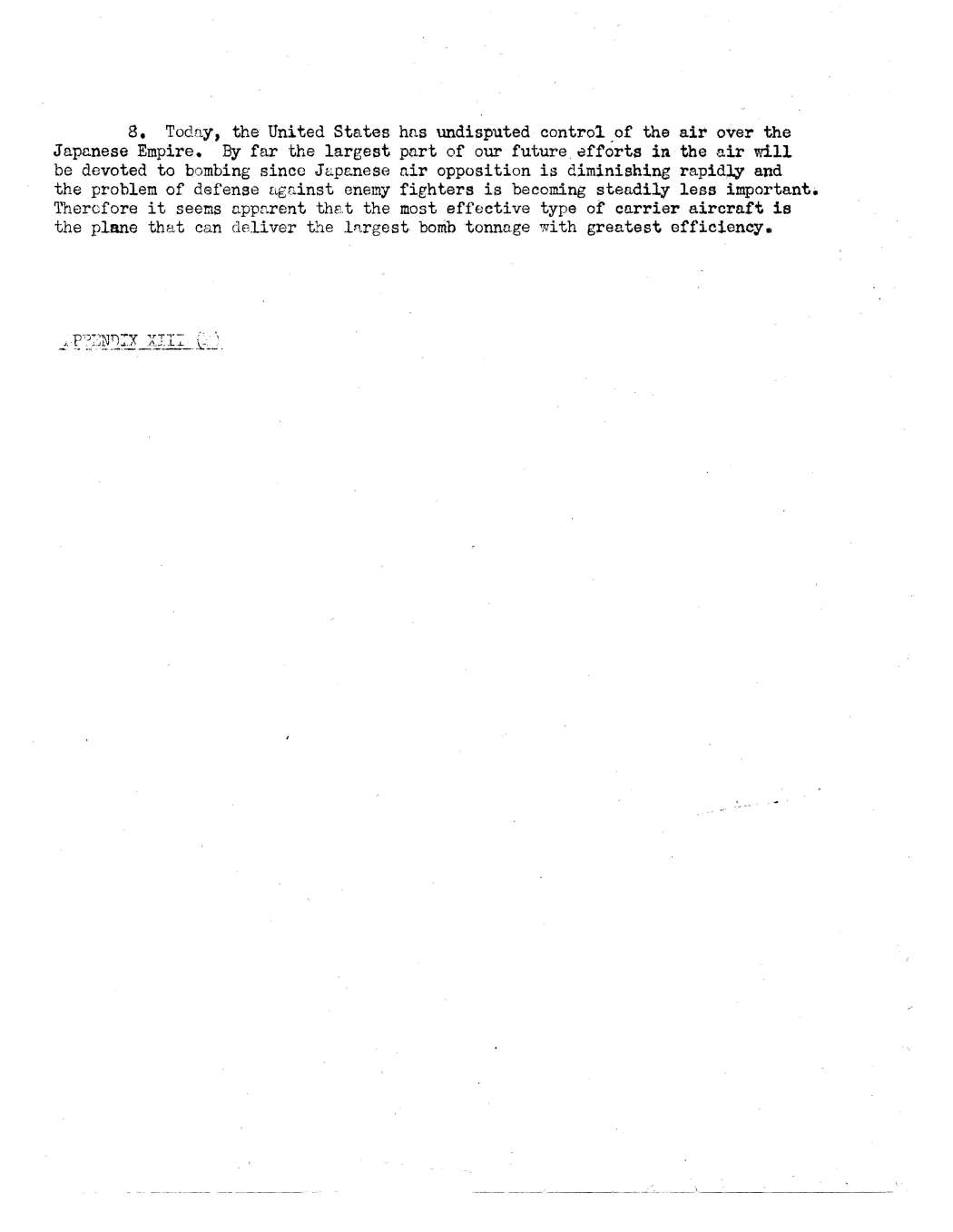
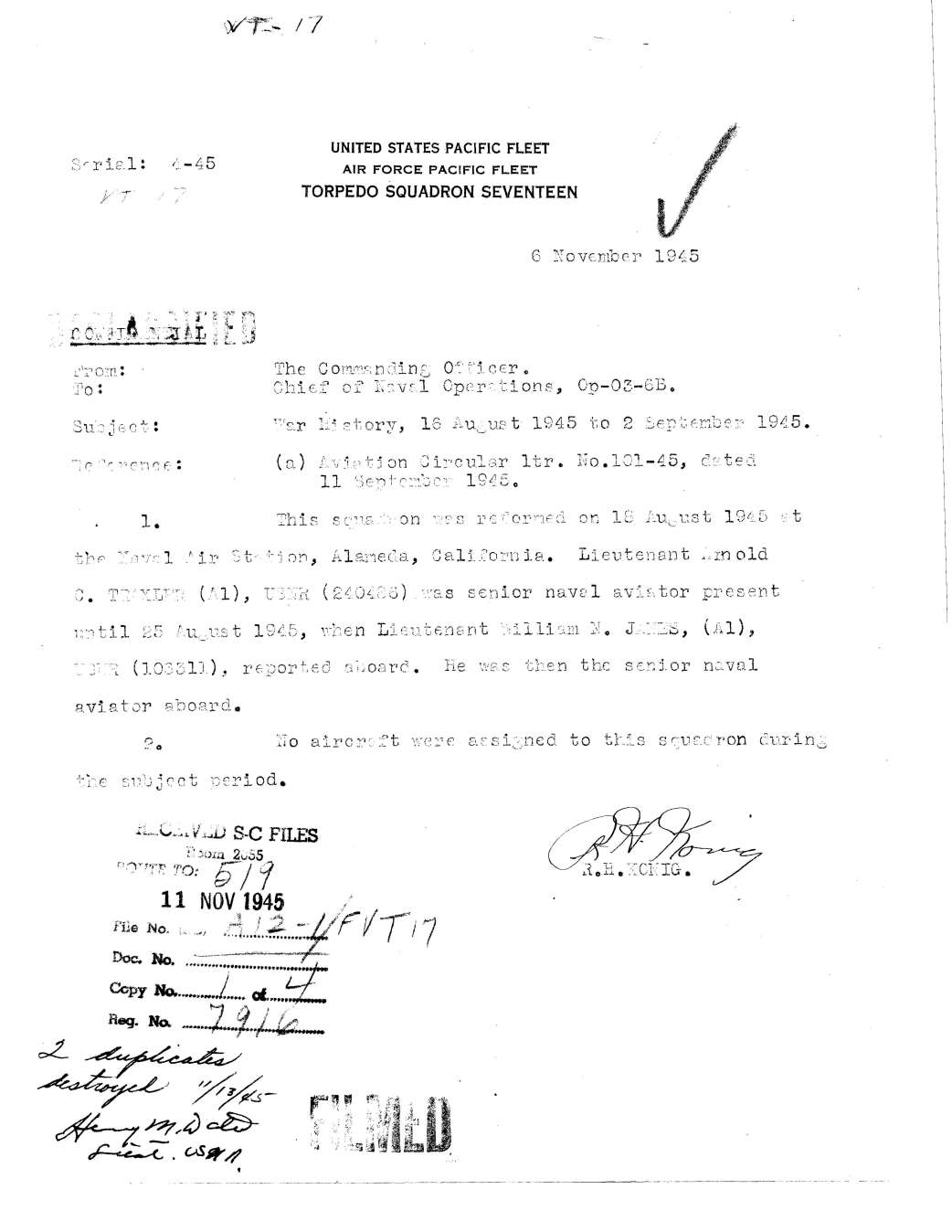
***END***
Jump to VT-17 Historical Report by W. M. Romberger : Click – Part 1 – Part 2 – Part 3 – Part 4 – Part 5 – Part 6 – Part 7
This is section 6, covering sheets 51 through 60 of 65 pages from the archives of the U.S. Navy in a declassified document.
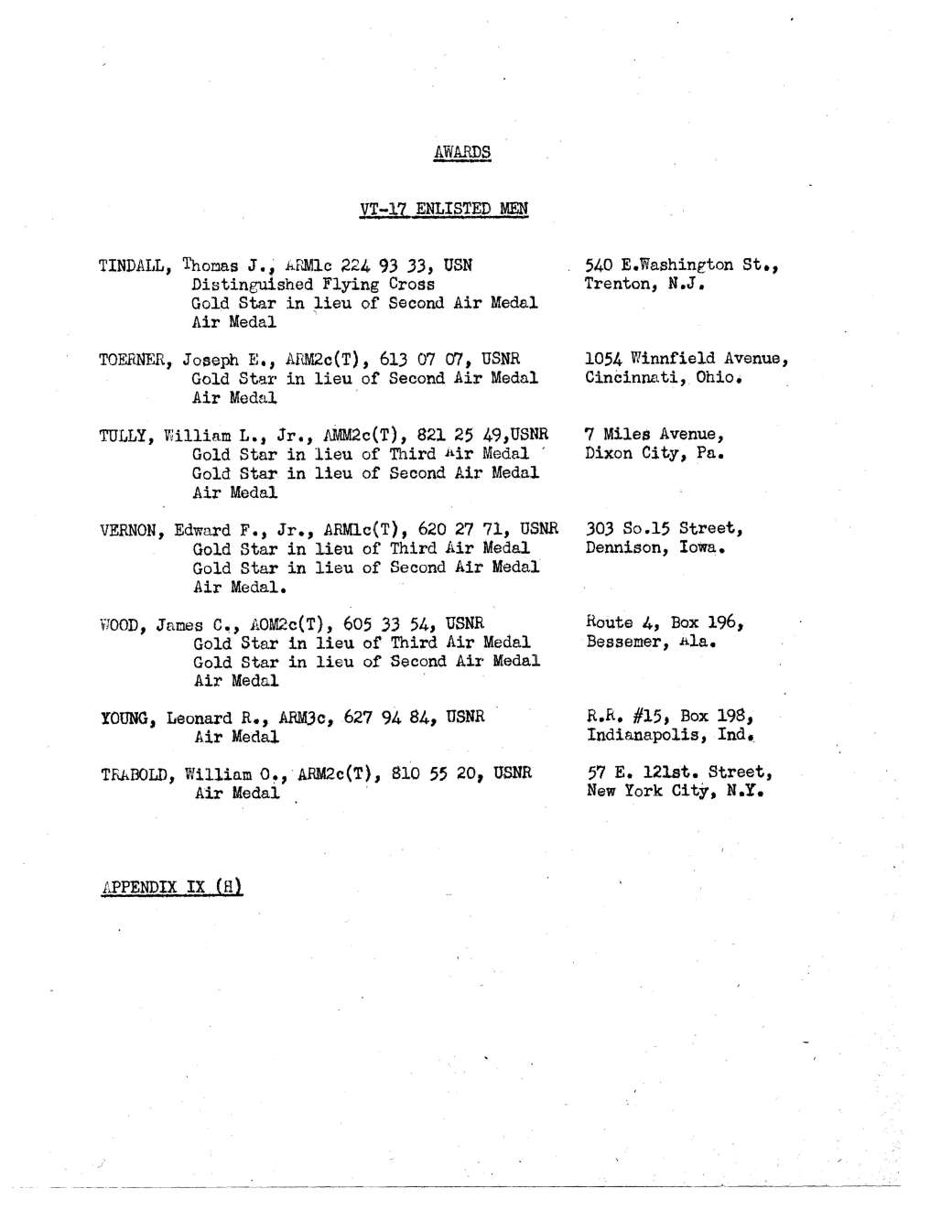
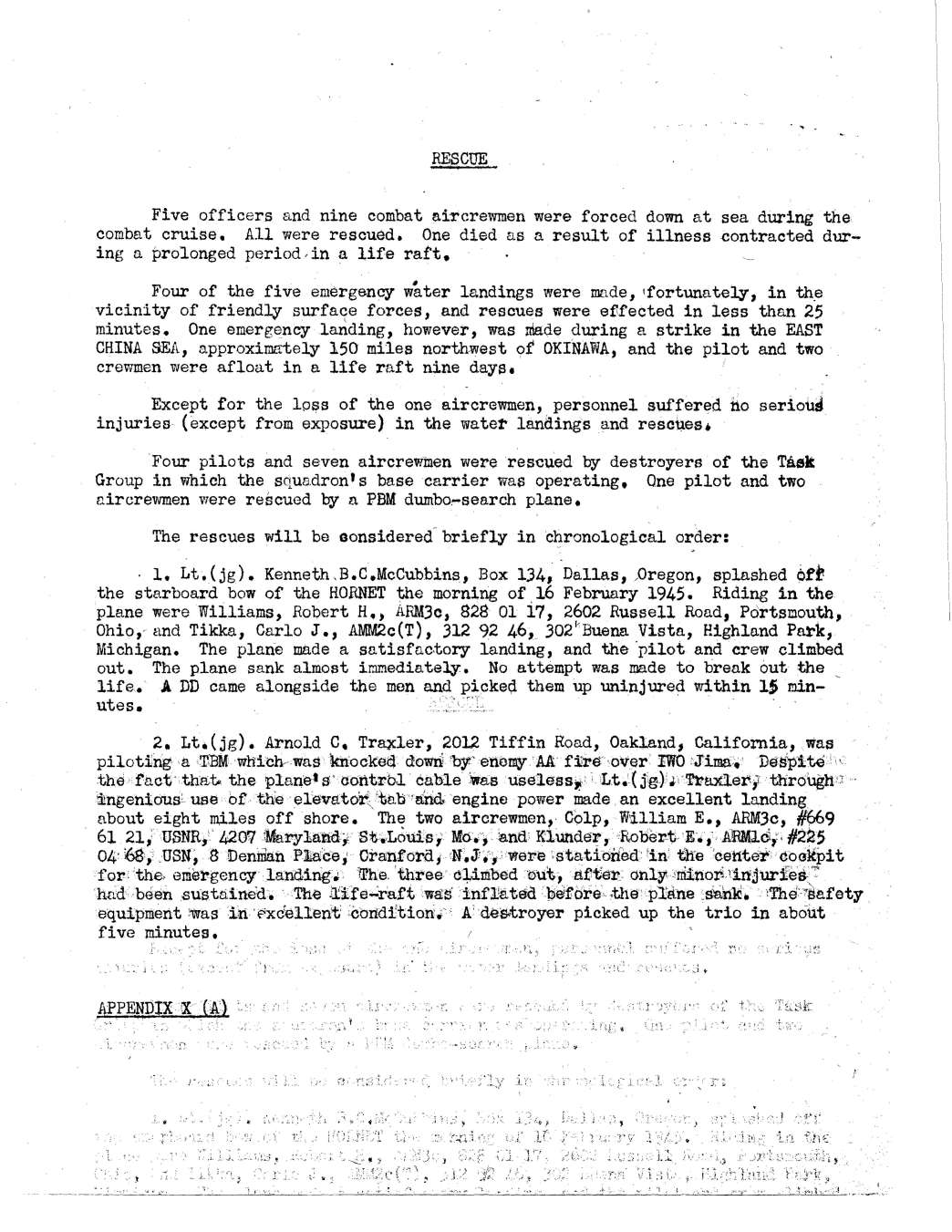
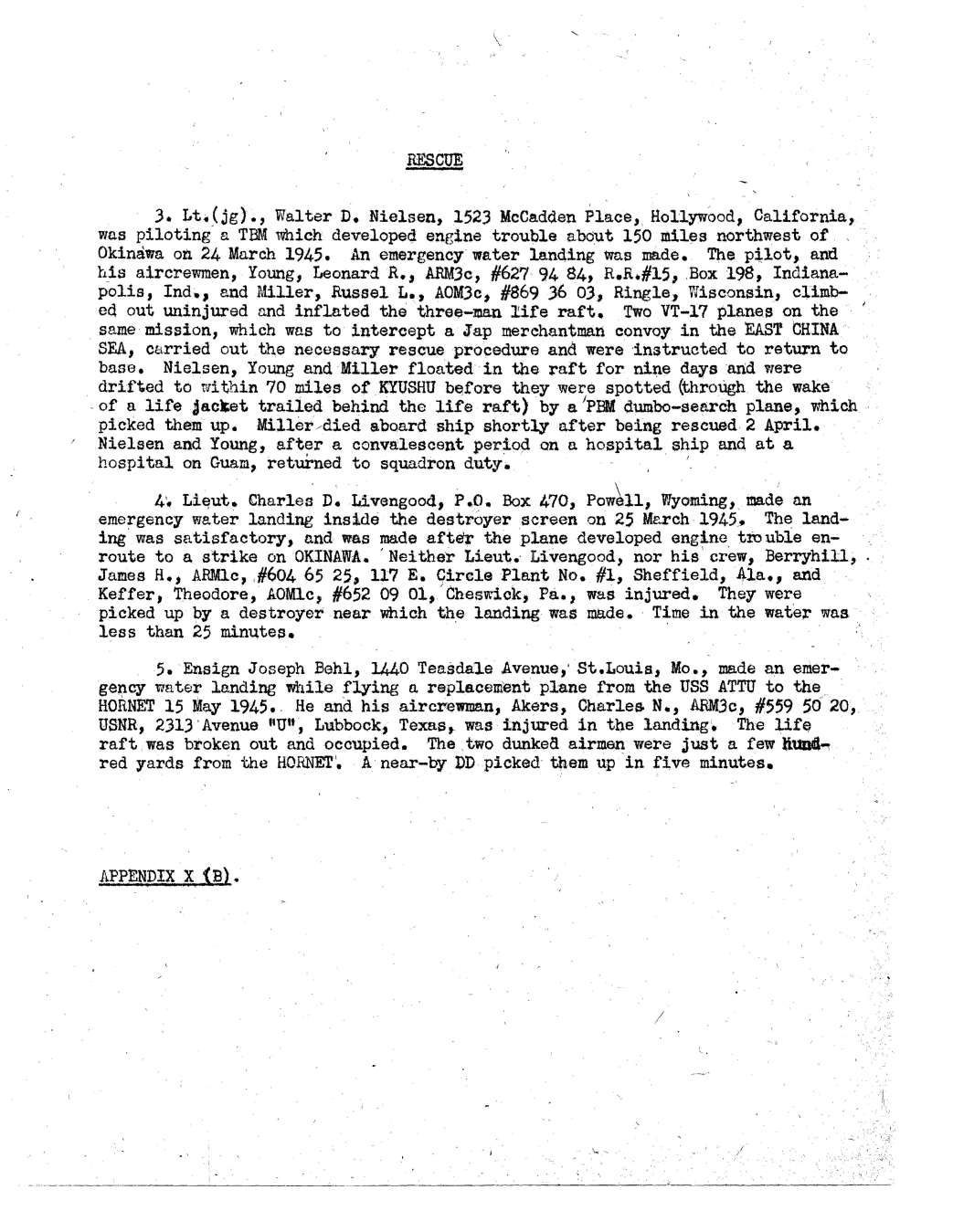
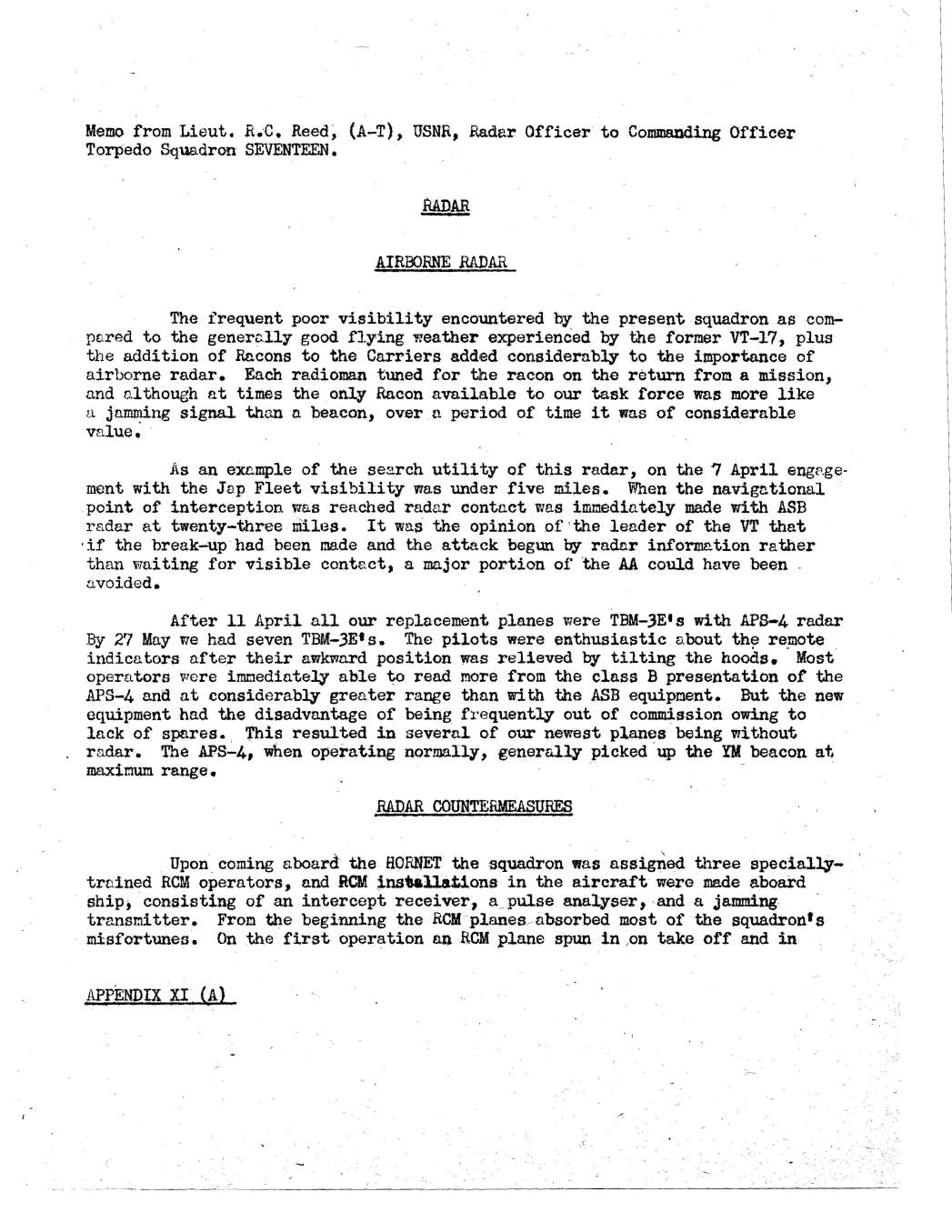
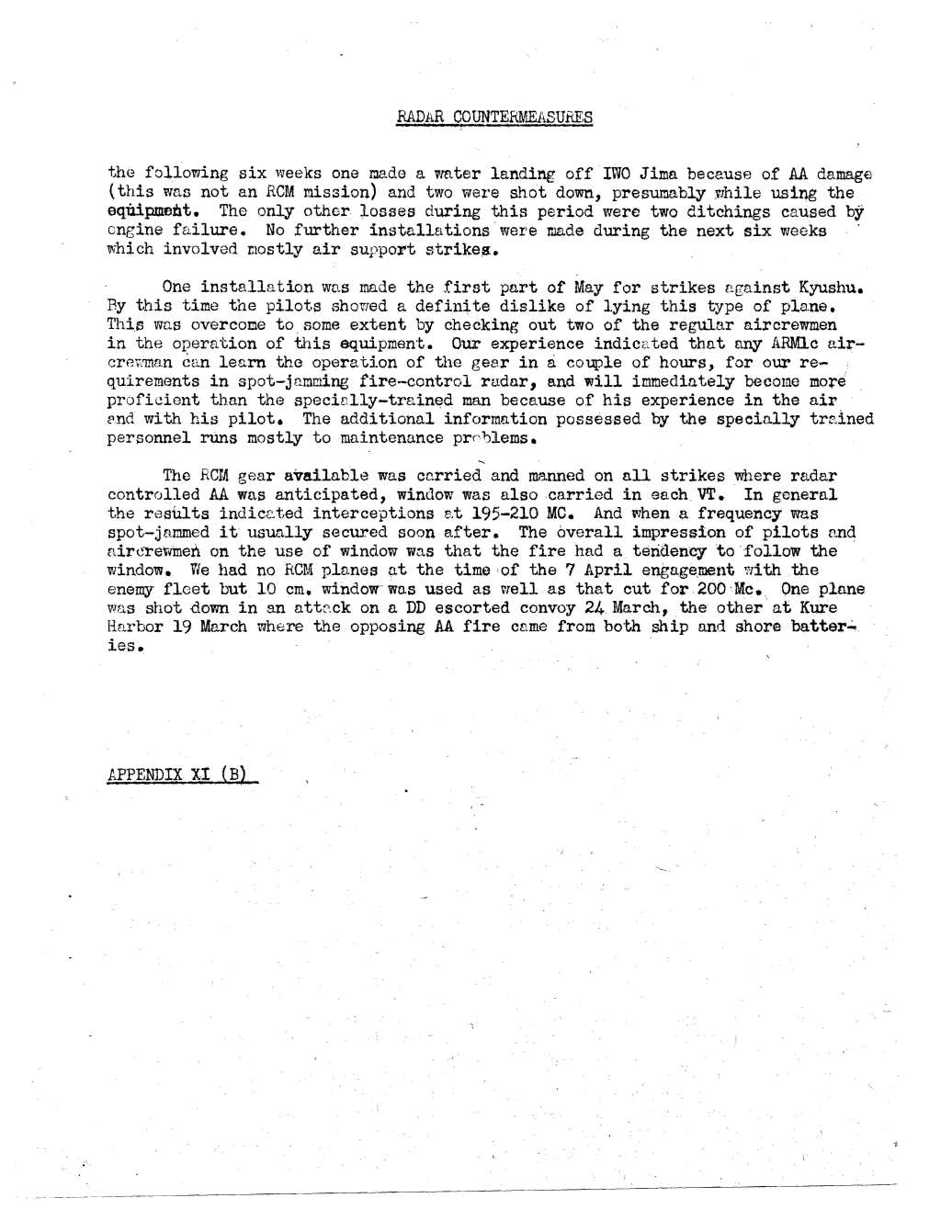

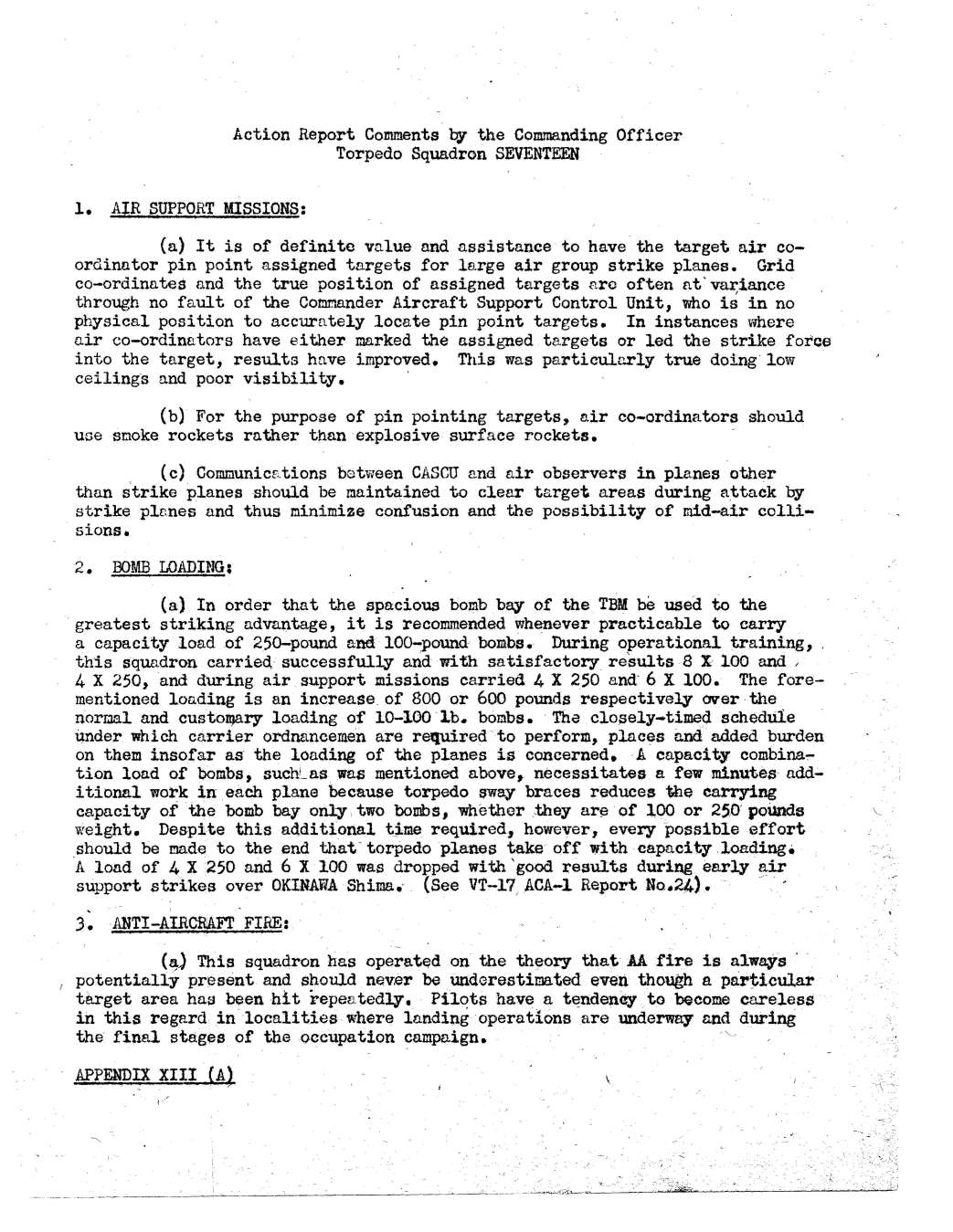
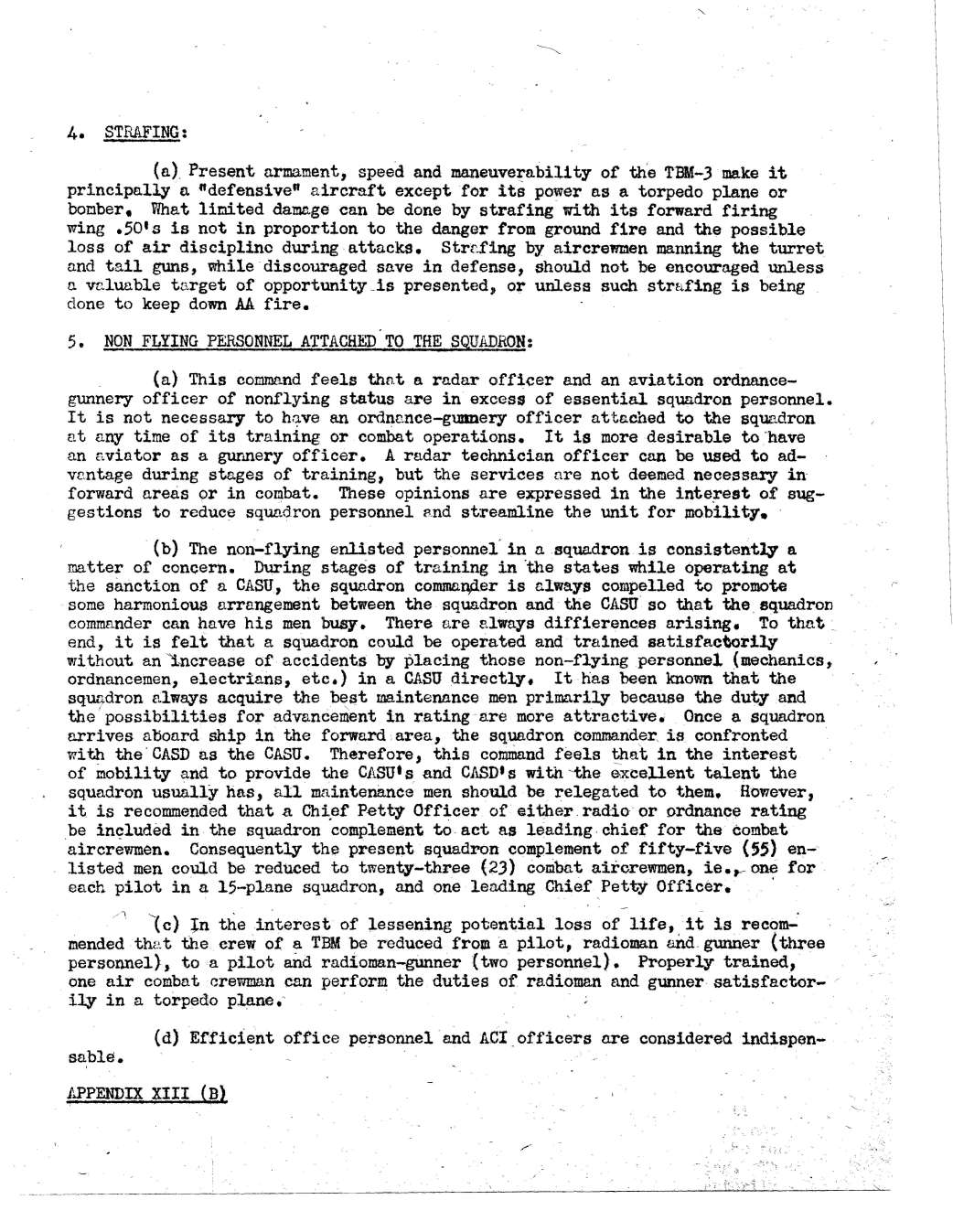
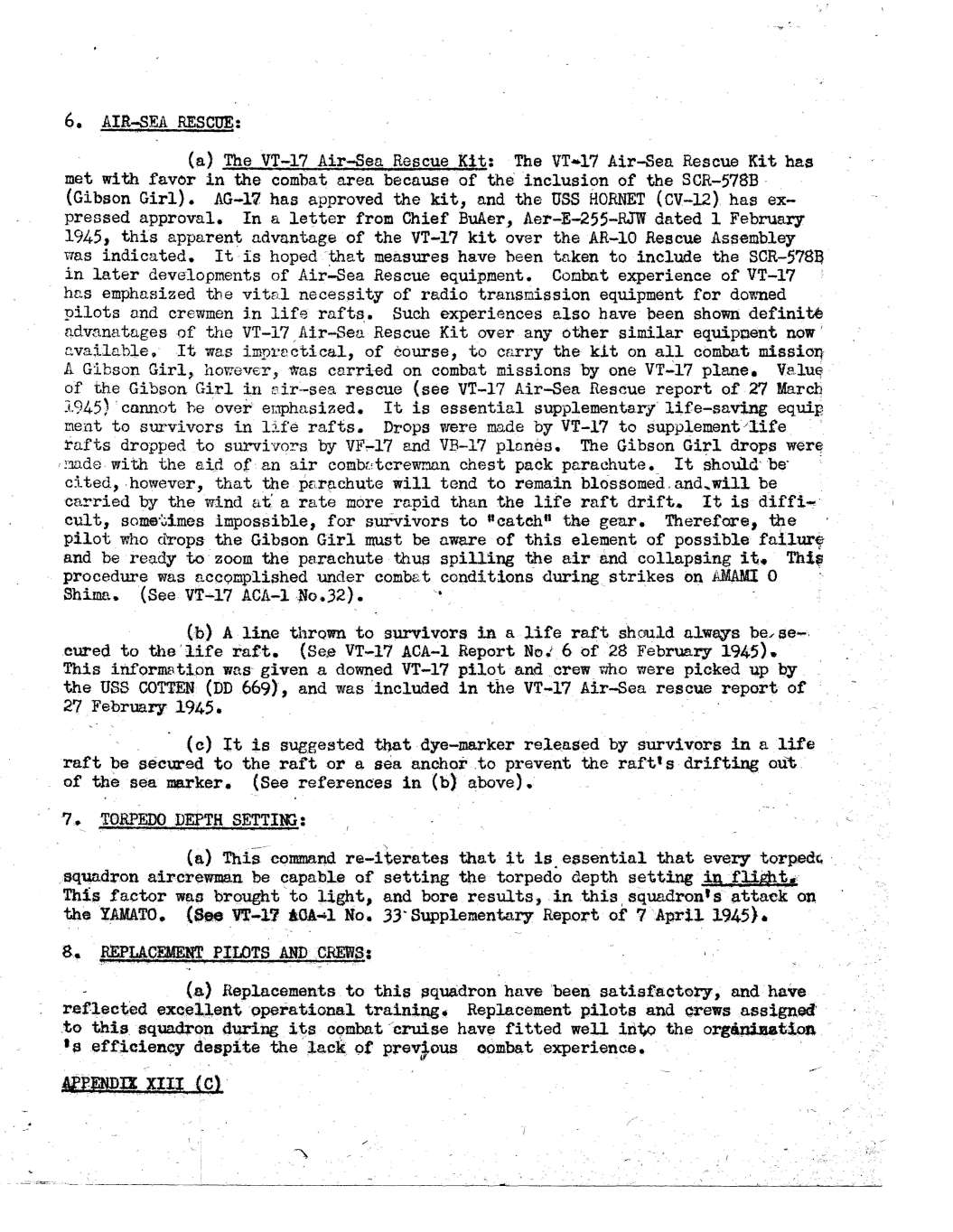
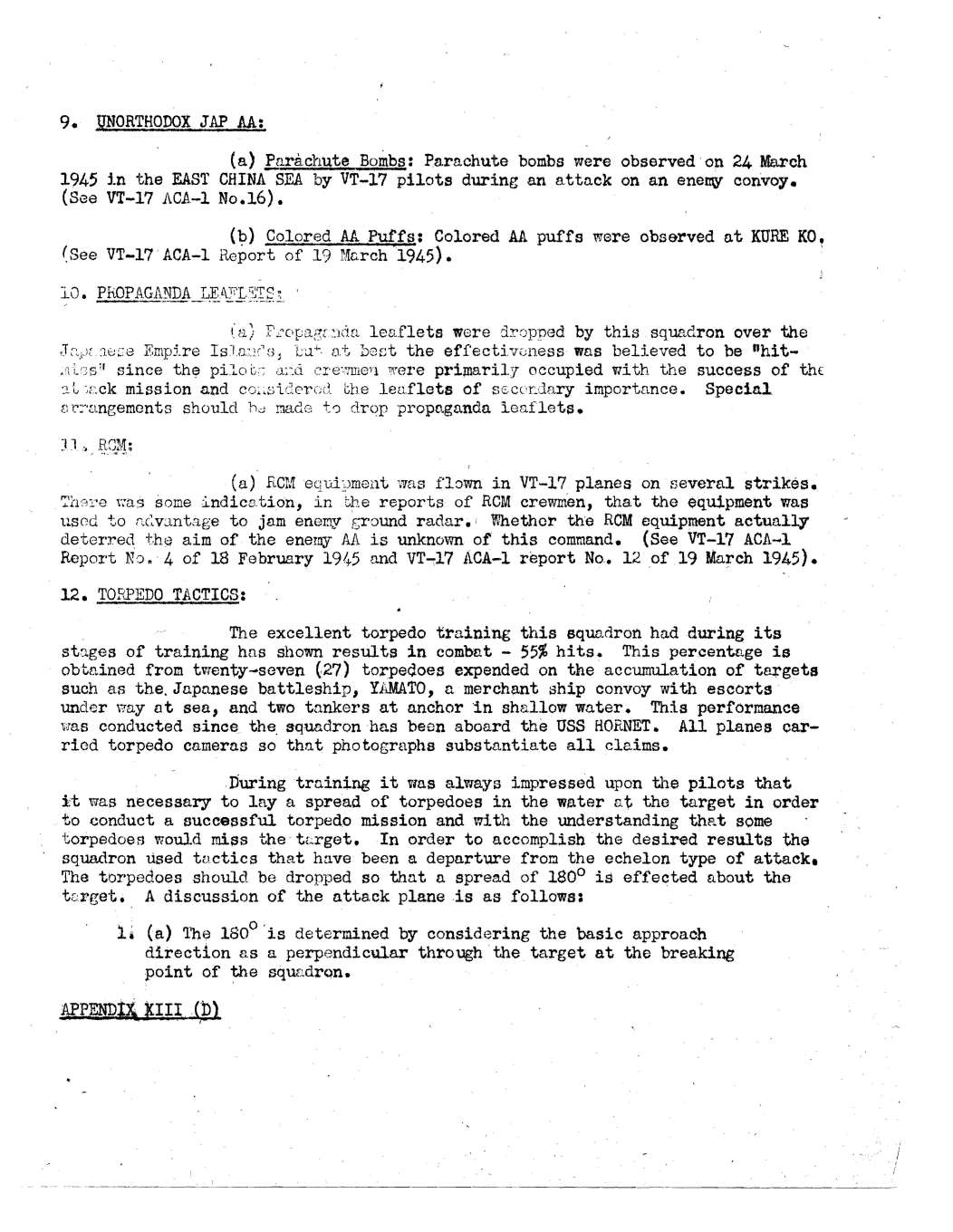
VT-17 Historical Report by W. M. Romberger : Click – Part 1 – Part 2 – Part 3 – Part 4 – Part 5 – Part 6 – Part 7
This is section 5, covering sheets 41 through 50 of 65 pages from the archives of the U.S. Navy in a declassified document.
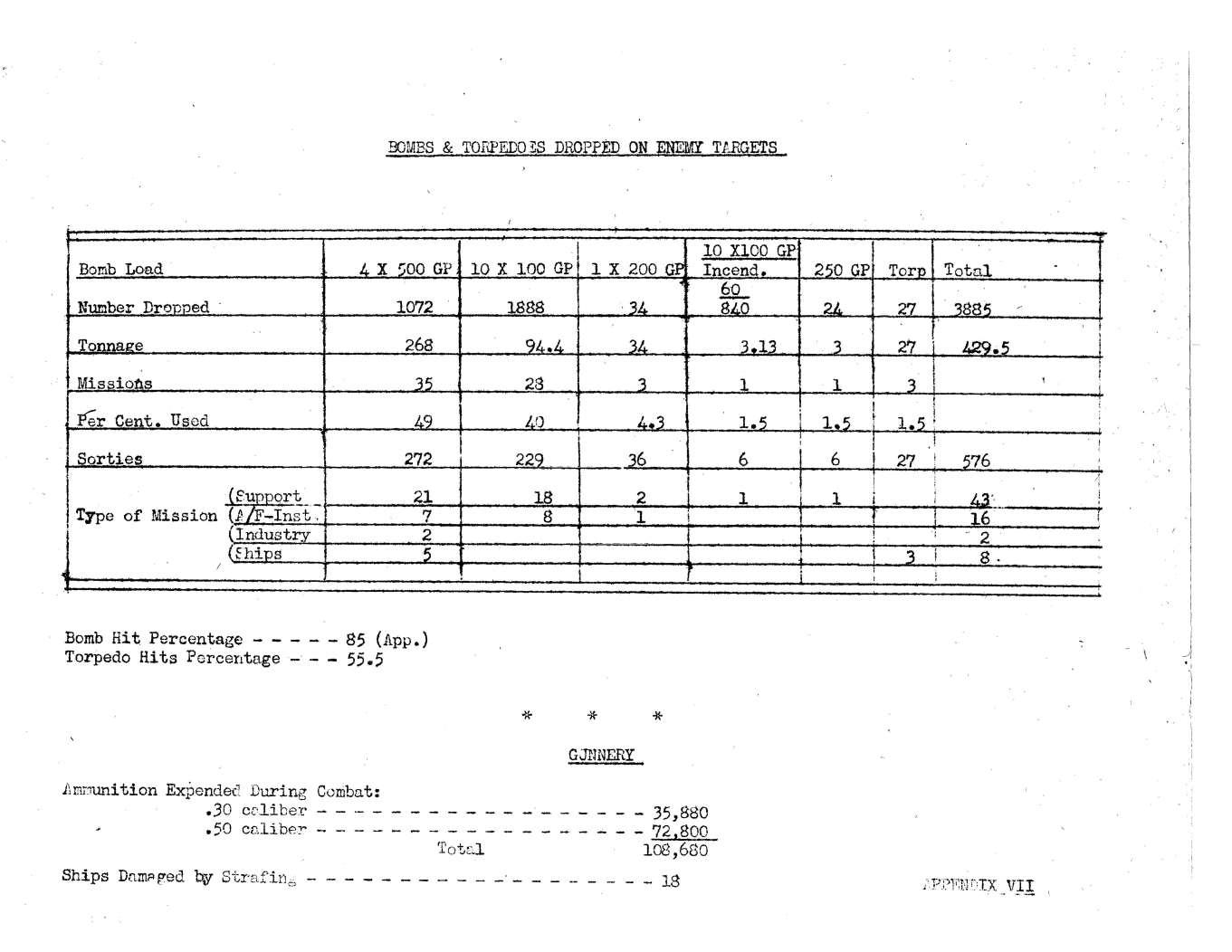
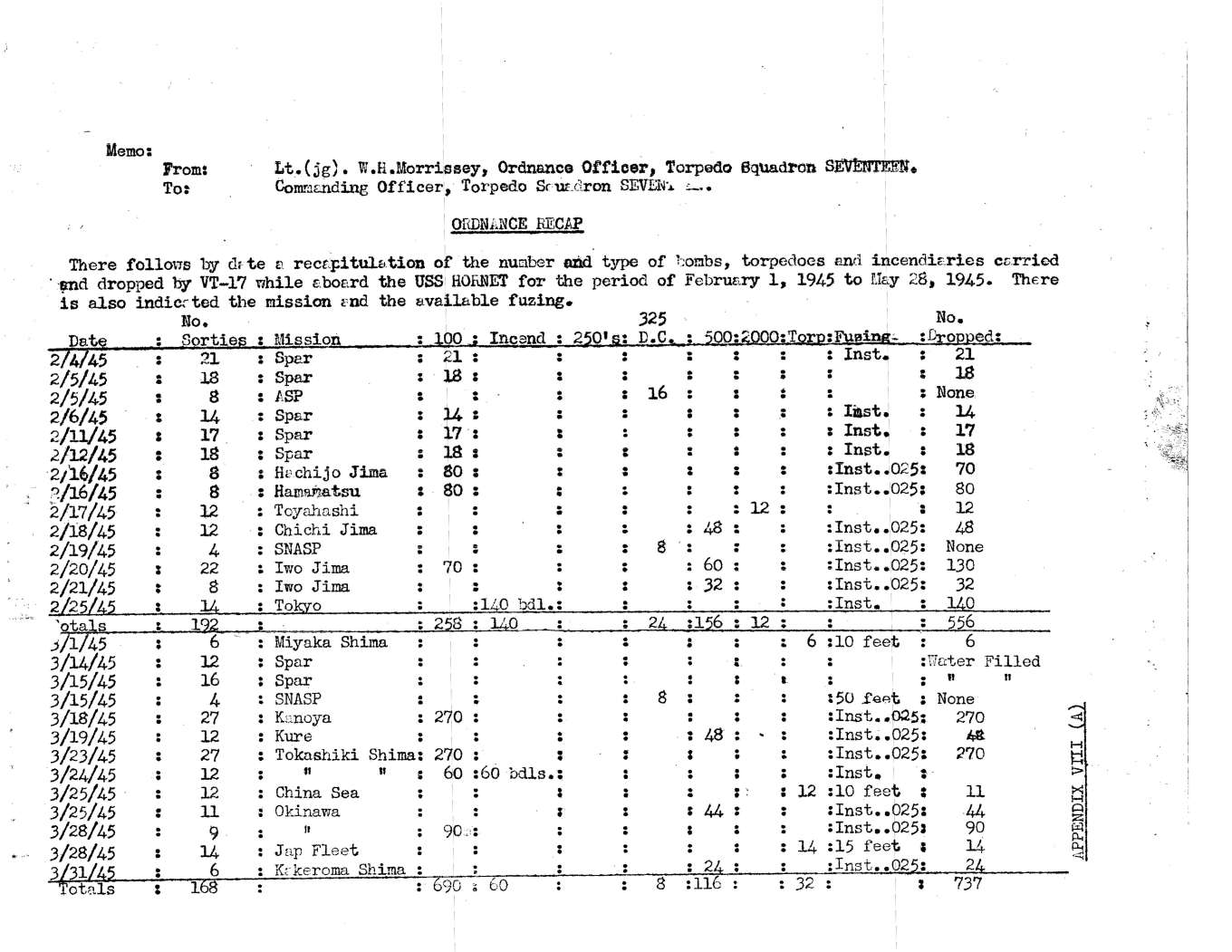
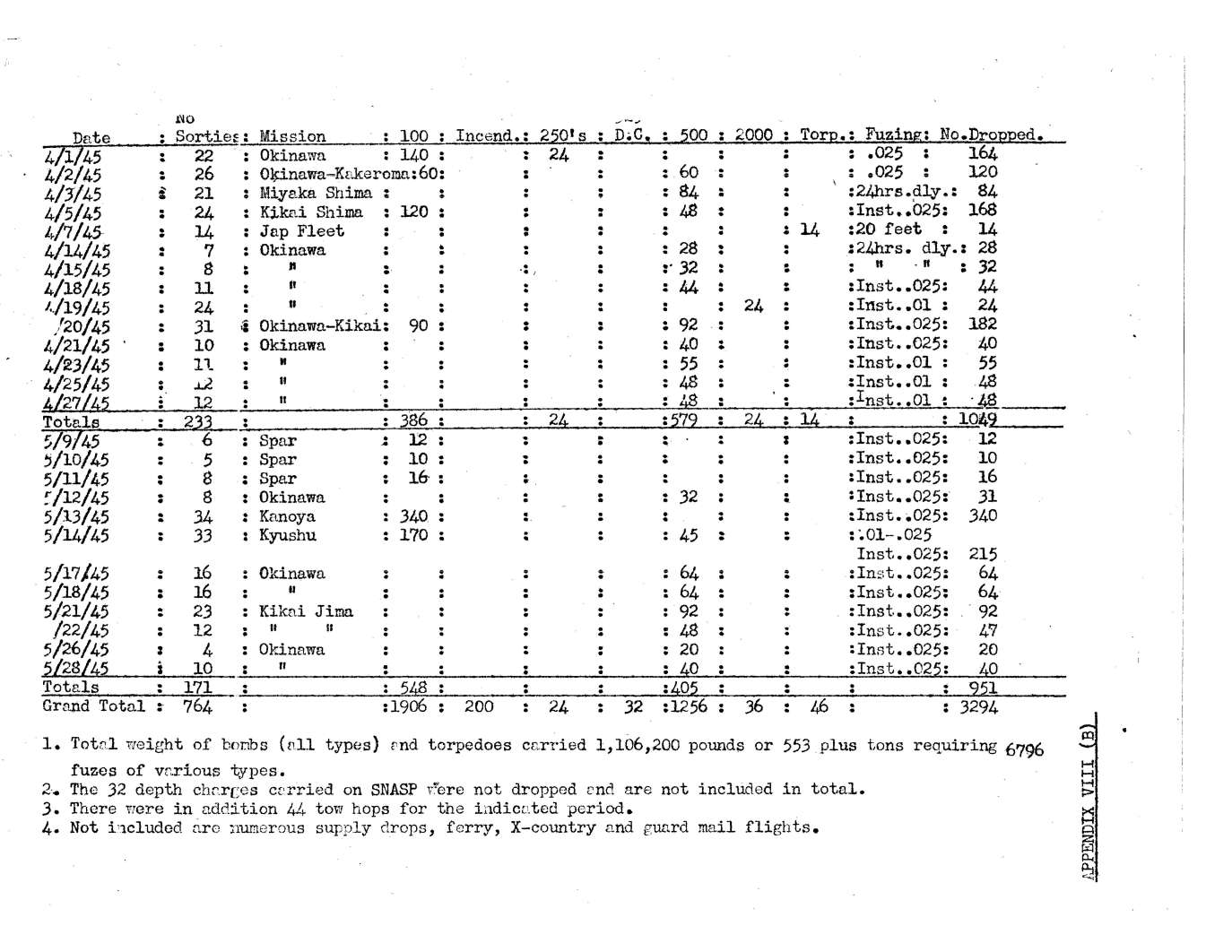
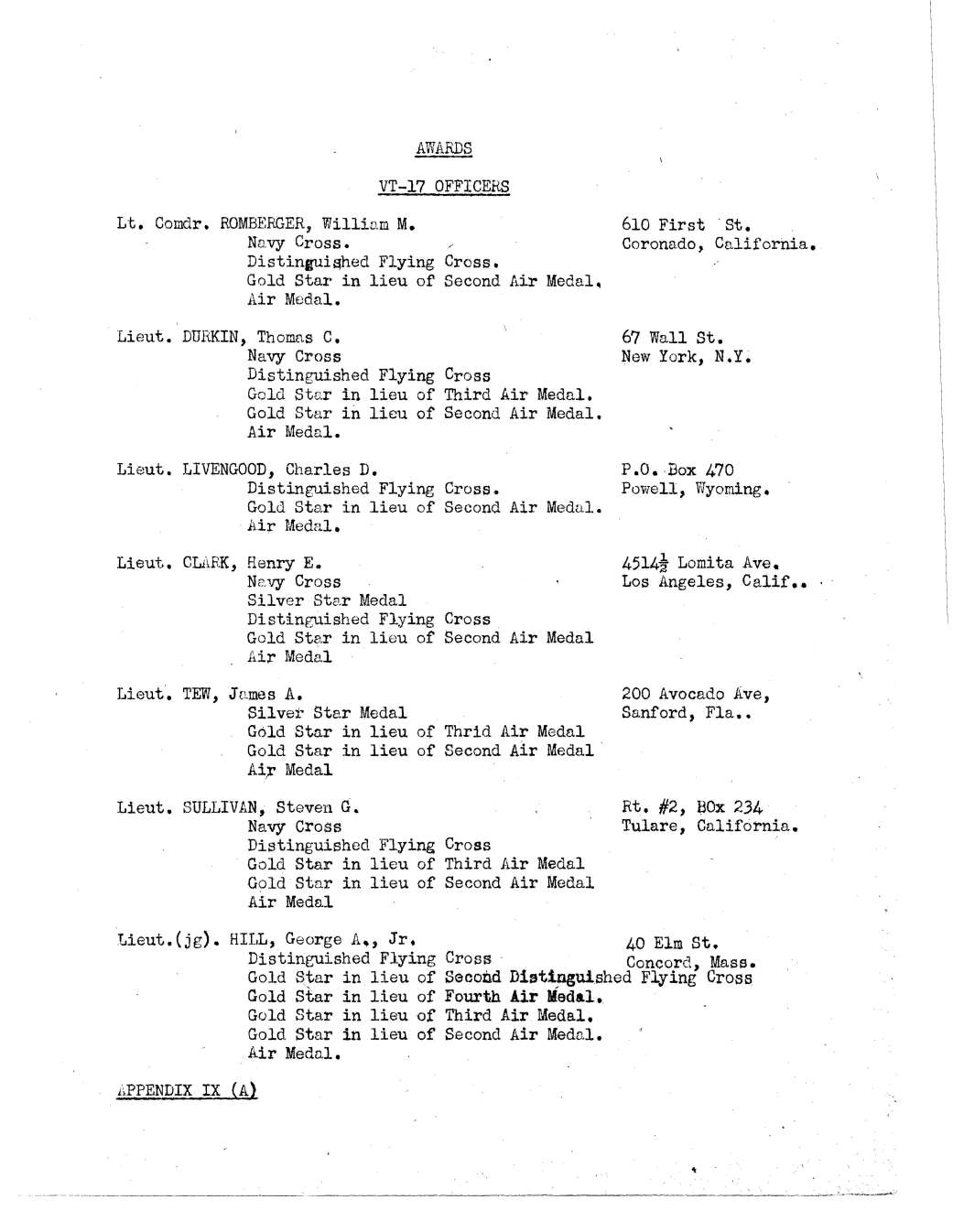
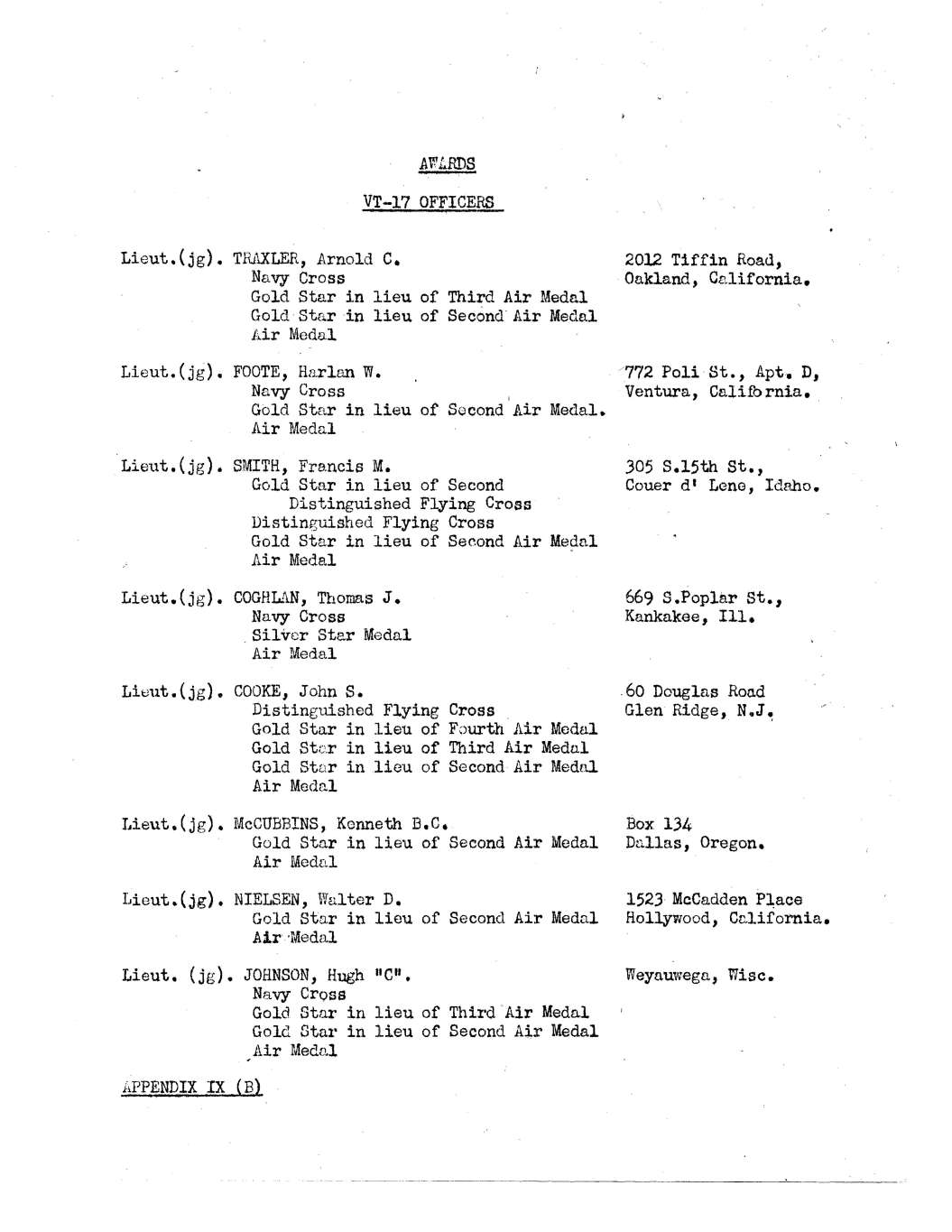
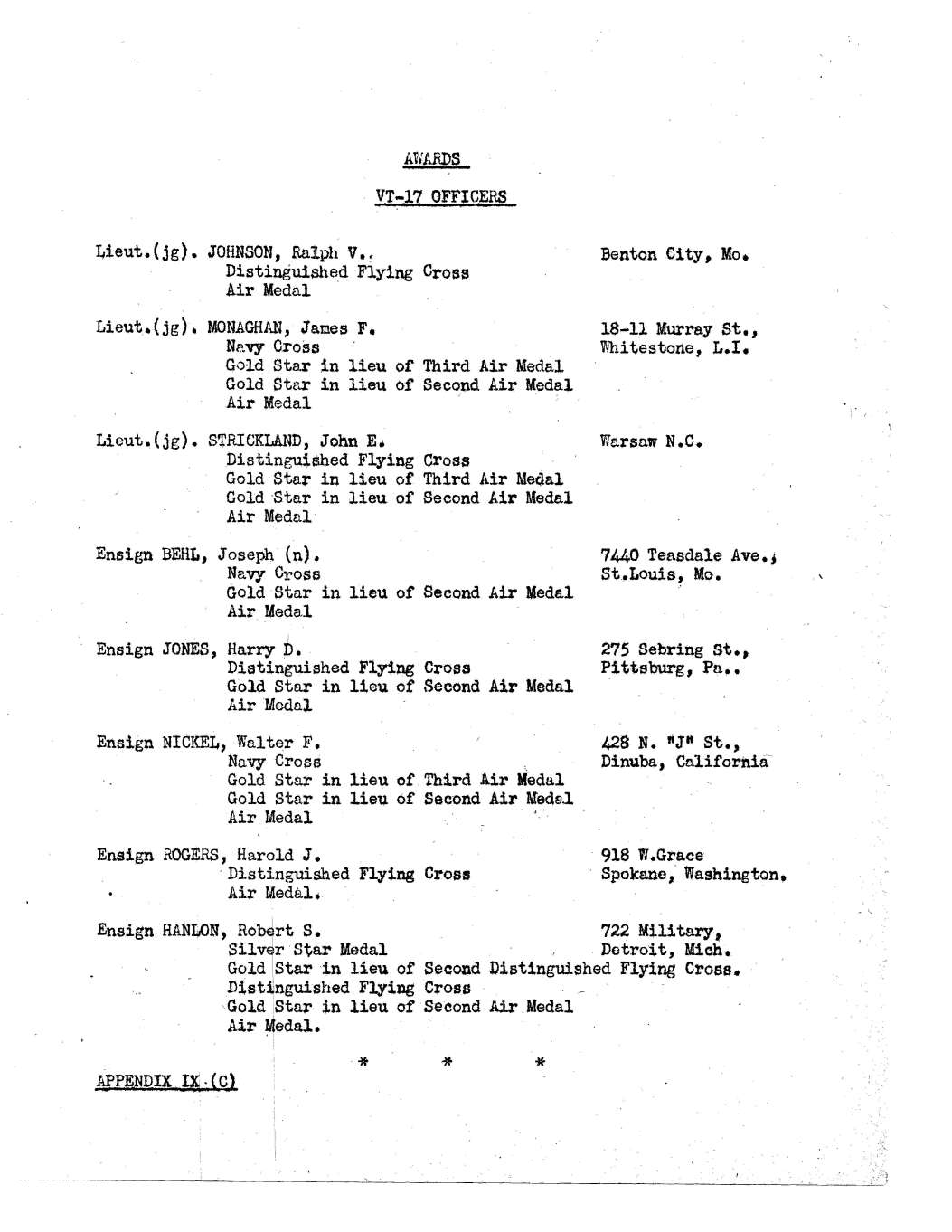
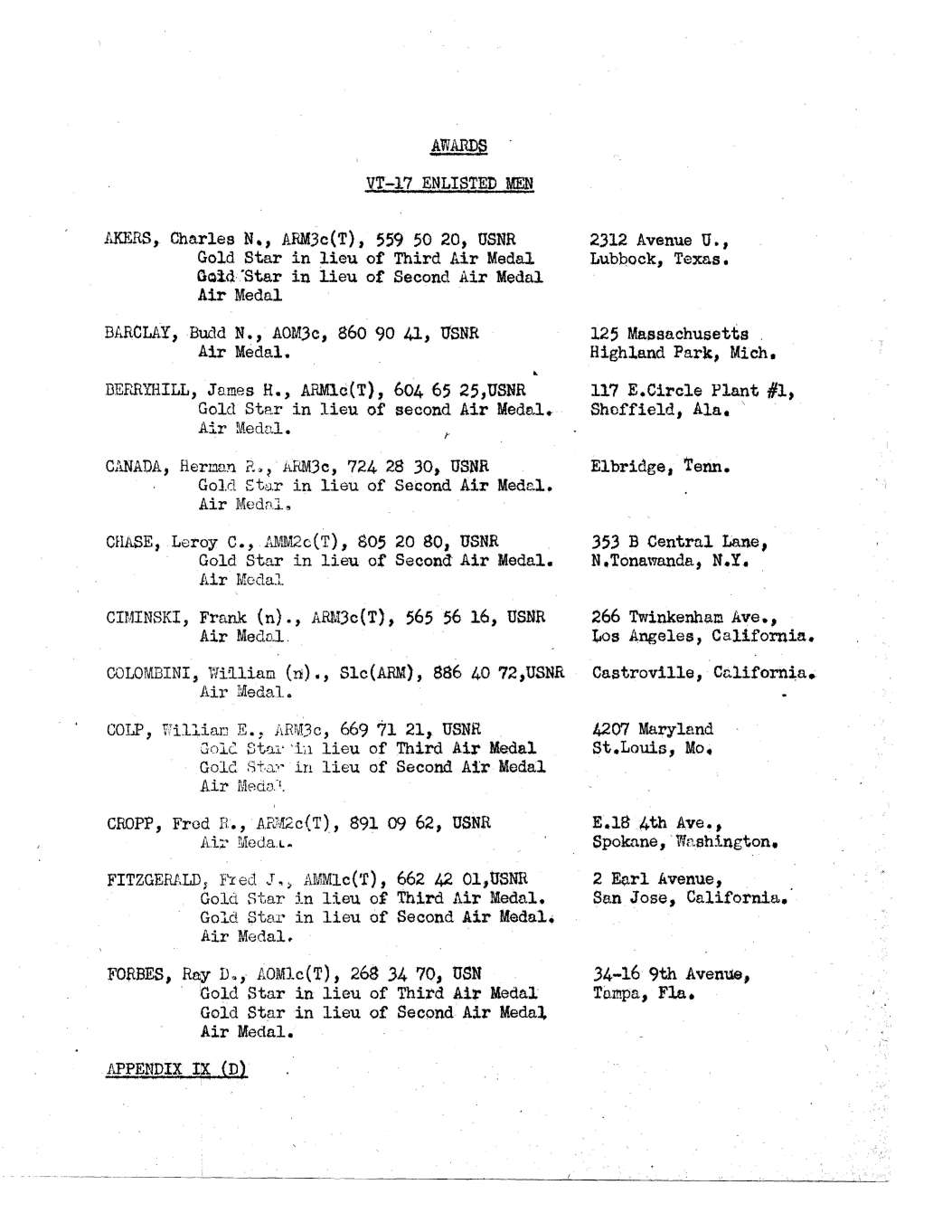
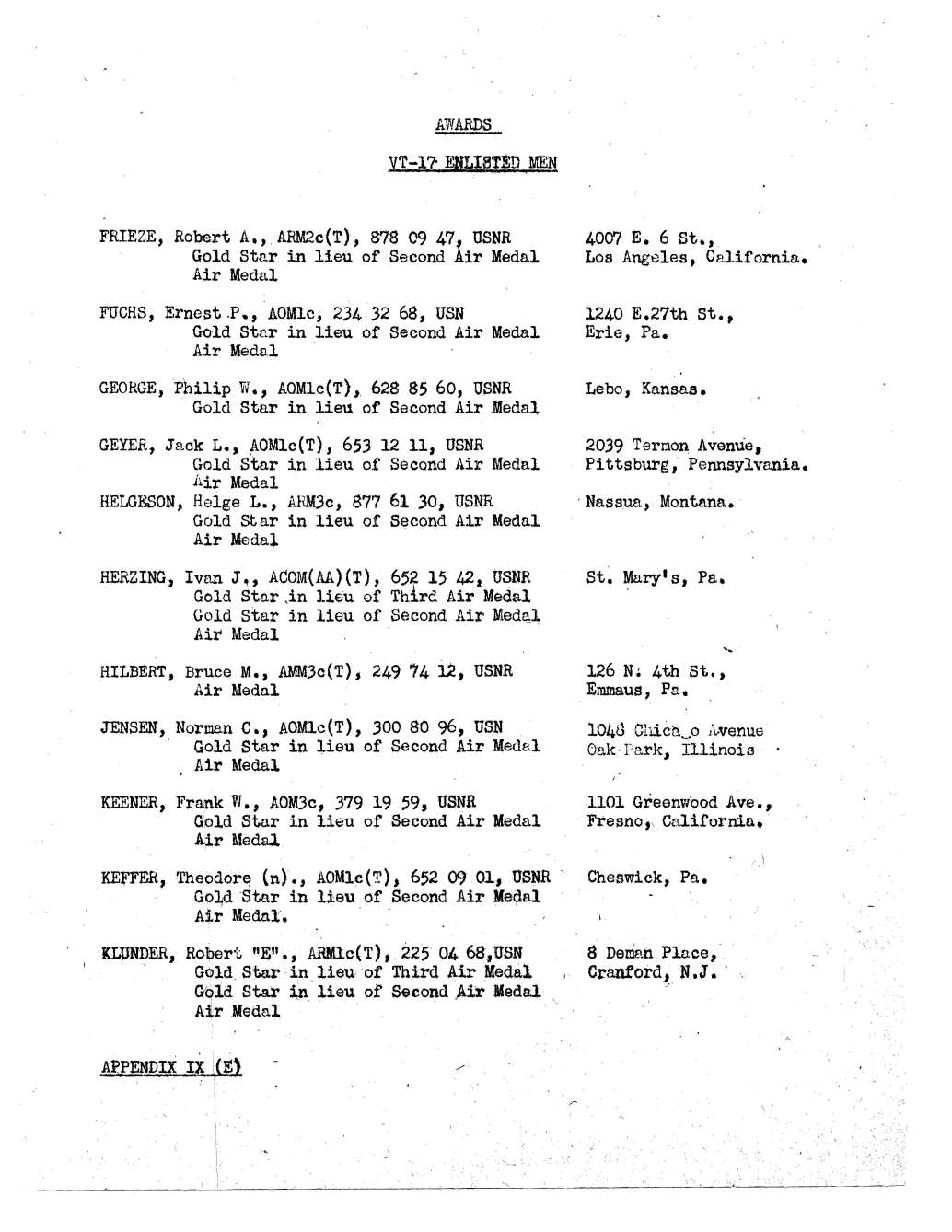
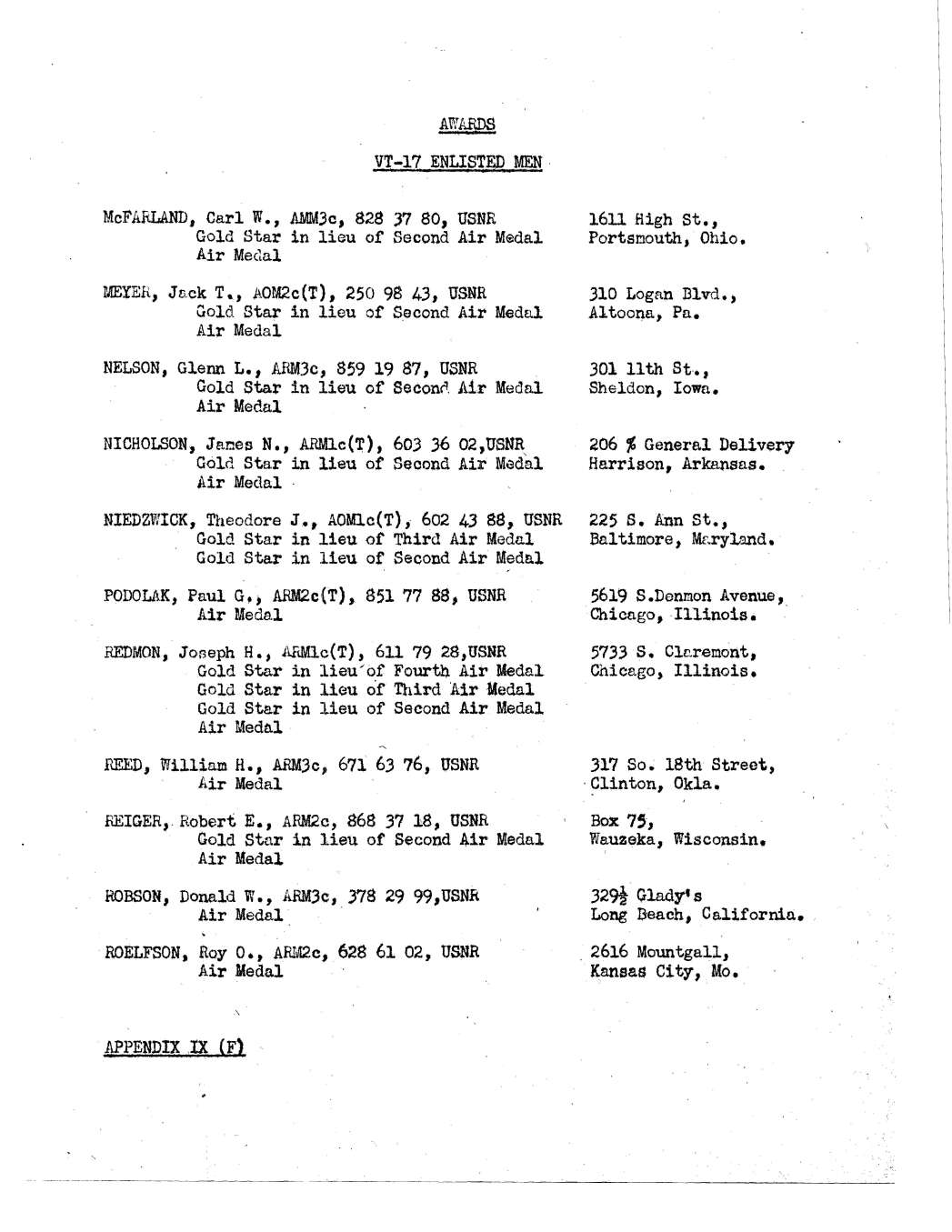
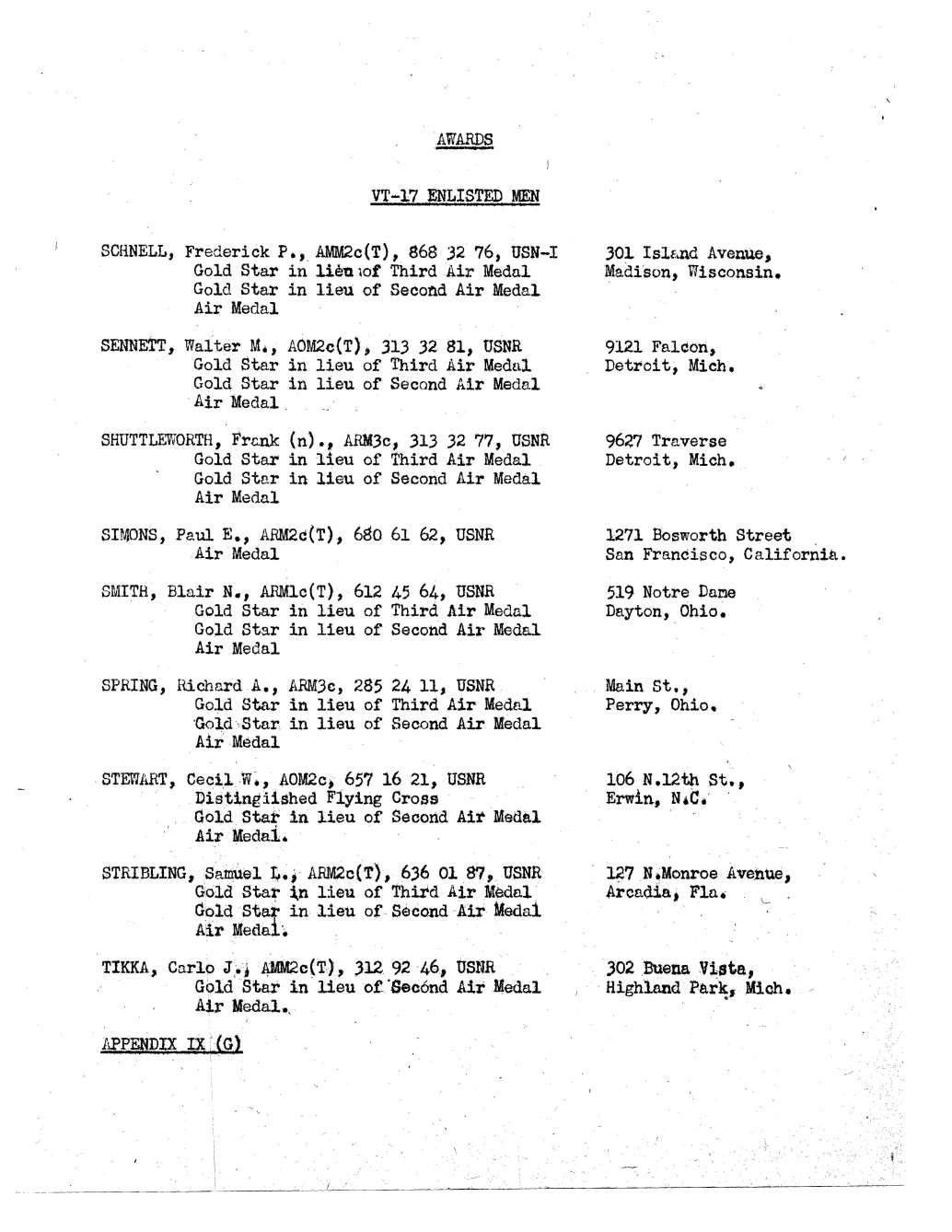
VT-17 Historical Report by W. M. Romberger : Click – Part 1 – Part 2 – Part 3 – Part 4 – Part 5 – Part 6 – Part 7